Contents
Valley of the Kings | Introduction
The Valley of the Kings is located on the west bank of Luxor, serving as the burial site for the pharaohs of ancient Egypt's New Kingdom. Starting from the 18th dynasty, this secluded valley became the eternal resting place for pharaohs and nobles. To avoid attracting tomb raiders like the Great Pyramids of Giza, the pharaohs of the New Kingdom chose to hide their tombs in the rugged terrain of this valley. To date, 65 tombs have been discovered, including those of several famous pharaohs. The dry climate of the region has preserved many valuable wall paintings and artifacts within the tombs, making the Valley of the Kings one of the most significant tourist attractions in Egypt.
🧳 A full travel resource kit for this topic is currently in the works.
It will include itinerary plans, recommended stays, custom maps, and useful tips.
Valley of the Kings | Itinerary Planning and Transportation
If your time in Luxor is limited, it is recommended to allocate half a day to a full day to explore the Valley of the Kings. Located about 20–30 minutes by car from Luxor city, transportation options include hiring a private car or joining a day tour.
Hiring a private car is the most flexible option, allowing you to adjust your schedule freely and spend more time at the tombs you prefer. If you join a day tour, the Valley of the Kings is typically included with visits to the Temple of Hatshepsut and other west bank sites, making it a convenient option for hassle-free travelers. Additionally, tourists on Nile cruise tours often include the Valley of the Kings in their group itineraries, which is ideal for those who do not wish to plan transportation themselves.
Luxor private chartered car with tour guide
Luxor Charters
Nile Cruise from Aswan to Luxor
- Hotel search: Agoda
- Activities & tickets: KKday / Klook / TripAdvisor
- Travel credit cards (US only): My card picks + beginner tips
Valley of the Kings | Ticket Information
The Valley of the Kings offers two types of tickets: the basic ticket and additional tickets. The basic ticket allows you to visit three open tombs, while special tombs like Tutankhamun’s (KV62), Seti I’s (KV17), and Ramses VI’s (KV9) require additional tickets. The list of open tombs rotates daily, so it’s recommended to check the latest information on the official ticketing website.
Since the tombs are spread out and the weather is very hot, it is advisable to purchase an electric vehicle ticket to save walking time and energy. Tickets are typically available for one-way or round-trip rides, and it’s recommended to choose the round-trip option for convenience.
Valley of the Kings | Background Knowledge
The Valley of the Kings is surrounded by rugged terrain and mountains. The dry climate has preserved many artifacts within the tombs to this day. The pharaohs of the New Kingdom chose this location for its secluded nature and the symbolic pyramid-shaped peaks surrounding it, which represented "rebirth" in ancient Egyptian culture. To the east of the valley lies a view of the Nile River, which symbolized life and rebirth to the ancient Egyptians. Here, the pharaohs hoped to pass through the judgment of the afterlife and enter eternal bliss.
Did this strategy of concealment work? While moving the burial grounds to the valley delayed looting, most tombs in the Valley of the Kings still fell victim to ancient tomb raiders over the centuries.
At the visitor center, you can view a 3D model of the entire Valley of the Kings. It’s worth taking a short stop to get a general idea of the tomb layouts before your visit. Each pharaoh's tomb structure is slightly different, but most consist of a sloping corridor or passage leading downward to the main hall or burial chamber. The walls and ceilings are adorned with paintings depicting texts from the Book of the Dead, mythological stories, or royal life.
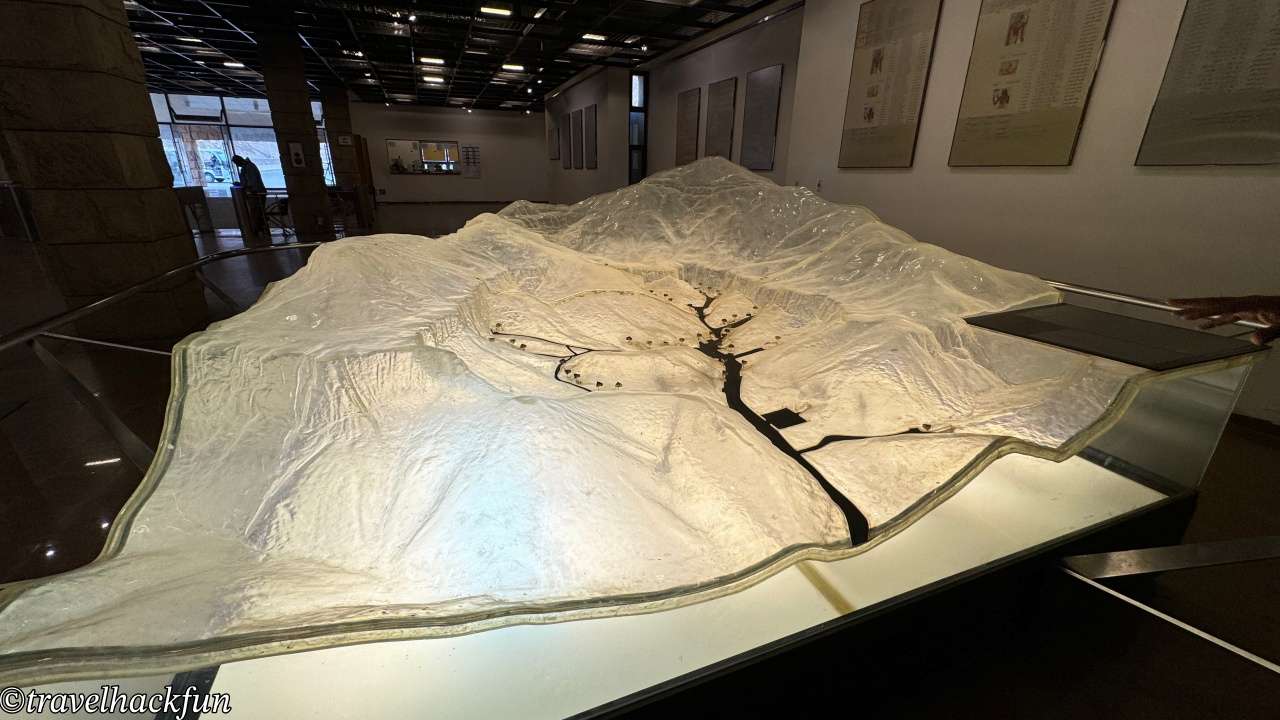
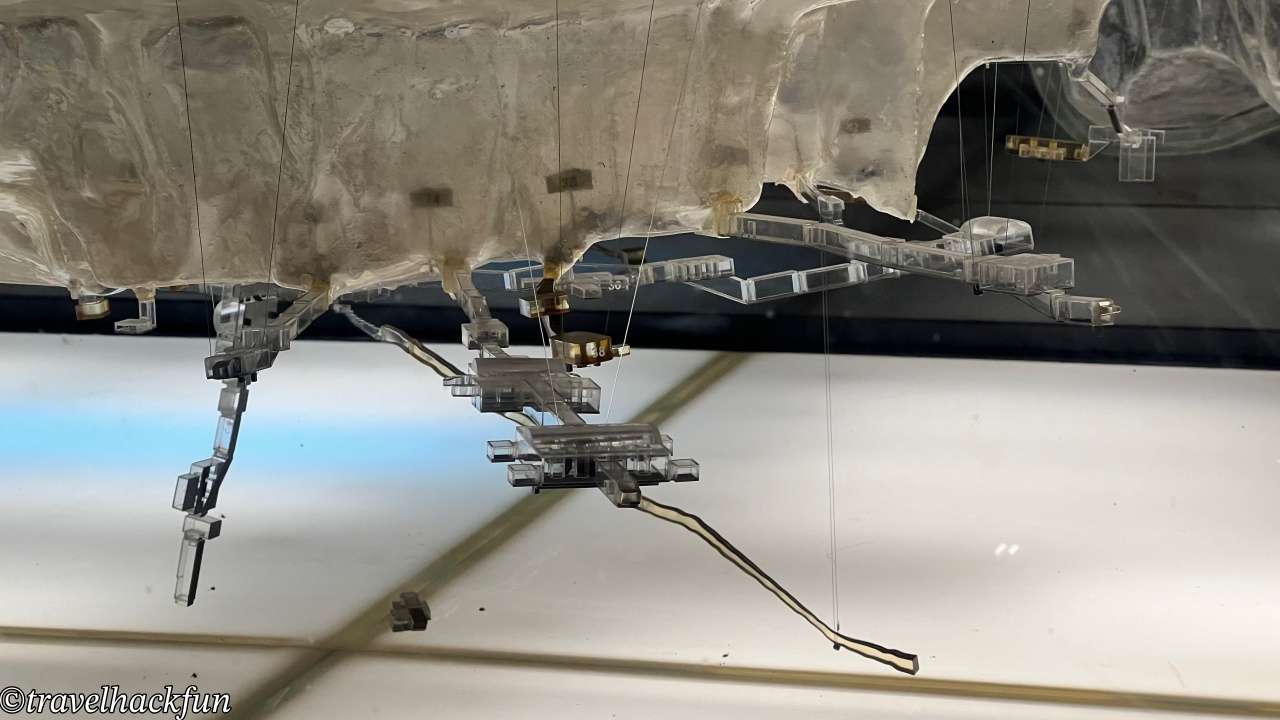
Highlights of the Tombs
After visiting the visitor center, you can take the electric vehicle to the entrance of the valley. Many tomb entrances are clustered here, surrounded by natural limestone cliffs. If you look closely, you’ll notice that each tomb entrance is topped by a small peak. These peaks replace the traditional pyramid’s symbolic meaning, guiding the pharaoh’s soul toward eternal life.
From this central area, you can see the entrance to the tomb of Ramses II (KV7), one of the most revered pharaohs of ancient Egypt. His tomb was located in the heart of the Valley of the Kings to symbolize his supreme status. However, due to long-term flooding, KV7 has suffered significant damage and is often closed to visitors.
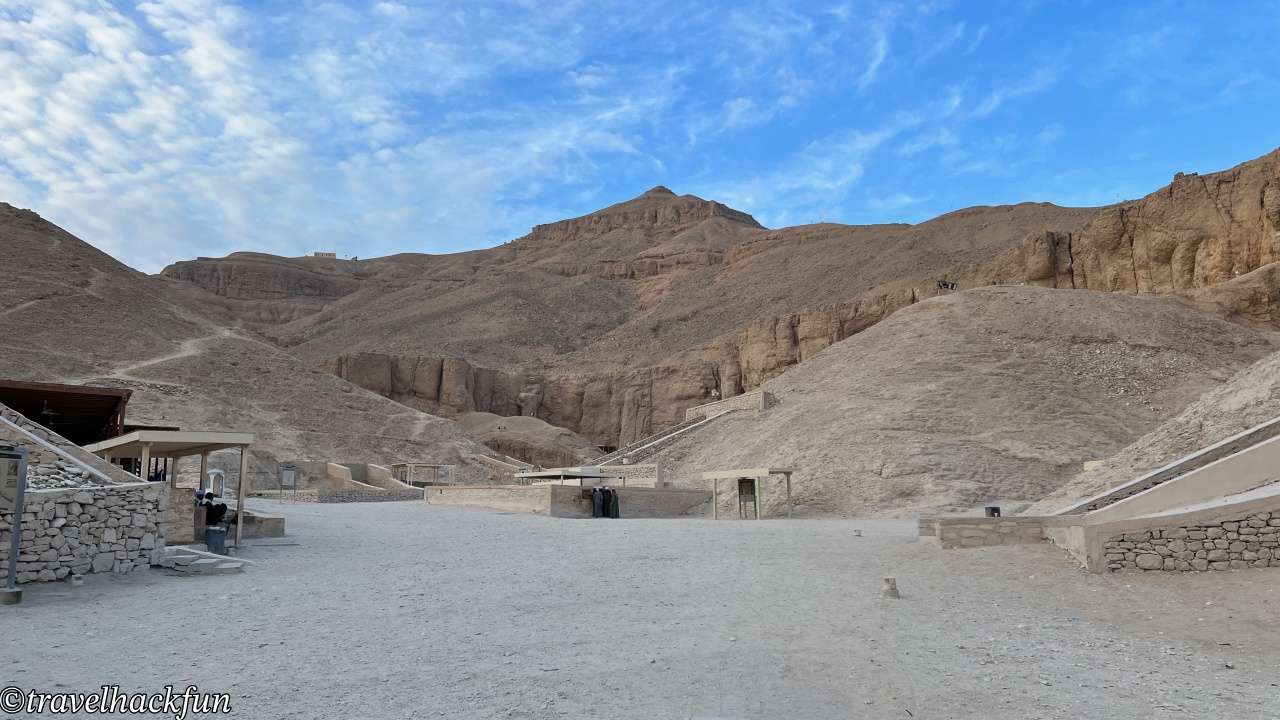
KV8 | Tomb of Merneptah
KV8 is the tomb of Merneptah, the 19th Dynasty pharaoh and the 13th son of Ramses II, who succeeded him. This tomb is included in the basic ticket. Merneptah’s tomb is an important example of late New Kingdom tomb architecture. The passage is particularly long, stretching over 100 meters, and the air inside feels warm as soon as you enter. This tomb follows the typical design of late New Kingdom royal tombs, with a straightforward layout extending along a linear axis.
The entrance features a slightly sloping corridor, with walls decorated with remnants of wall paintings depicting the Book of the Dead and Book of Gates, showing gods and scenes from the afterlife. These illustrate Merneptah’s journey into the afterlife. The wall paintings often depict the pharaoh interacting with deities, with some inscriptions including his royal cartouche.
As you proceed, you’ll pass through several corridors and rooms. Each corridor has varying degrees of decoration, often showing prayers to the sun god Ra and the underworld god Osiris. The main burial chamber includes a large sarcophagus, also referred to as a “false burial chamber.” This design was common in late New Kingdom tombs and served as either an extension of the main burial chamber or a symbolic space to confuse potential tomb raiders.
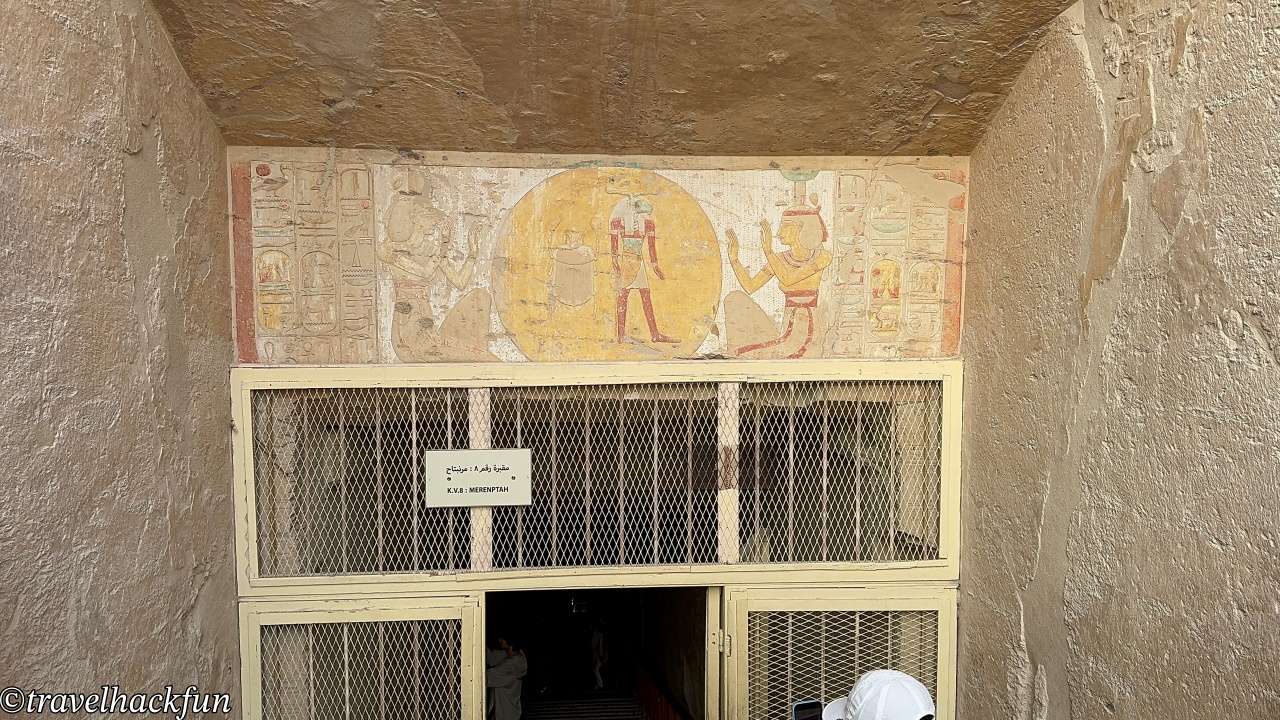

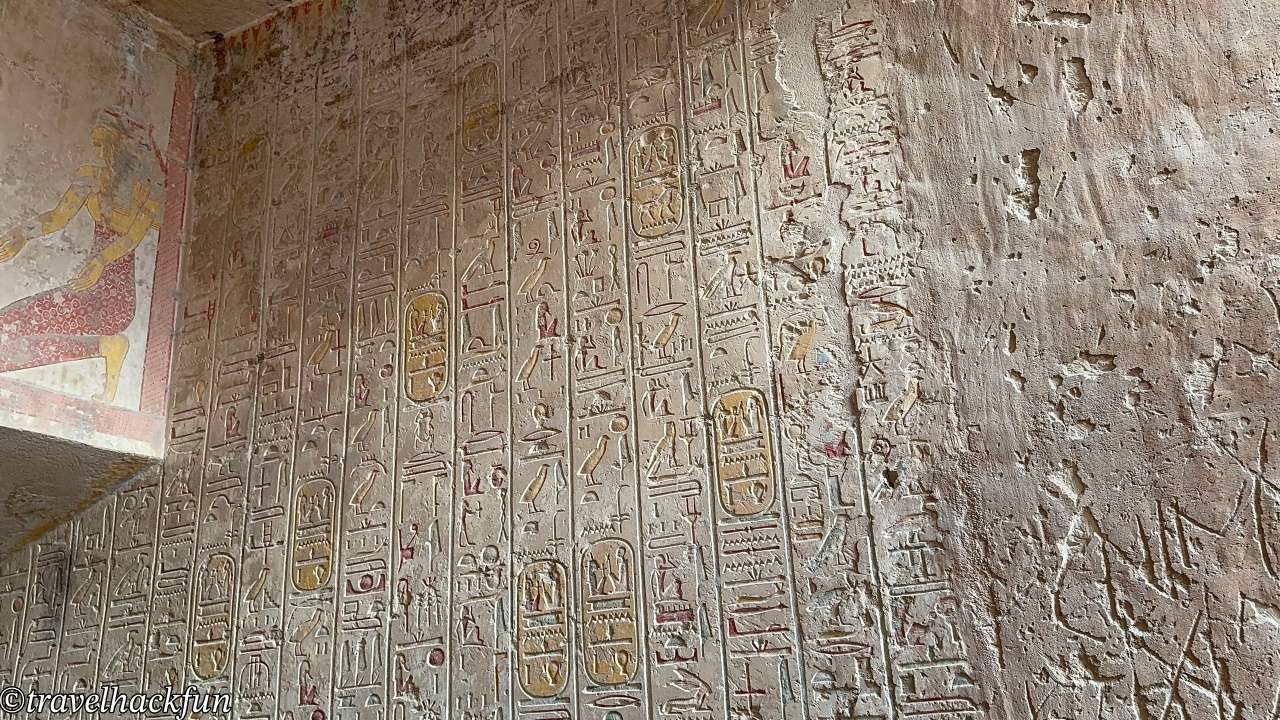
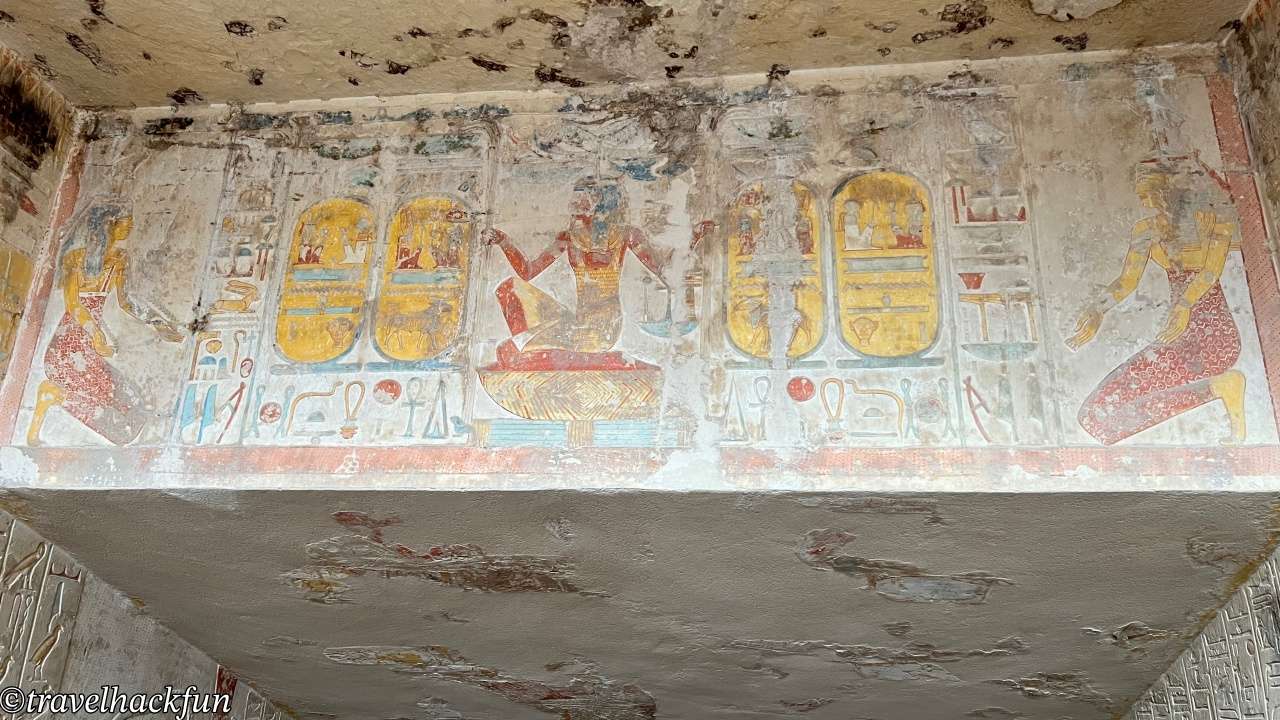


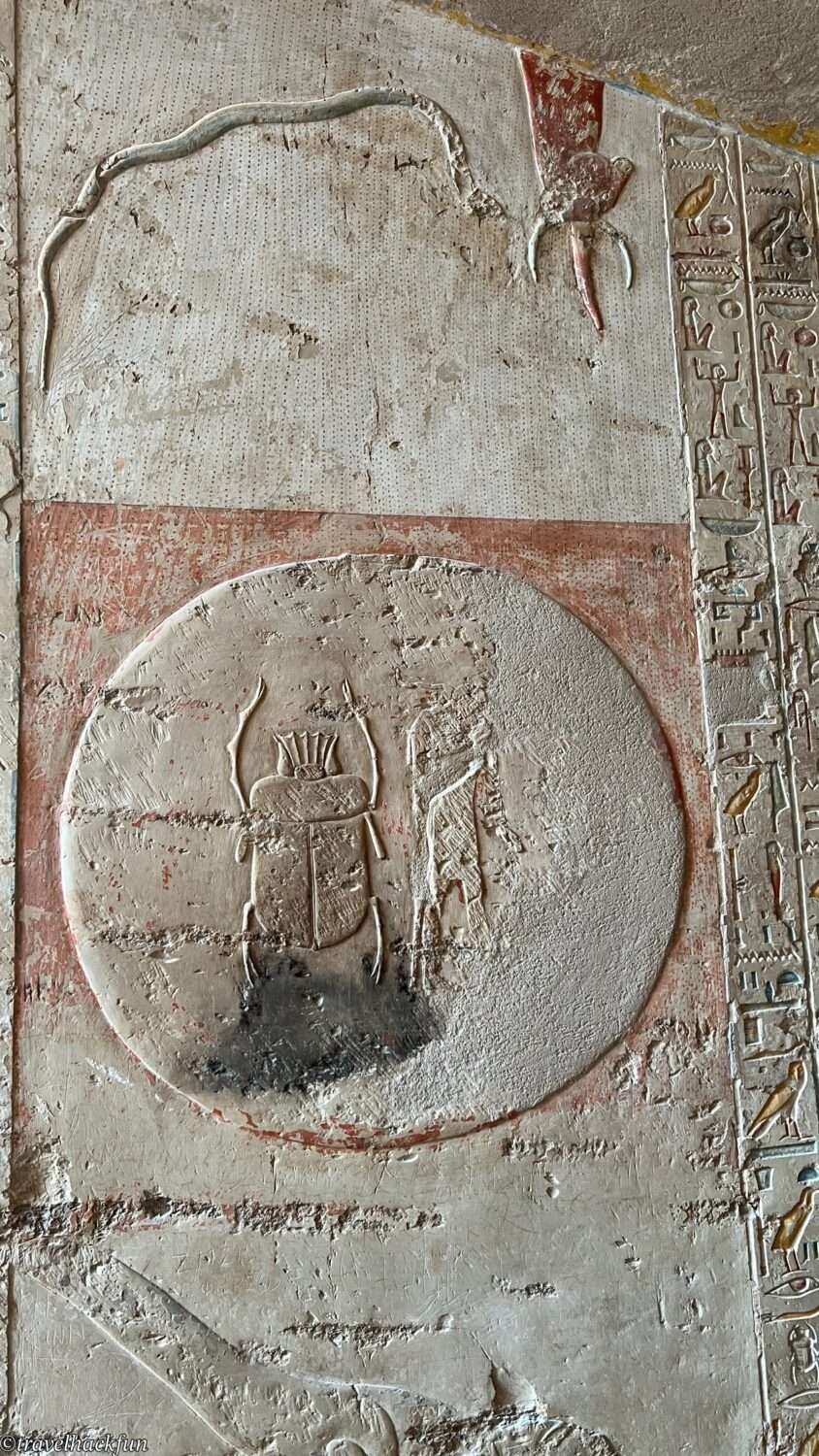
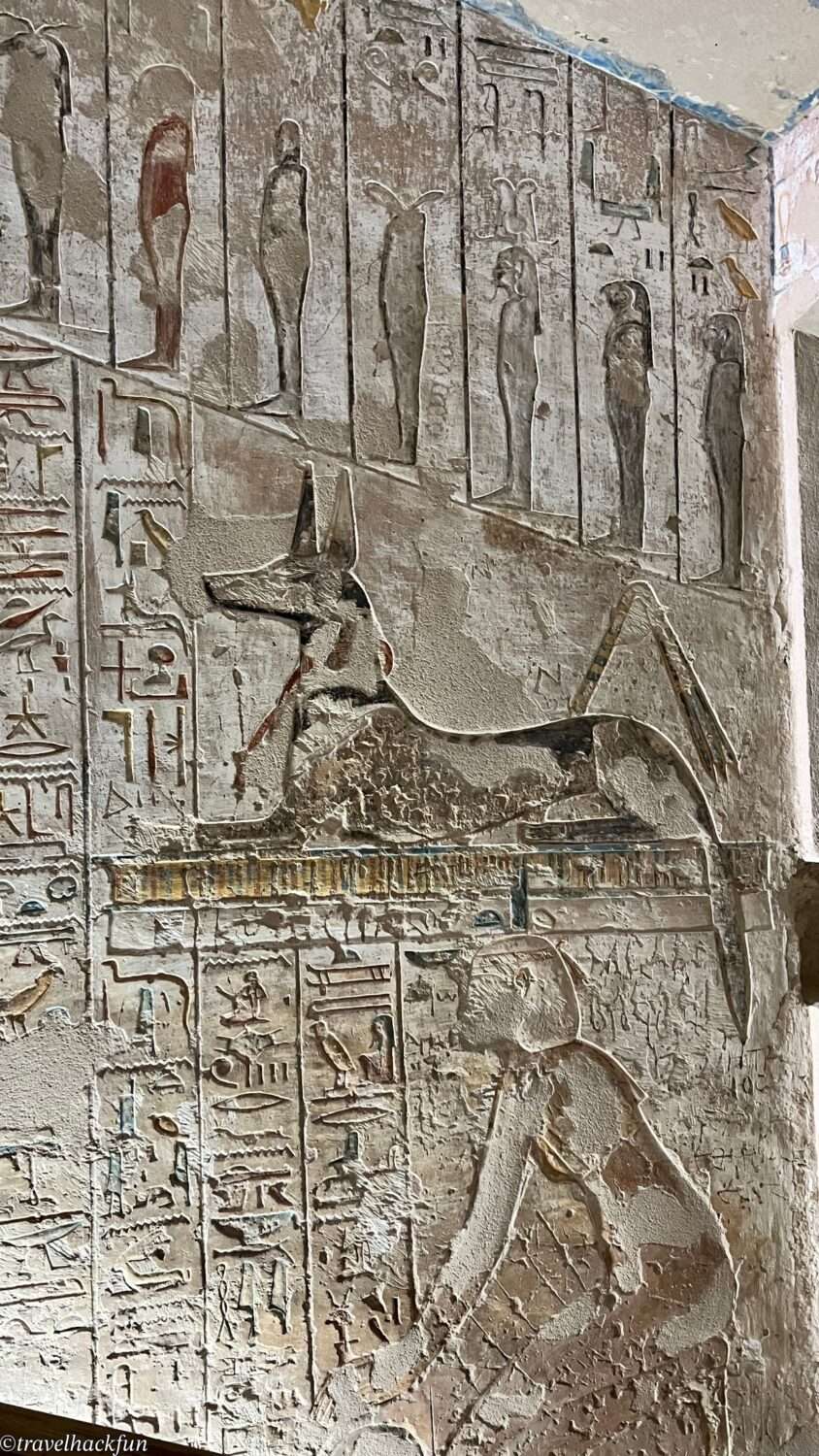
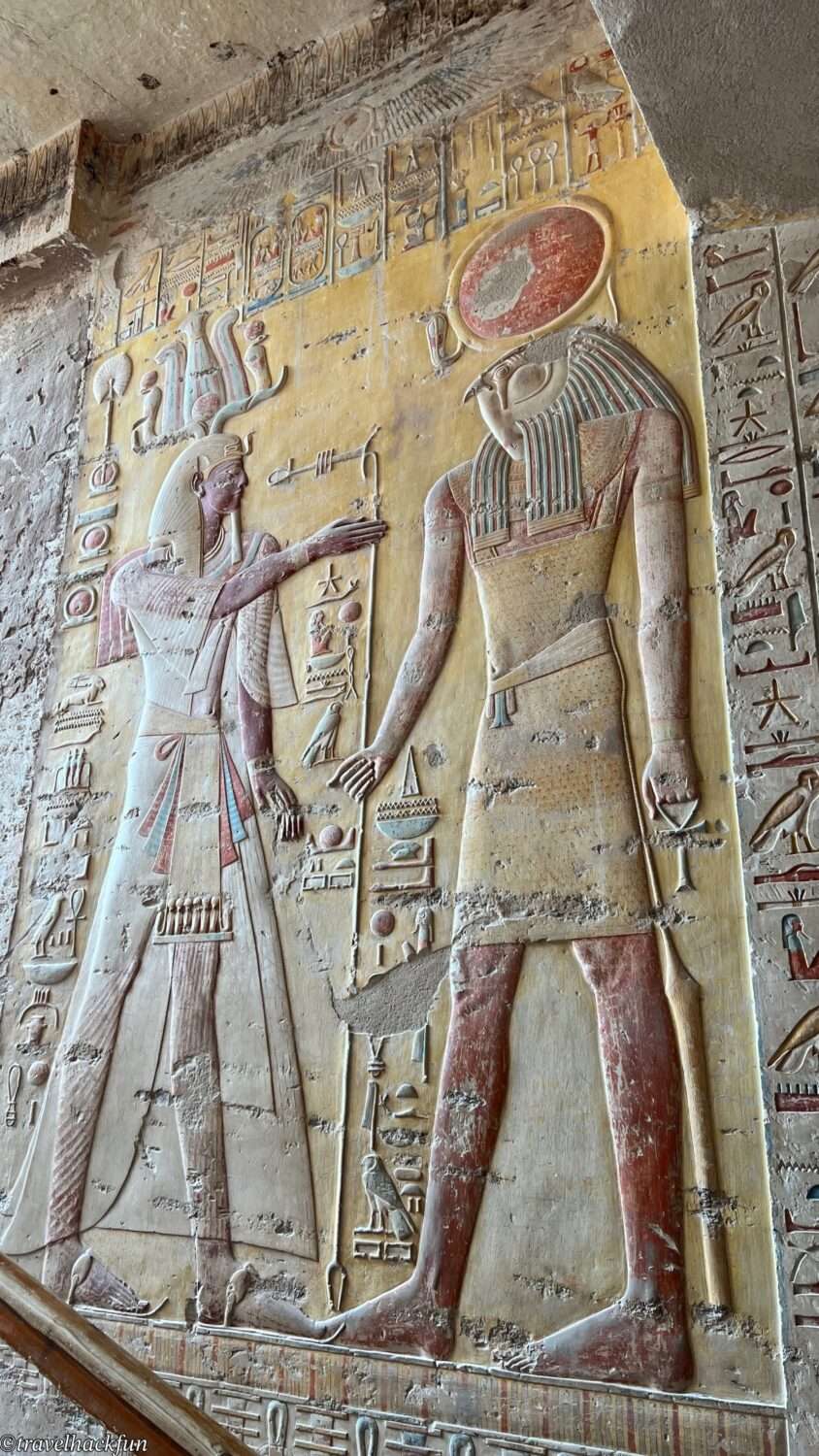
The antechamber before the main burial chamber houses a large sarcophagus, often referred to as a "false burial chamber." This design was quite common in the tombs of late New Kingdom pharaohs, serving as an extension of the main burial chamber or a symbolic preparatory space. The rituals performed here provided the pharaoh’s soul with an initial guide, symbolizing the transition of the deceased from the mortal world to the afterlife.
The large sarcophagus in the room might have been used to store symbolic funerary items for the pharaoh or simply functioned as a "decoy sarcophagus" intended to mislead tomb raiders. Today, the sarcophagus is completely empty, but it is speculated that it may have once held important artifacts or items of significant value.
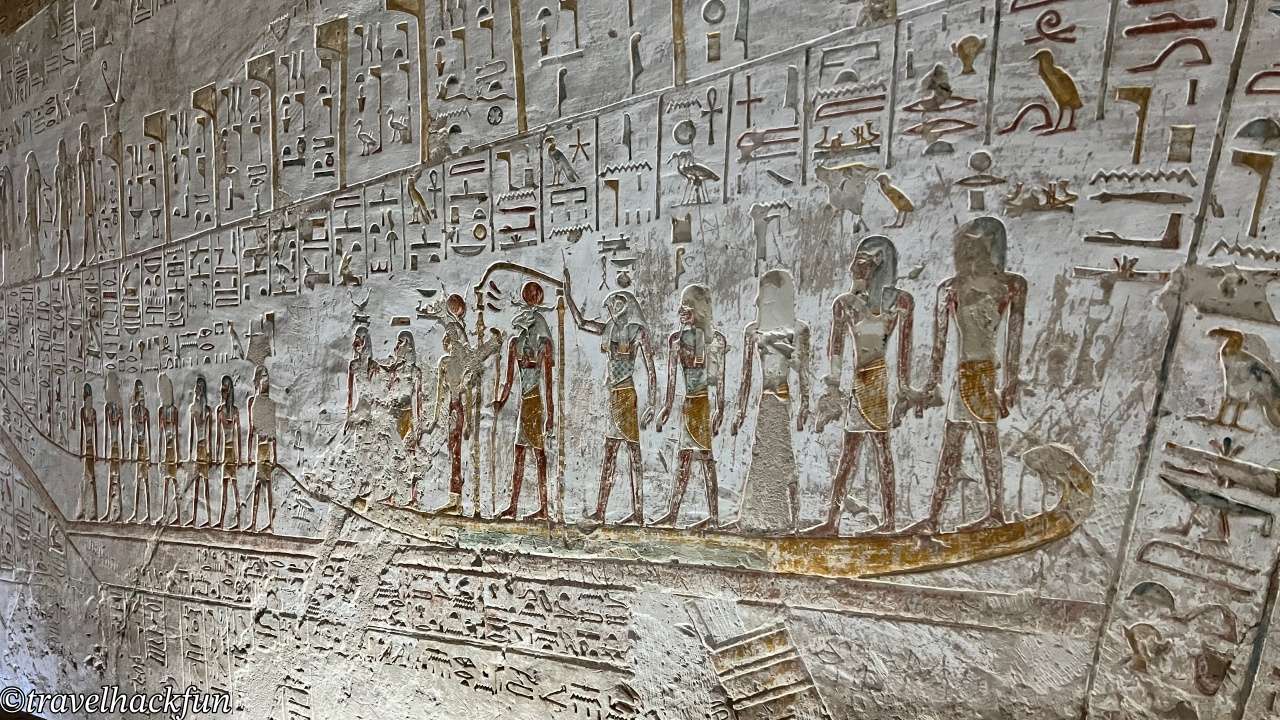
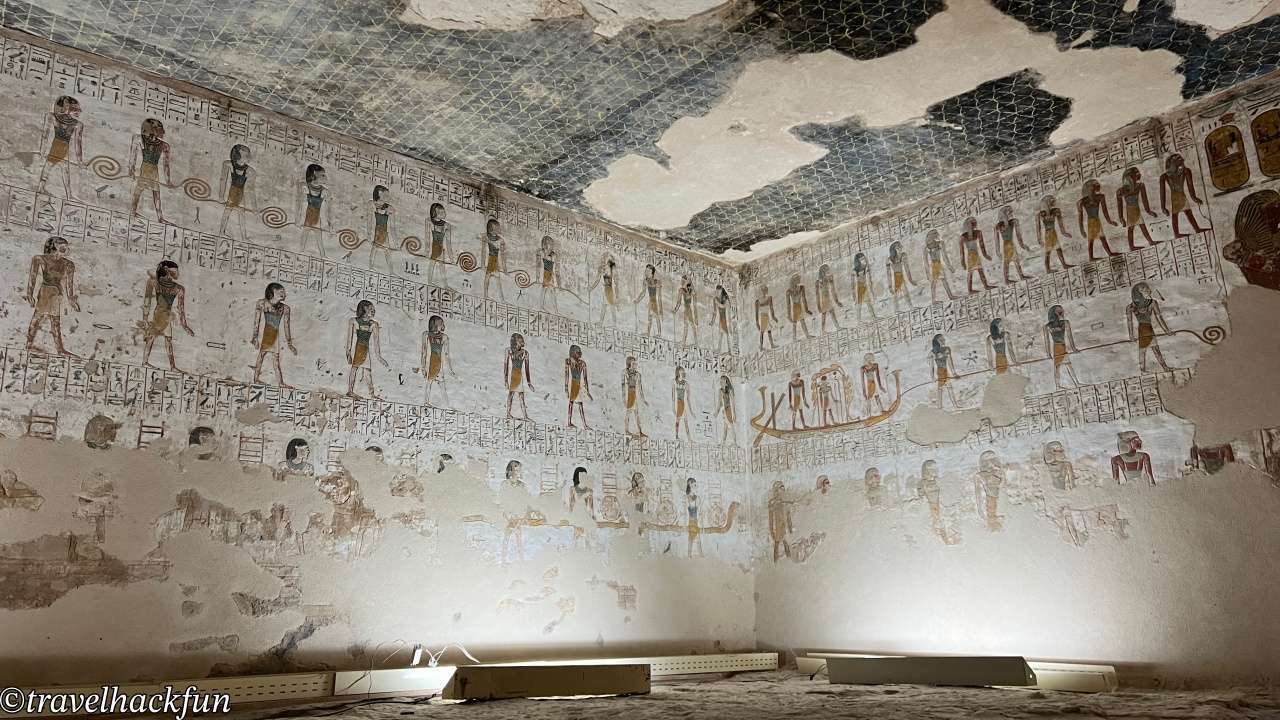
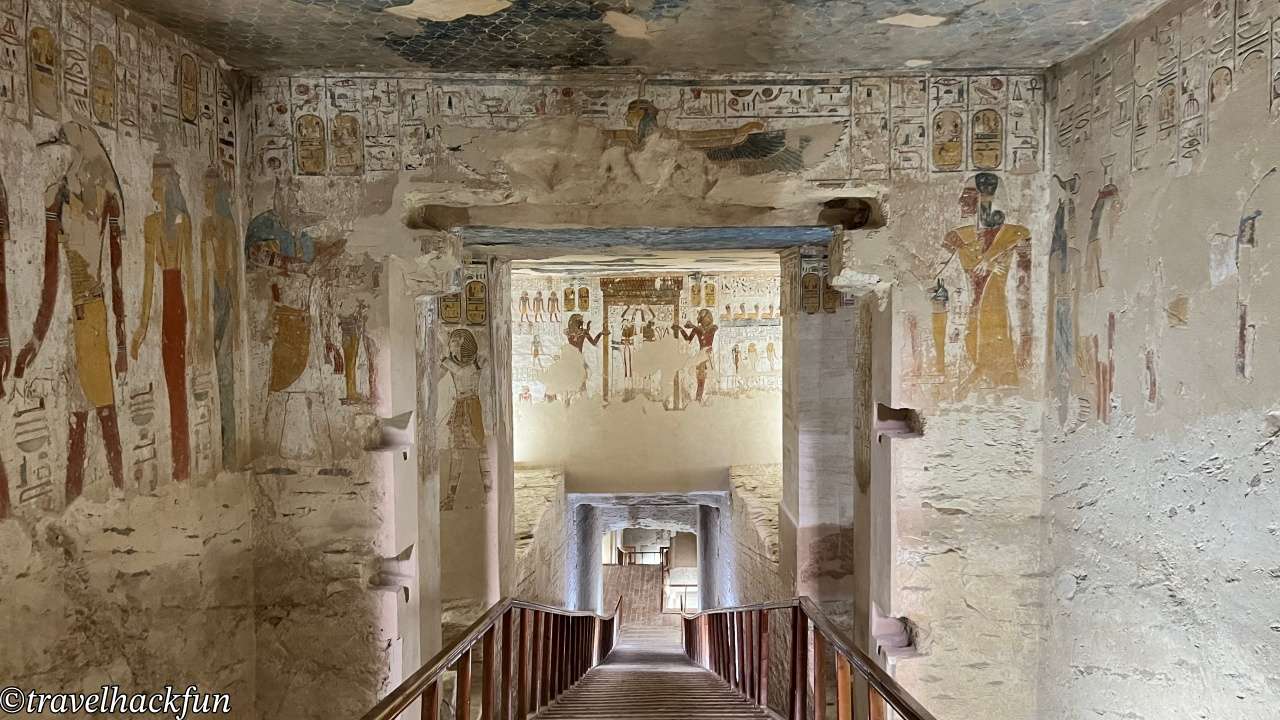
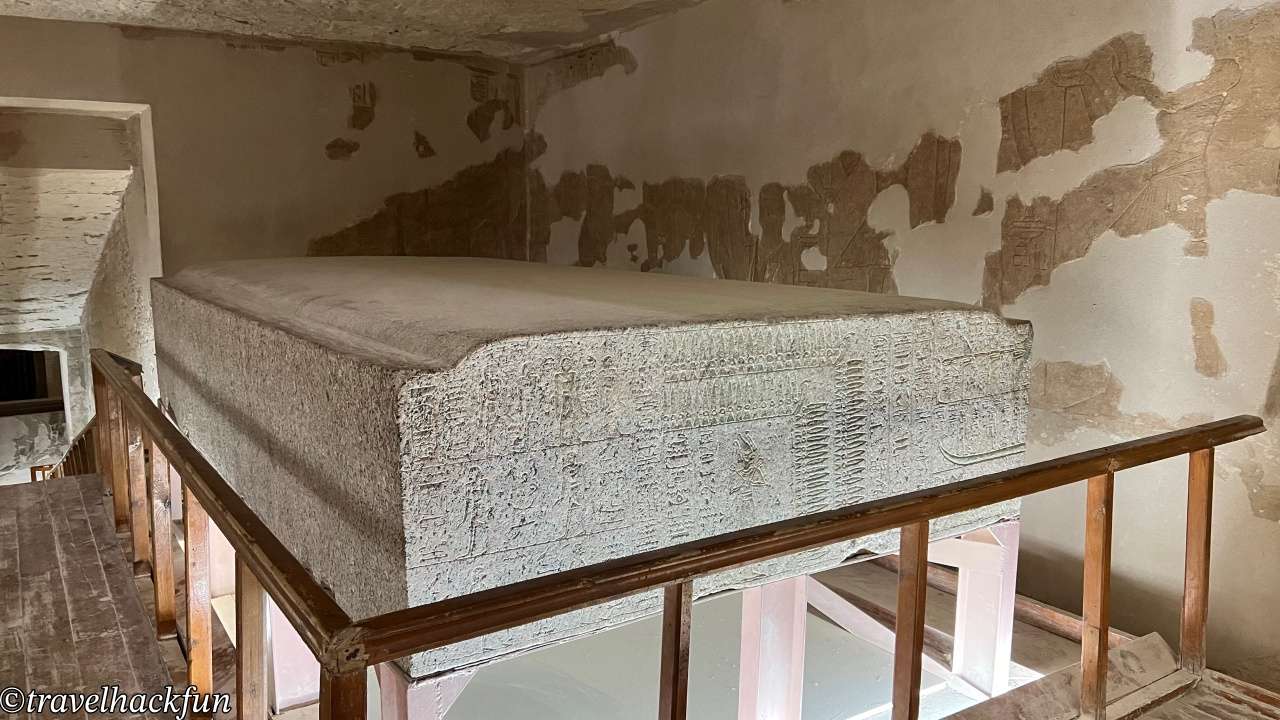
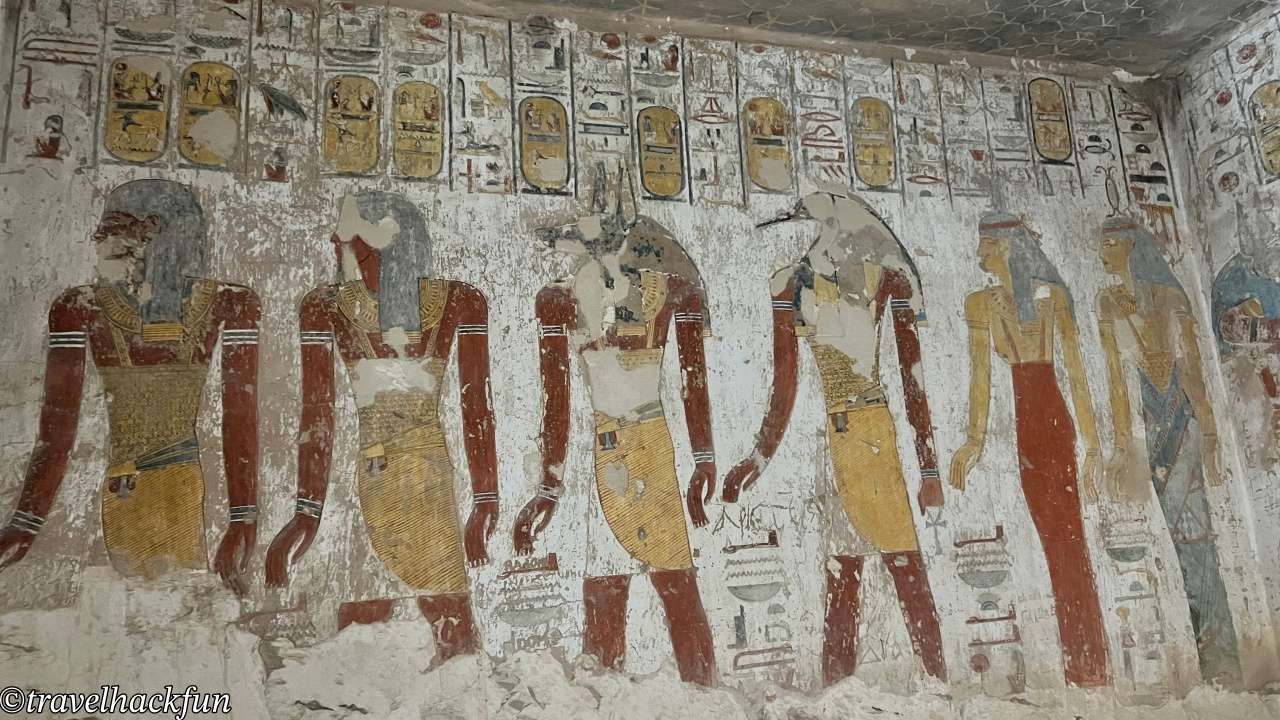
Further inside, the actual burial chamber once housed Merneptah’s mummy and funerary artifacts, most of which were lost to tomb raiders and modern excavations. The lower sections of the tomb have suffered from groundwater leakage and rock movement, leading to poorer preservation compared to the upper corridors.
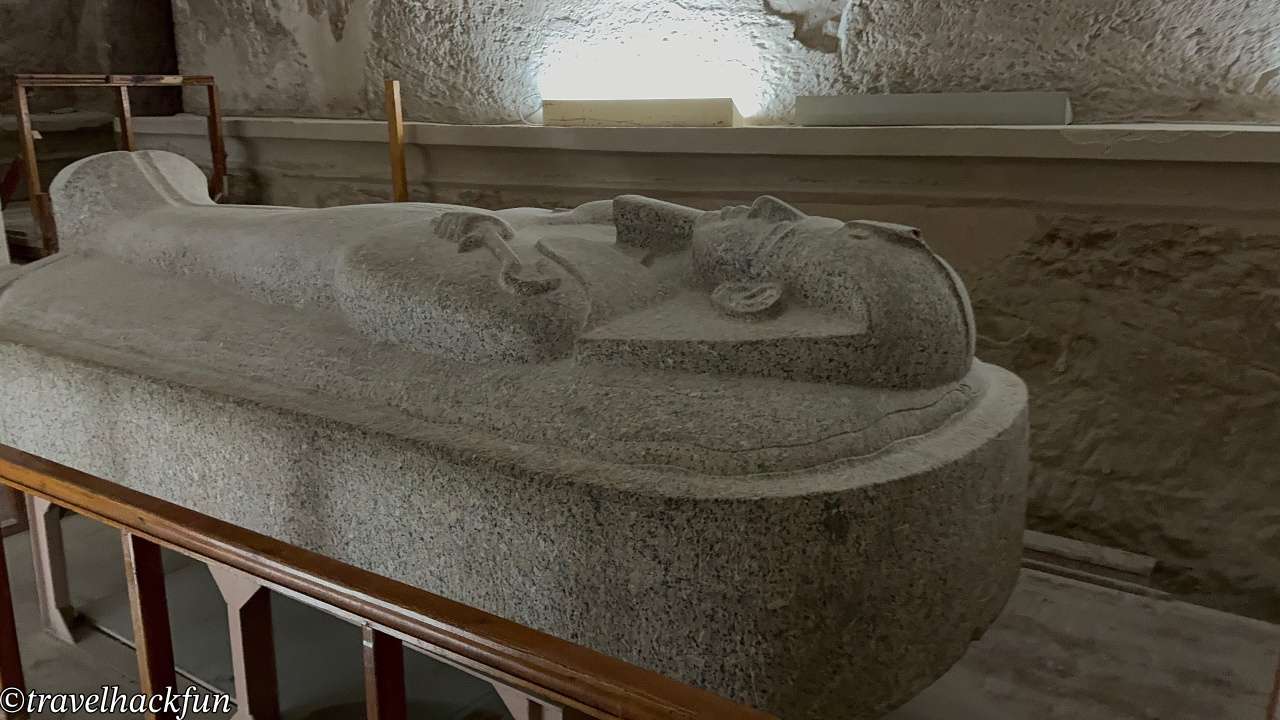
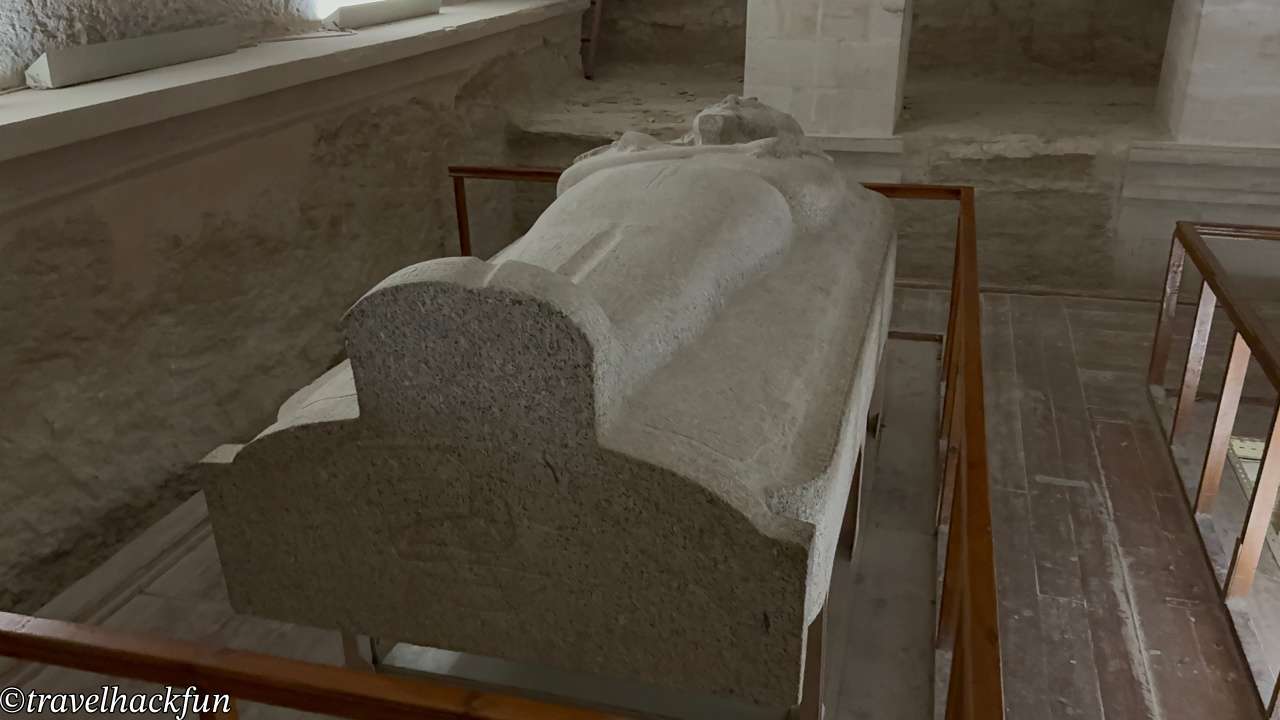



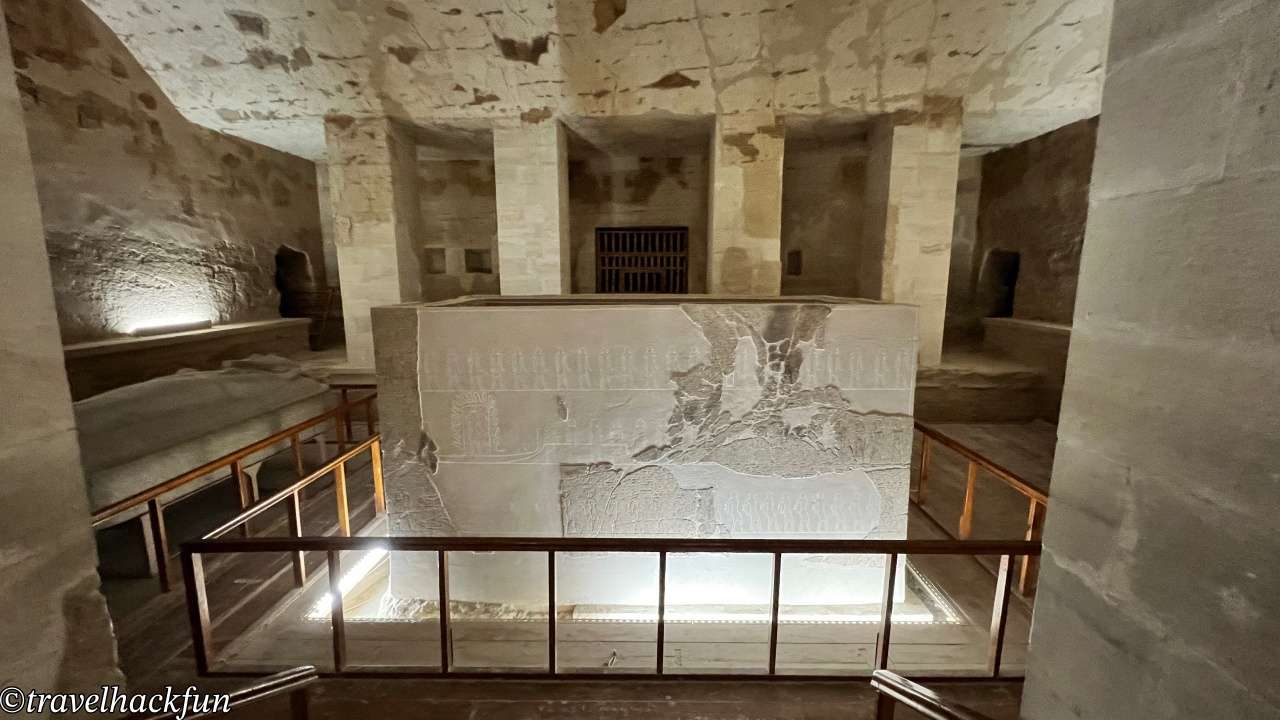
KV16 | Tomb of Ramses I
The tomb of Ramses I, identified as KV16, is one of the tombs accessible with the basic ticket. Ramses I was the founder of the 19th Dynasty, although his reign lasted only about one year and four months.
The layout of KV16 is relatively simple. From the entrance, a sloped passage leads to an antechamber, which directly connects to the main burial chamber. This straightforward, linear design is uncommon among New Kingdom tombs and may have resulted from the limited time available for its construction.
Although modest in scale, the wall paintings in KV16 are remarkably well-preserved and vivid, with blue being the predominant color. Blue symbolizes the sky and water, representing eternity, and demonstrates the high level of skill in ancient Egyptian artistry. The wall paintings primarily depict scenes from the Book of Gates, illustrating the pharaoh’s journey through the afterlife. Likely due to the time constraints, only the burial chamber is lavishly decorated, featuring excerpts from the Book of Gates and Book of the Portals, as well as scenes of the pharaoh standing before the gods.

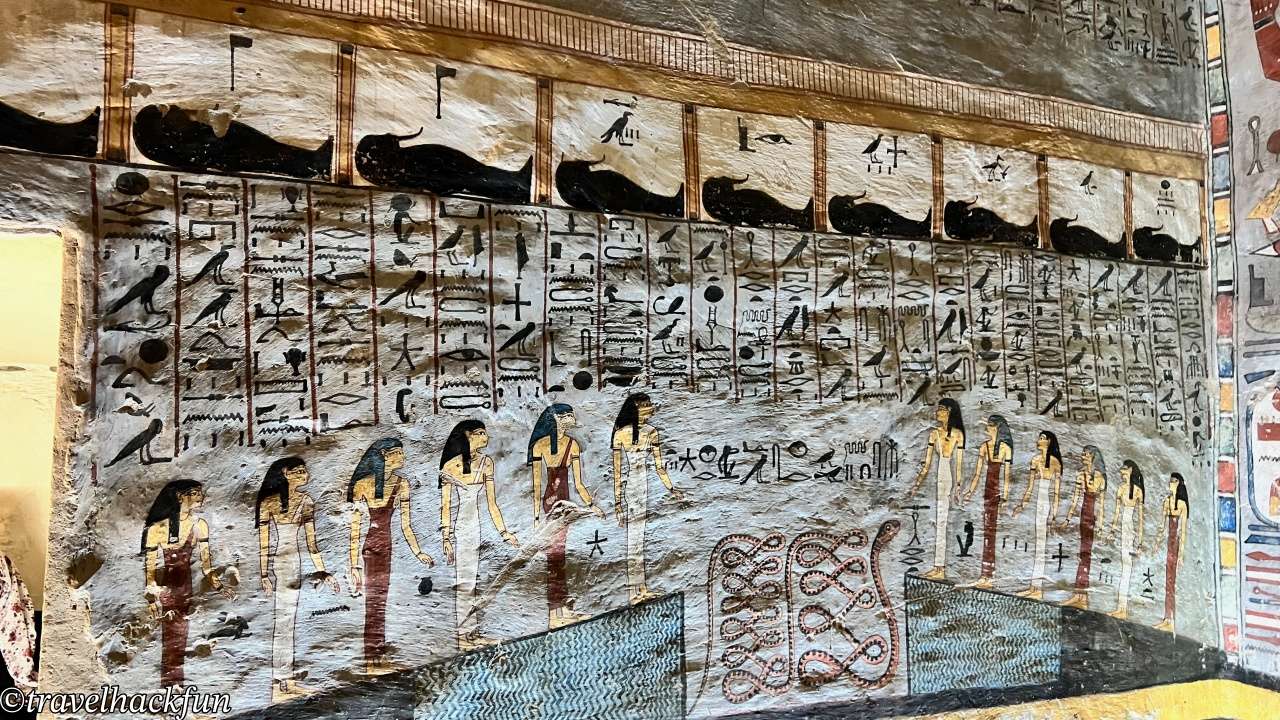

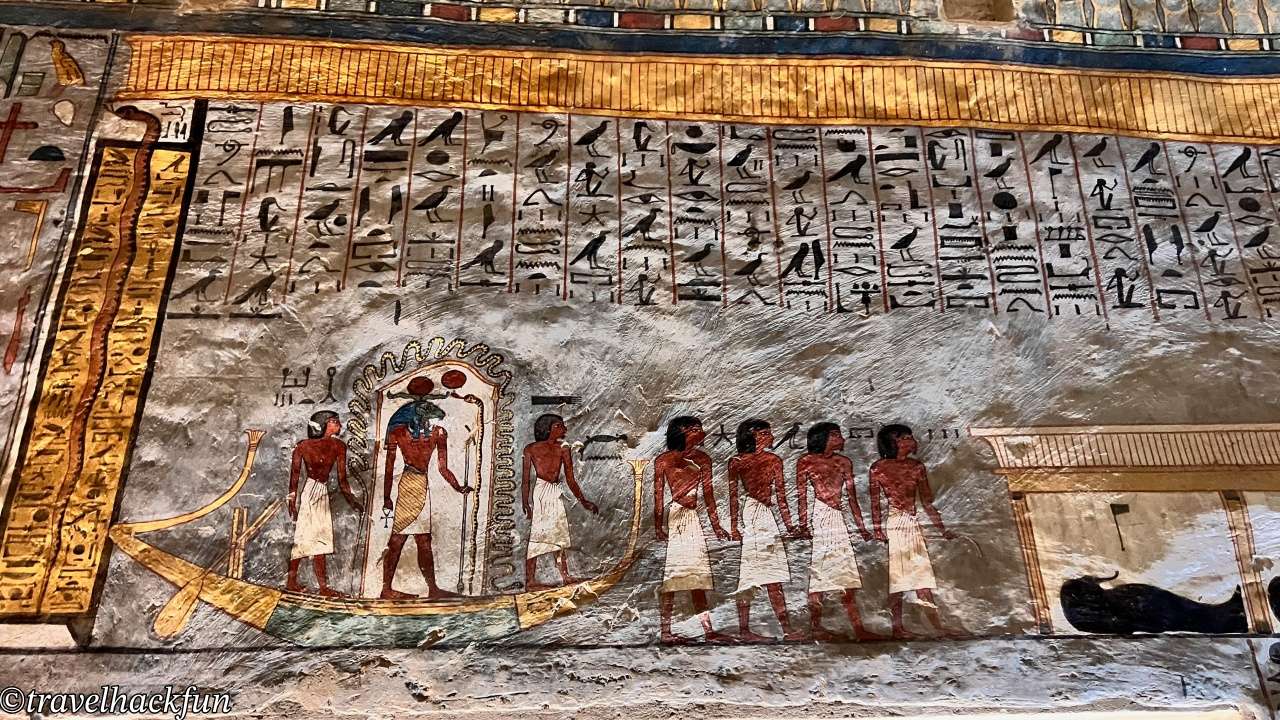
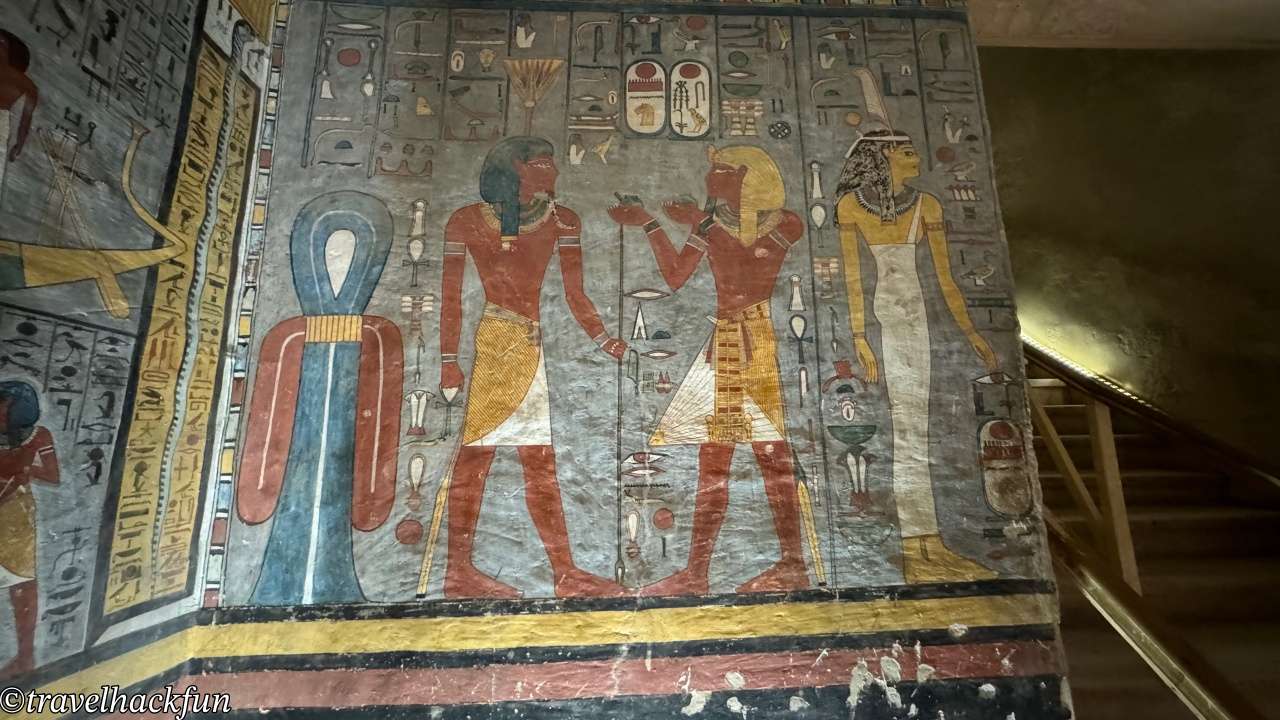
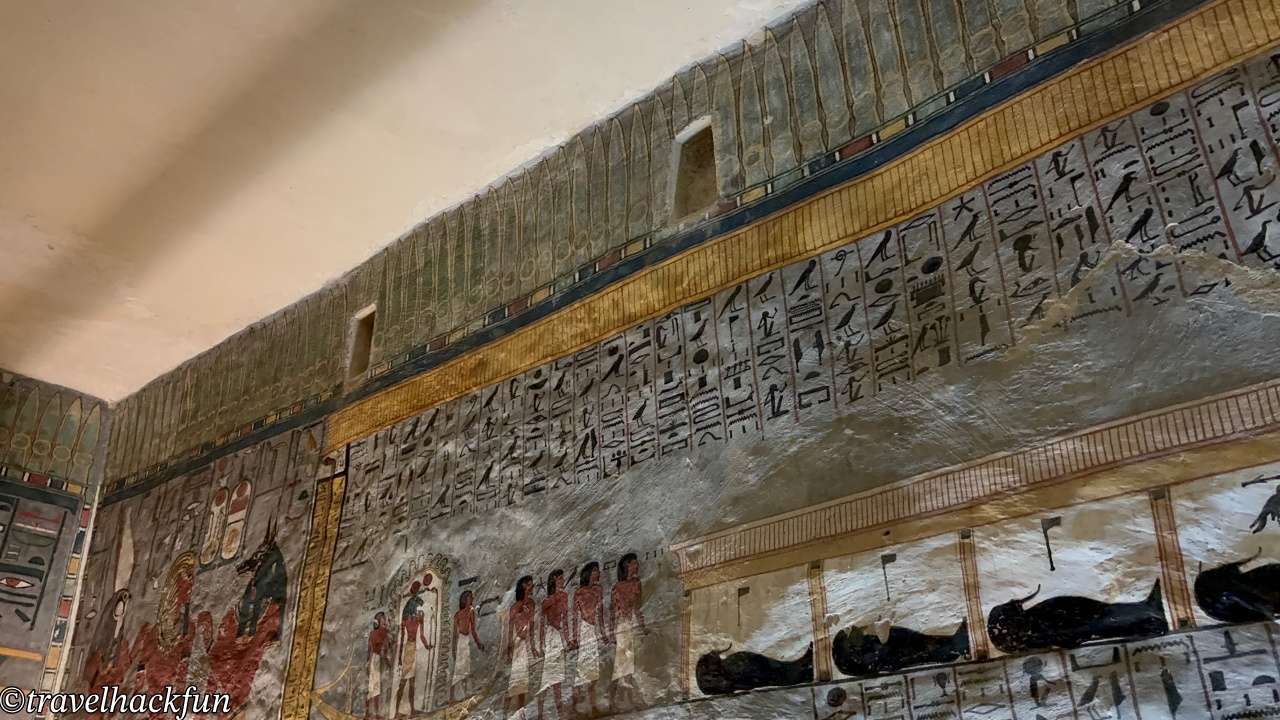
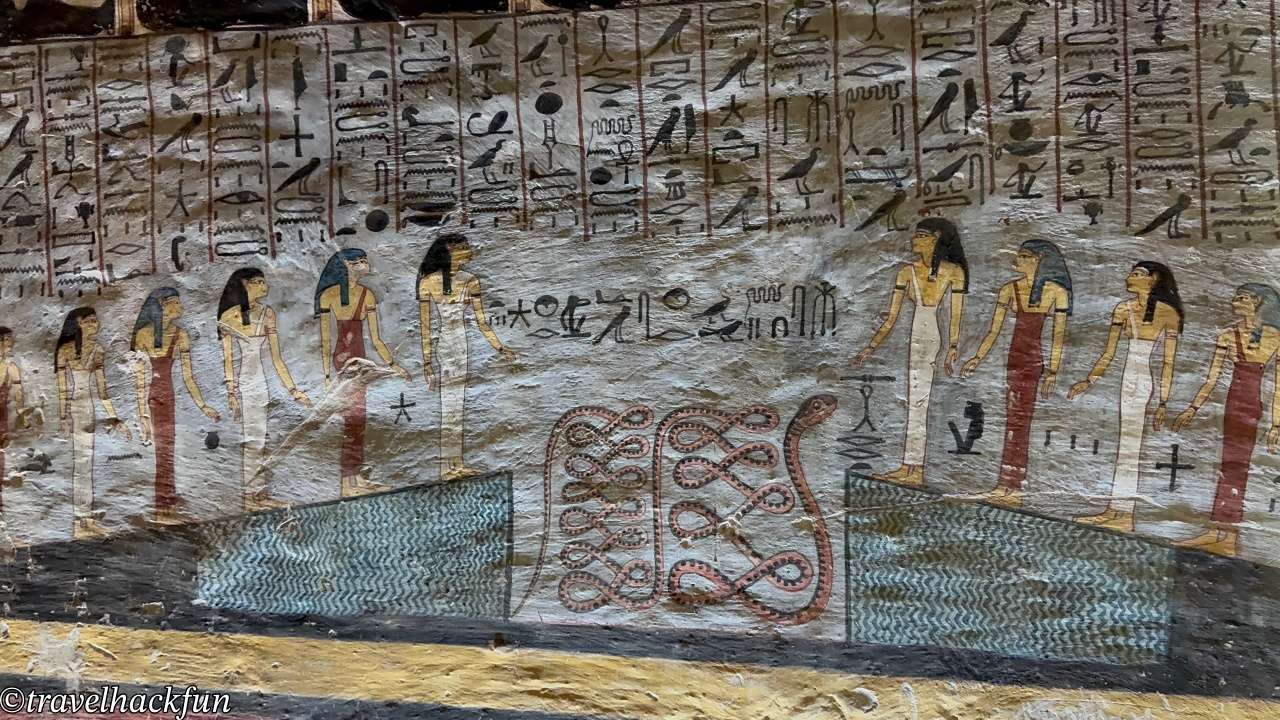
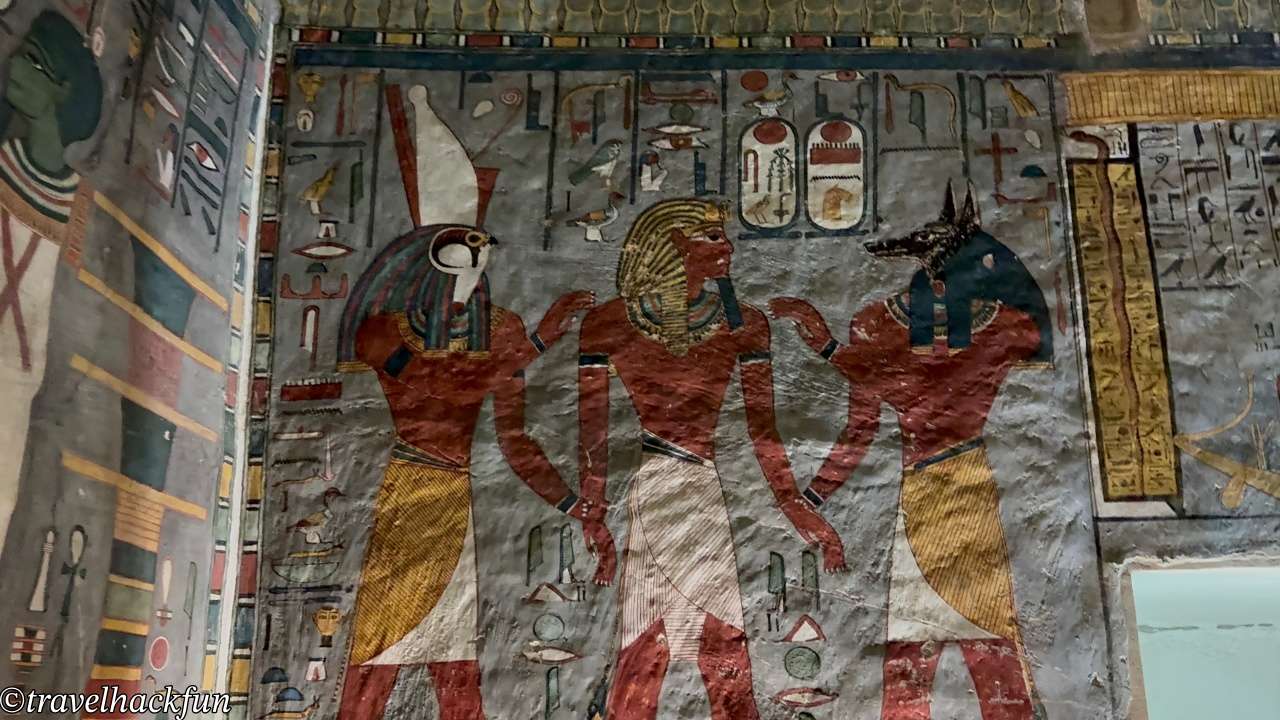

KV6 | Tomb of Ramses IX
KV6 is the tomb of Ramses IX from the 20th Dynasty, located near the entrance of the Valley of the Kings, making it relatively easy to find. It is also included in the basic ticket.
This tomb is notable for its wide design, reflecting more modern planning. The entrance corridor is relatively shallow and slopes gently downward. The walls, which were originally meant to feature carvings or decorations, remain largely unfinished due to the pharaoh’s death before the tomb’s completion.
Inside, the tomb is adorned with scenes from the Book of the Dead, Book of Caverns, and Book of the Earth.

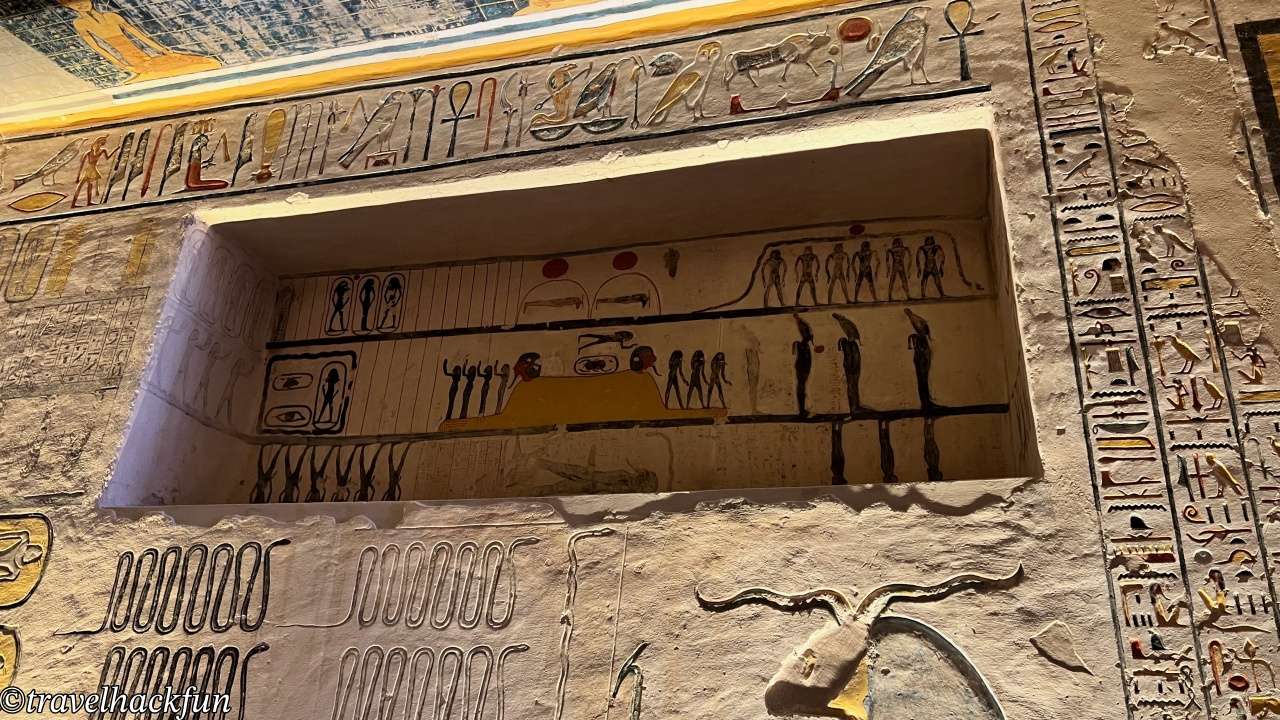
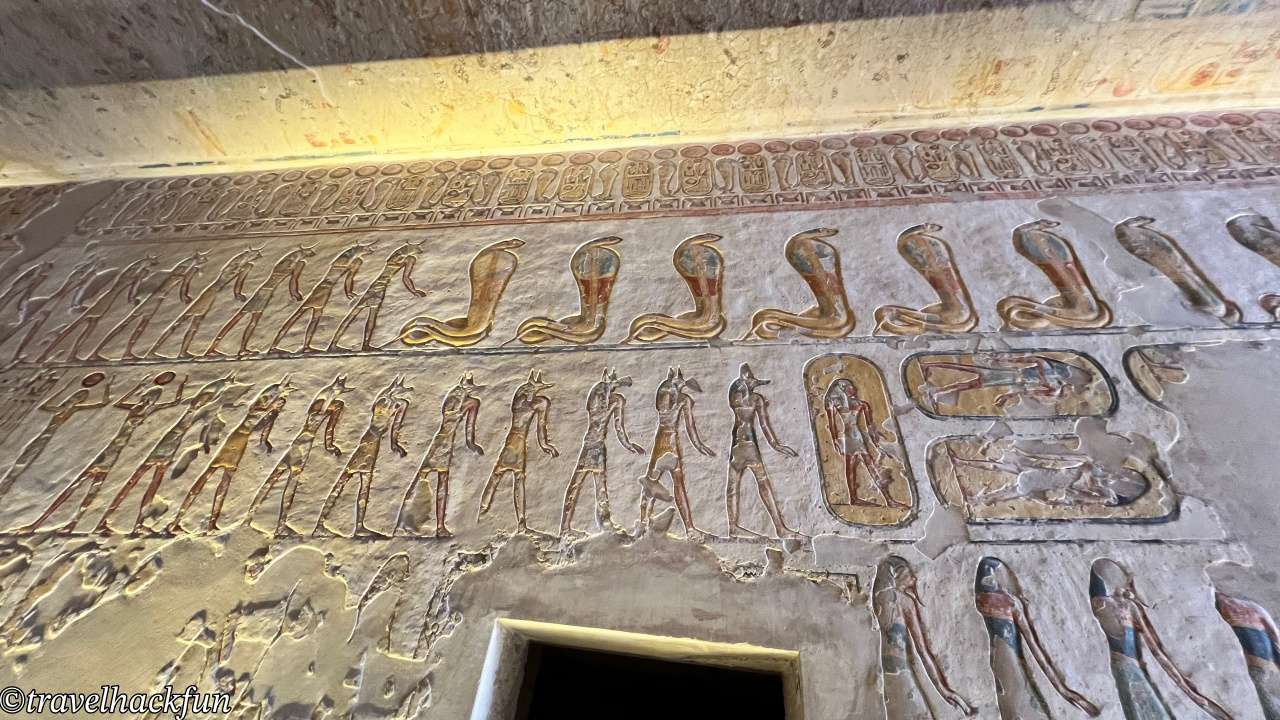
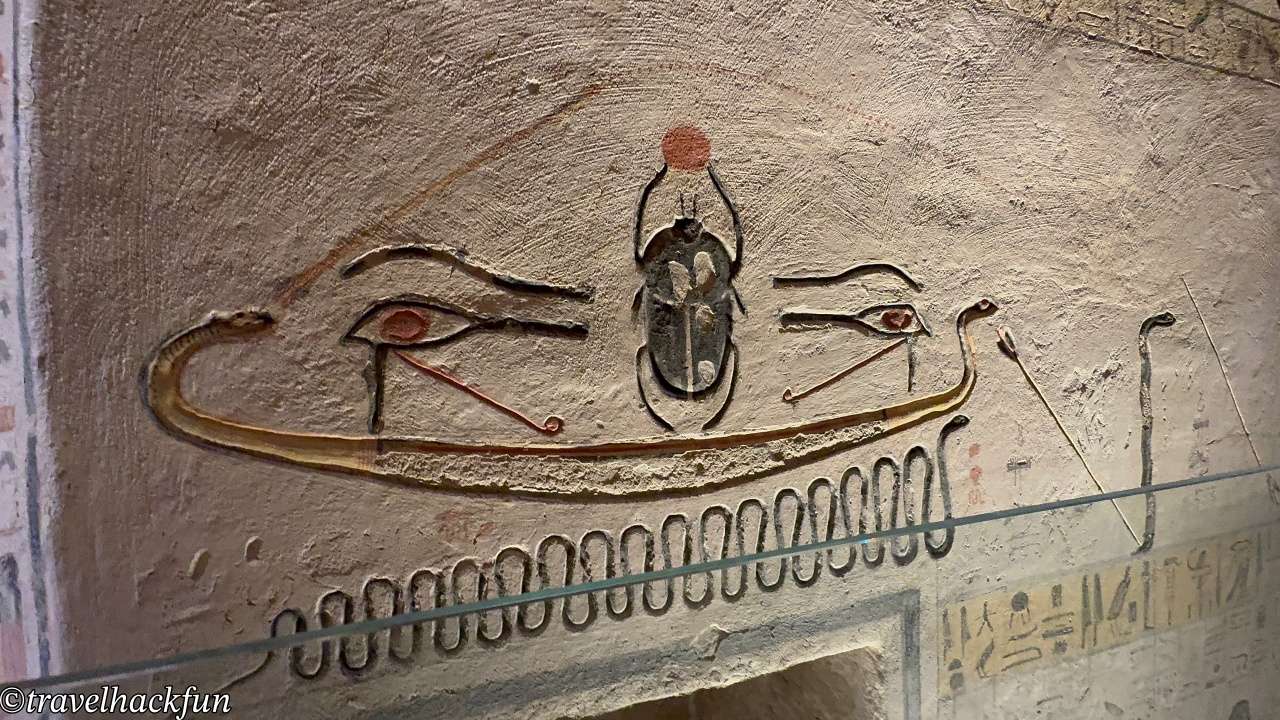
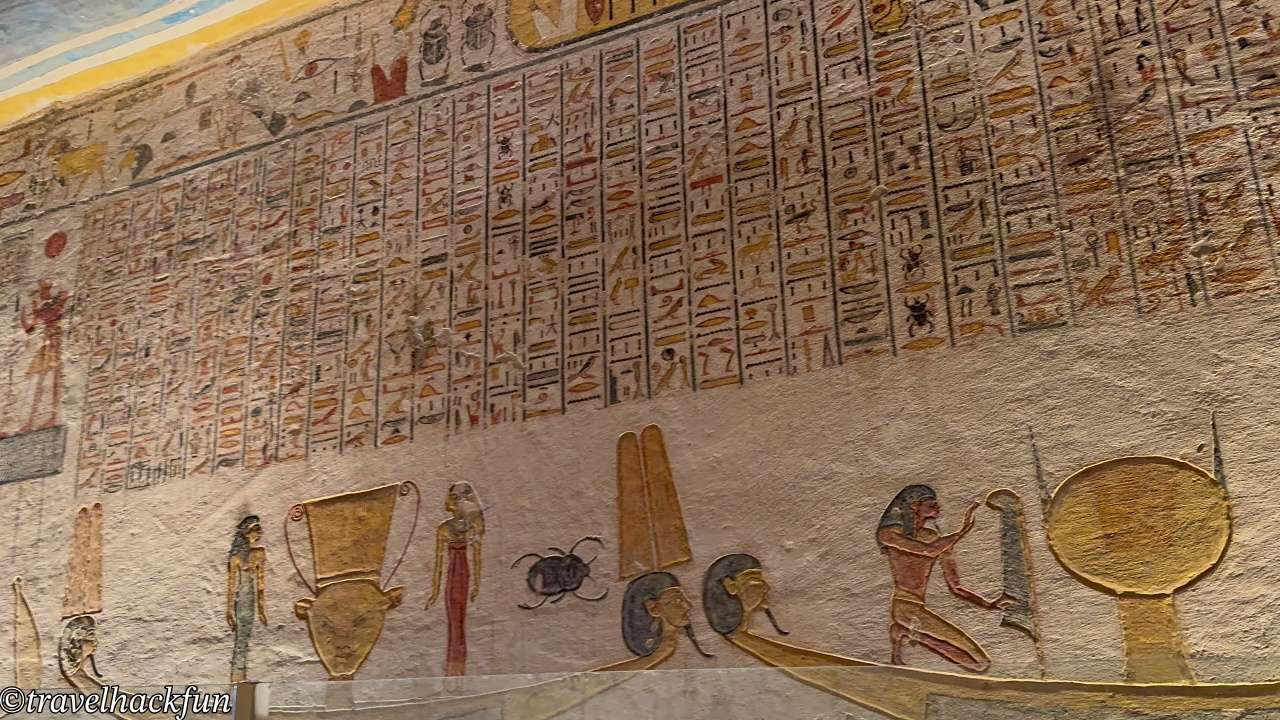
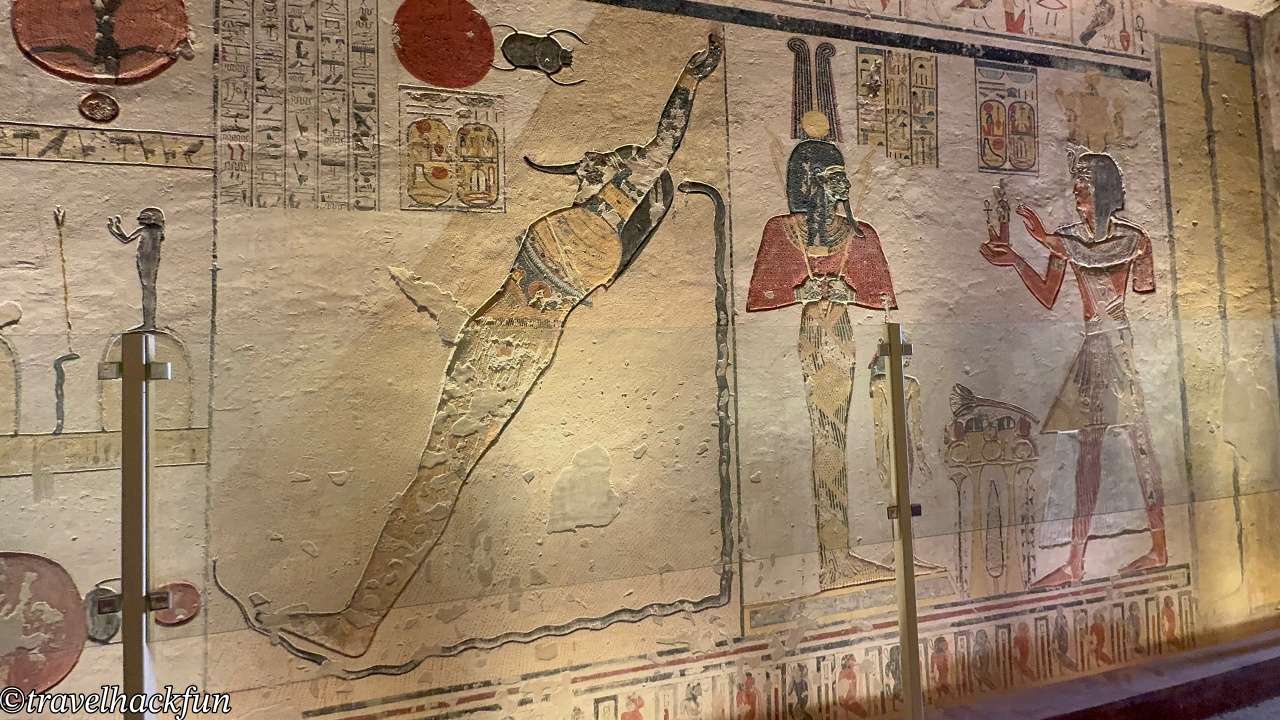


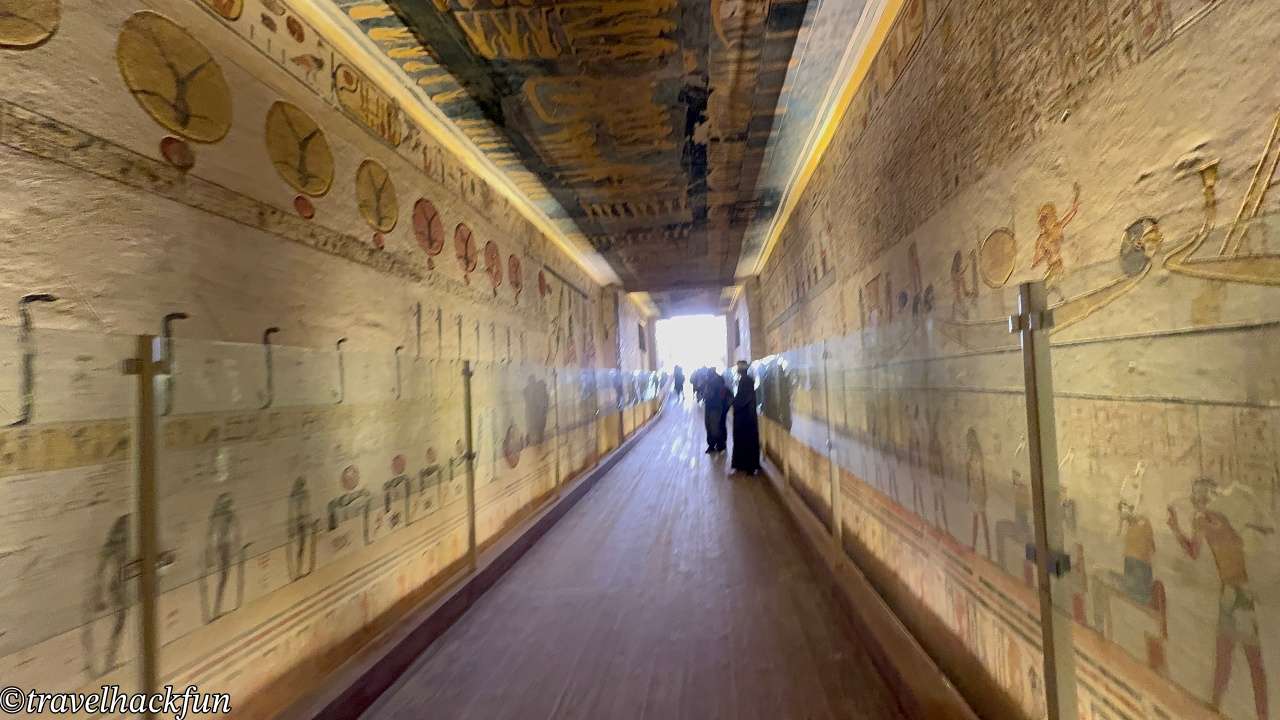
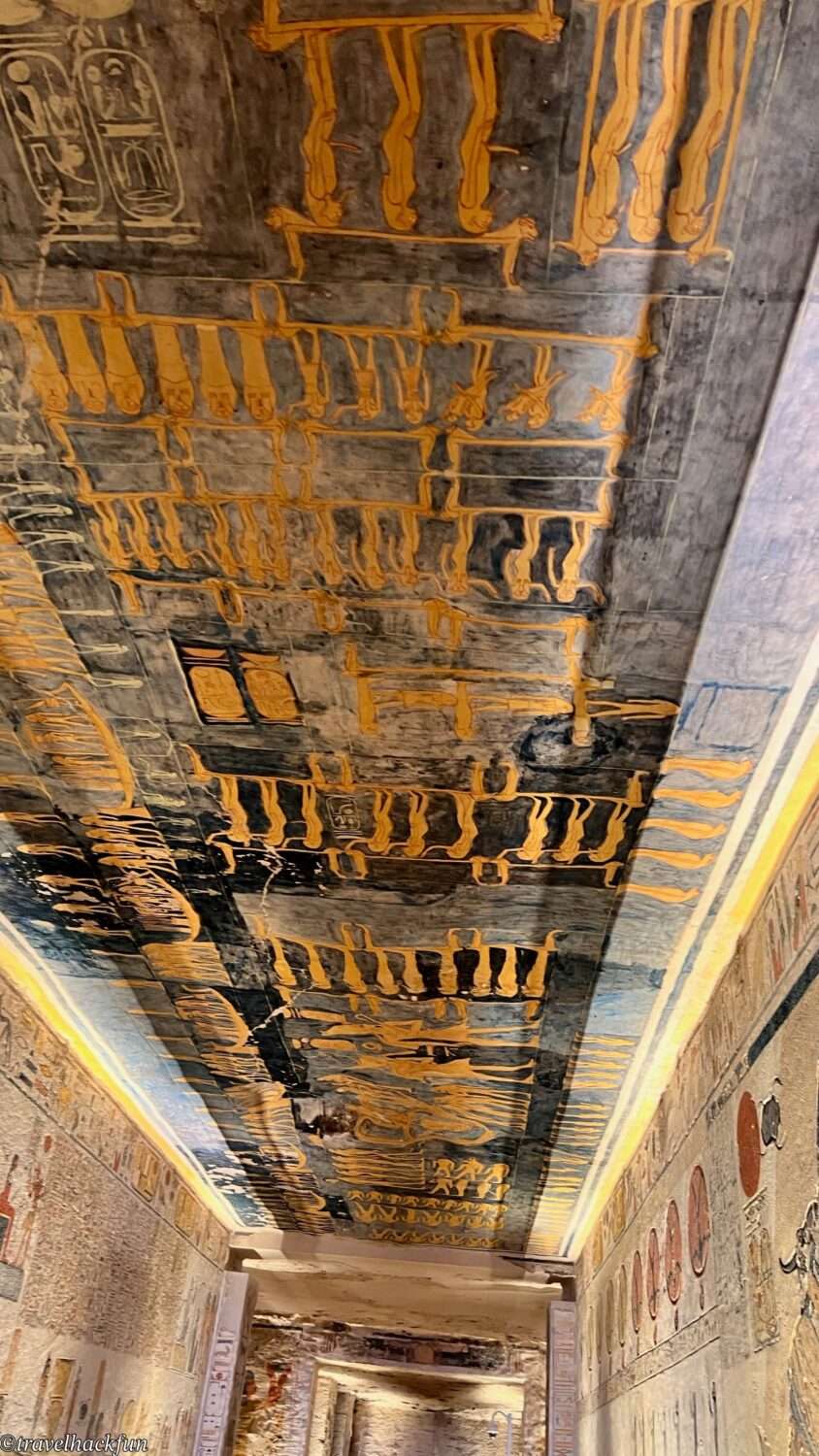
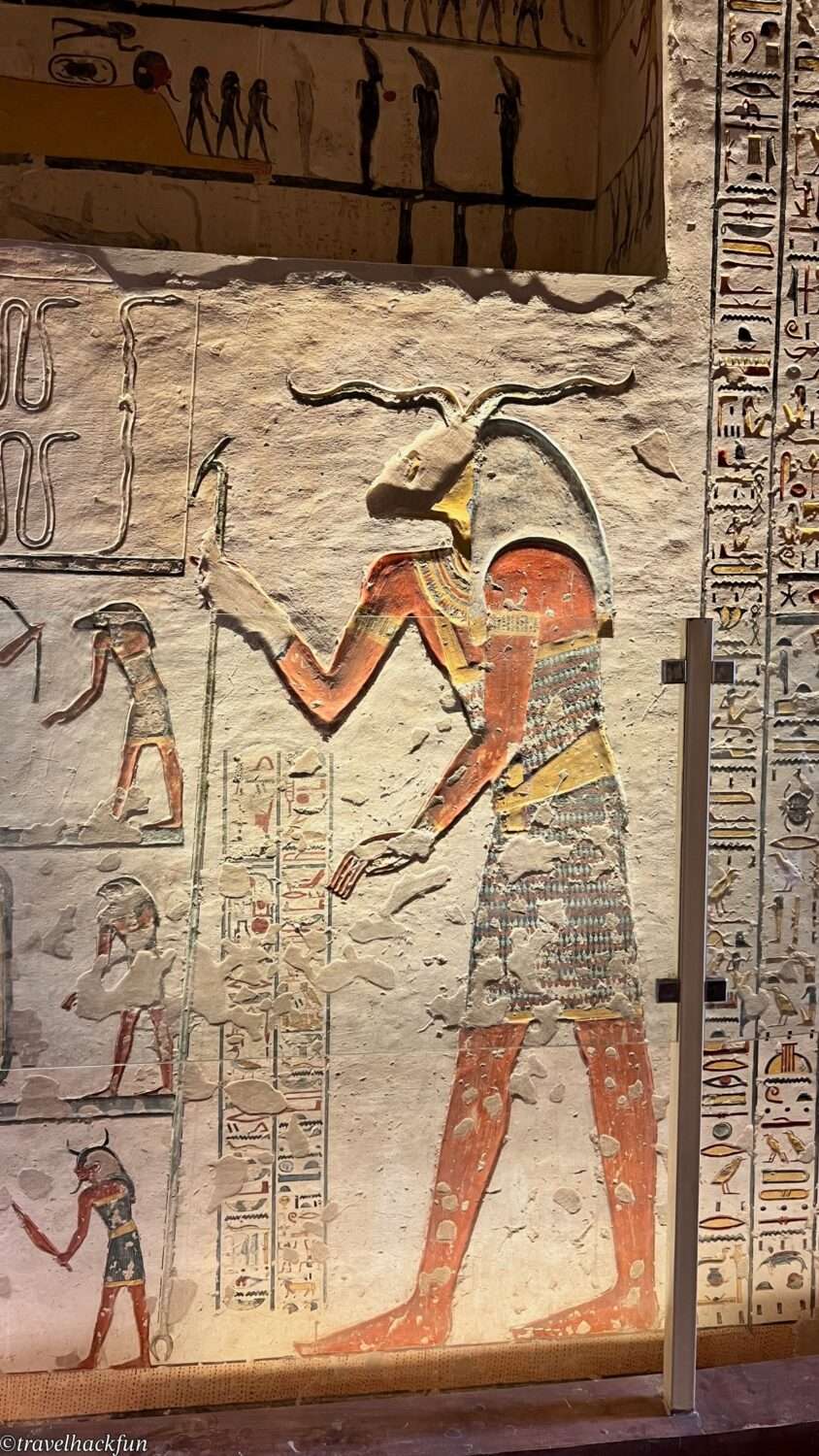
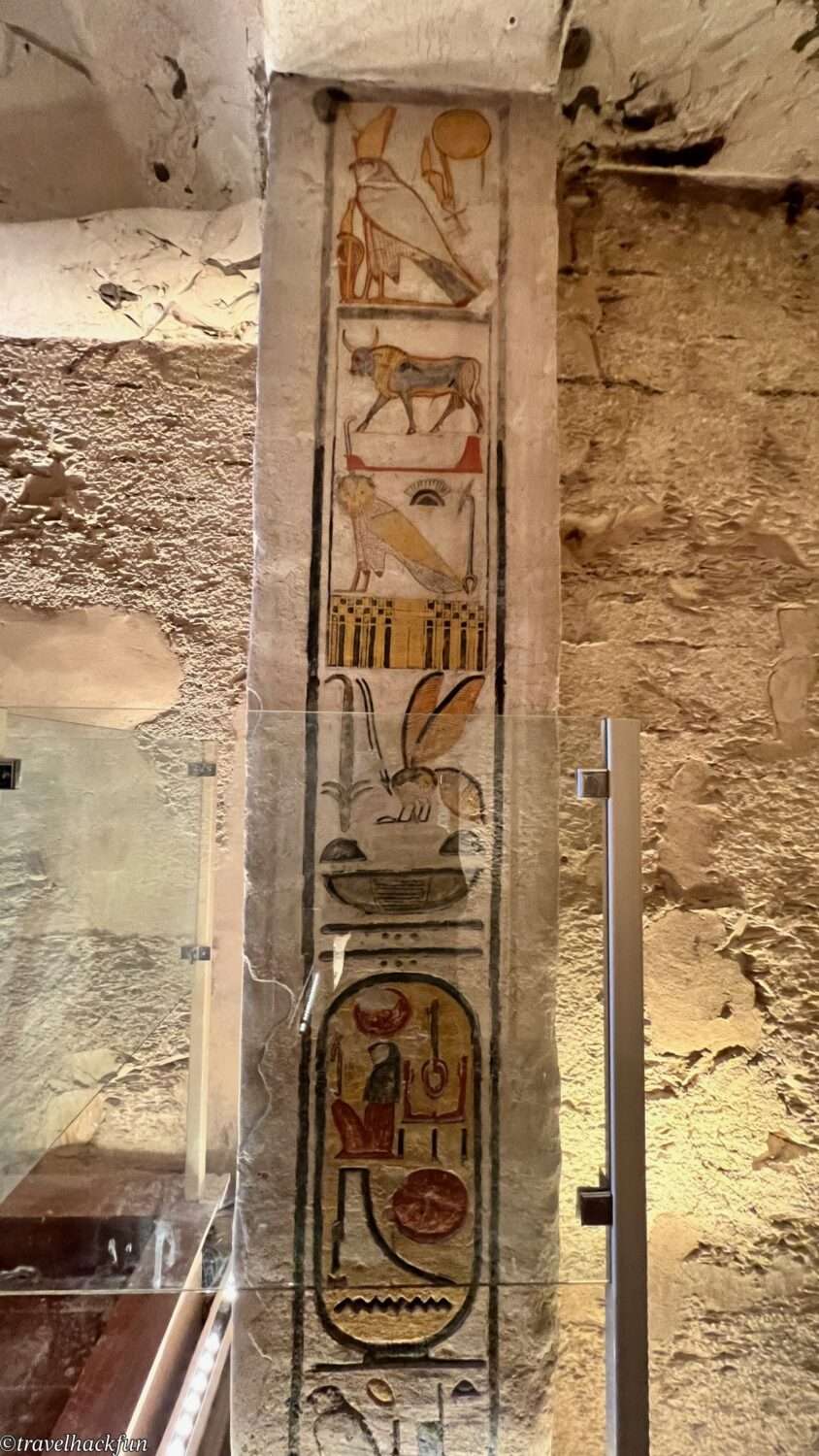
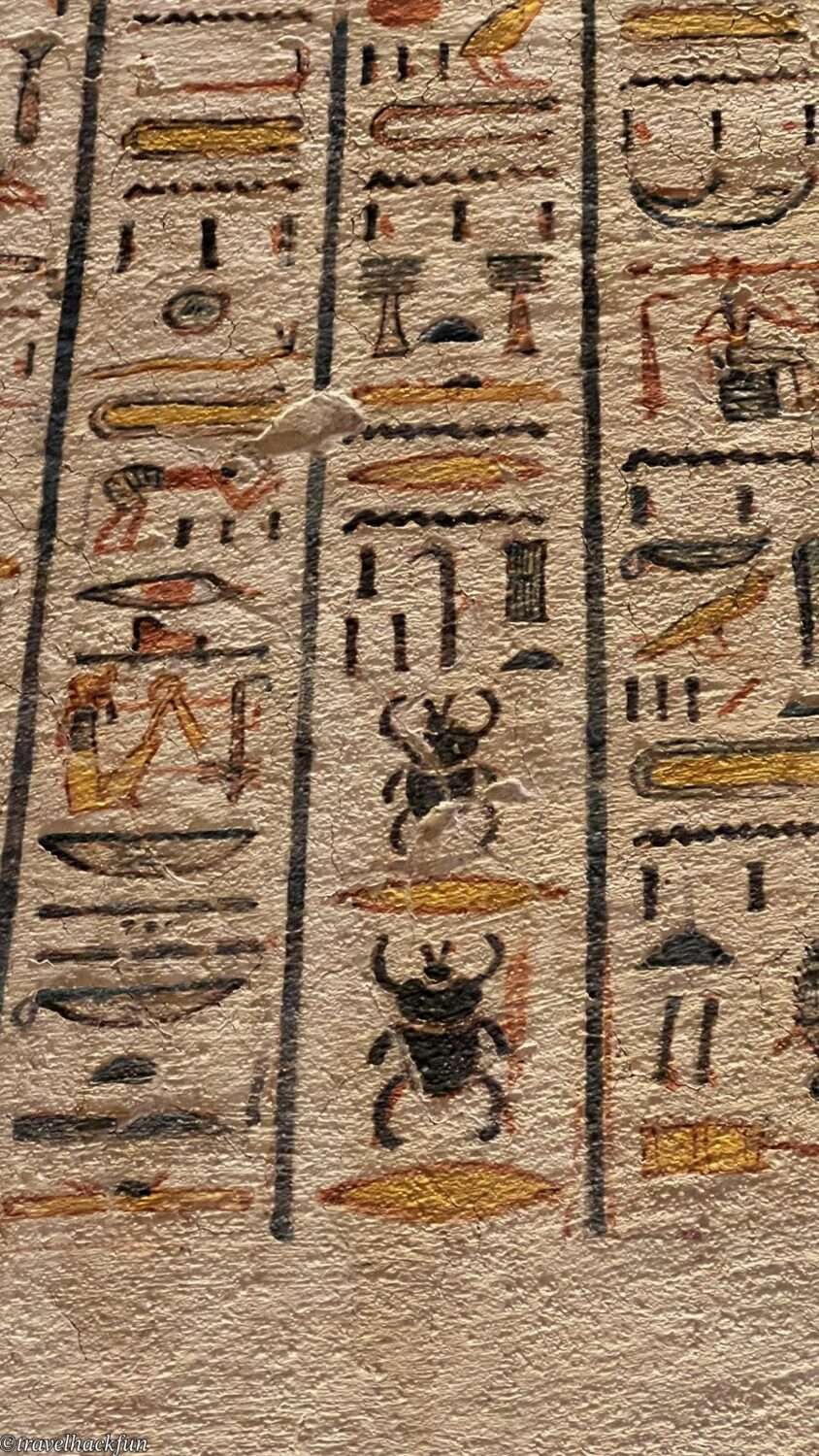
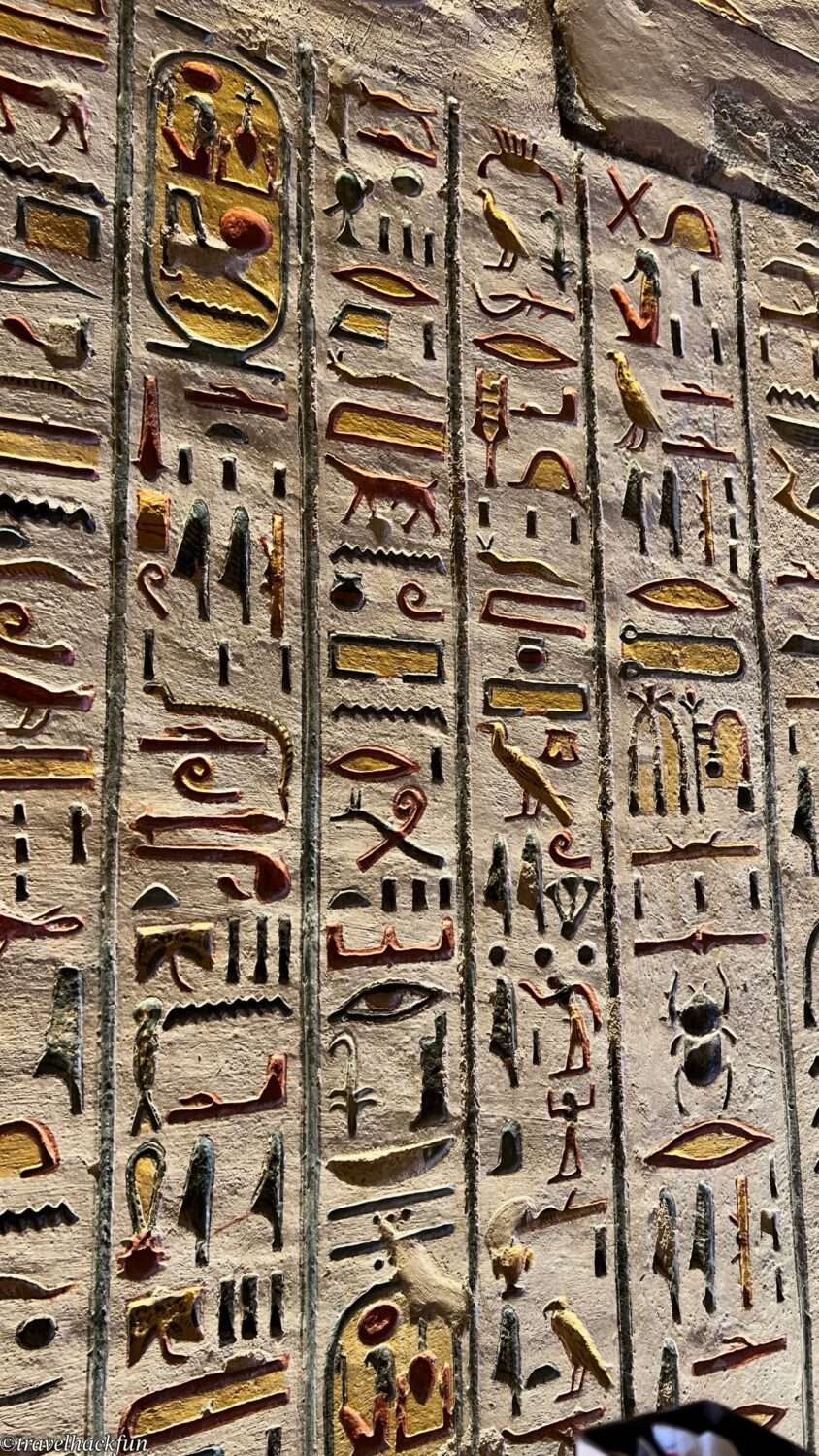
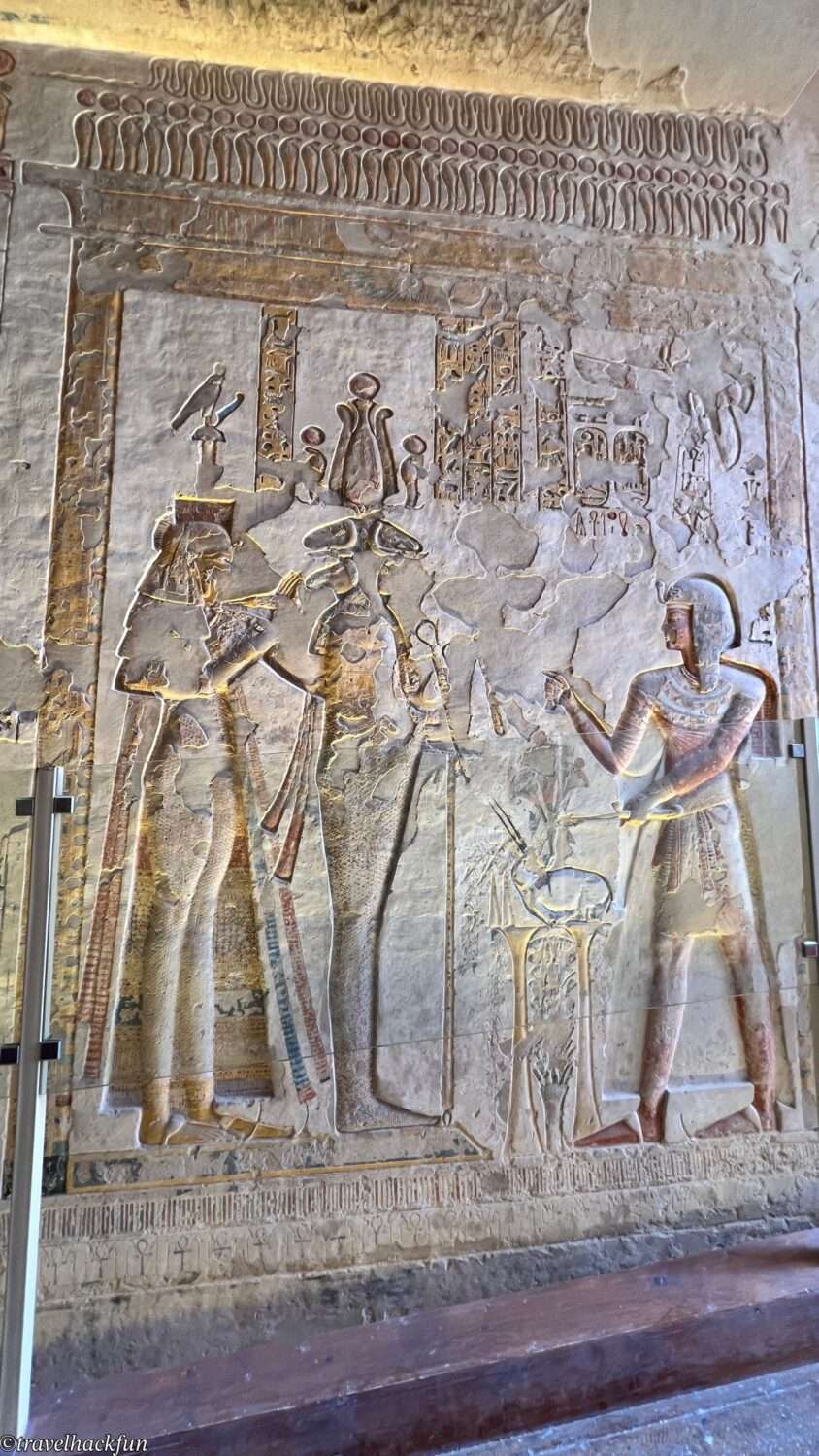
In the burial chamber, the ceiling features an image of the sky goddess Nut, while the walls depict Ramses IX on a solar barque surrounded by gods. The vivid use of yellow, dark blue, and black colors in the paintings is relatively rare and makes the tomb stand out.


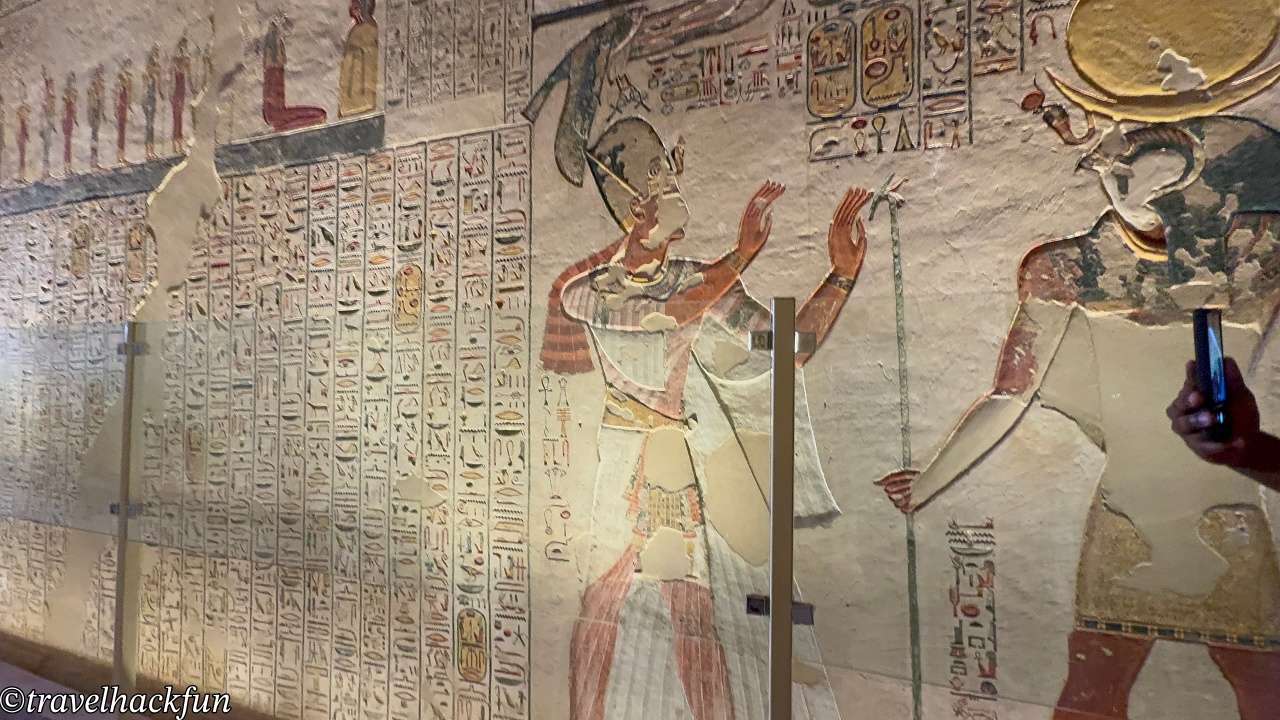

KV17 | Tomb of Seti I
The tomb of Seti I, designated as KV17, is located in the heart of the Valley of the Kings and is widely recognized as the most exquisitely decorated and best-preserved tomb in the valley. Seti I was a pharaoh of the 19th Dynasty during the New Kingdom period and the father of Ramesses II. His reign is marked by numerous grand constructions and artifacts. The murals and reliefs in KV17 are exceptionally intricate, with nearly every ceiling and wall in the tomb adorned with detailed carvings. It is regarded by many as the "must-see highlight" of the Valley of the Kings. However, due to its high artistic value, an additional ticket is required to visit, and it is the most expensive among all the tombs. Nevertheless, I firmly believe that if your budget and schedule allow, this is an experience that should not be missed when visiting the Valley of the Kings.
As you walk into the tomb passage, you will notice that the murals along the entire corridor are relatively well-preserved, with colors still remarkably vivid. The tomb of Seti I consists of several long corridors that extend downward from the entrance, symbolizing the various journeys the pharaoh undergoes after death. The reliefs and murals on the walls primarily depict various deities and texts related to the afterlife, such as chapters from the *Book of the Dead* and the *Book of the Underworld*. These images are not merely decorative; they represent the ancient Egyptians' beliefs about the afterlife and the trials the pharaoh must face after his death.
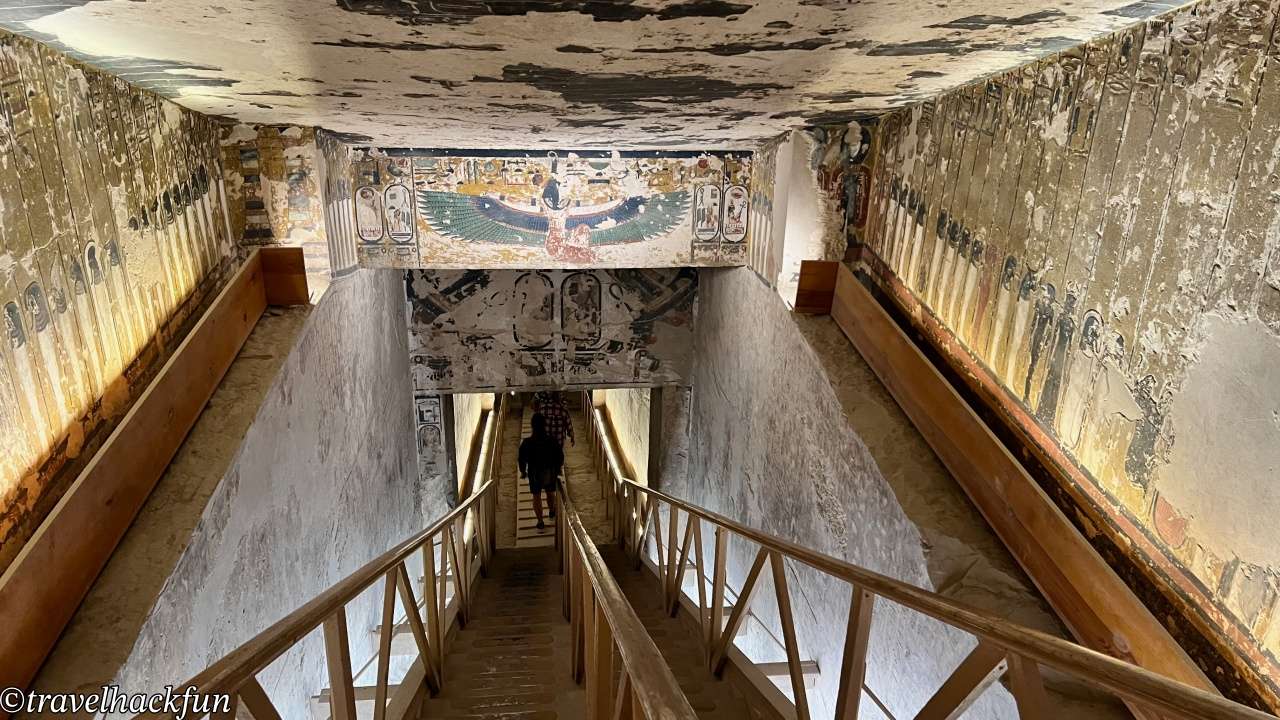

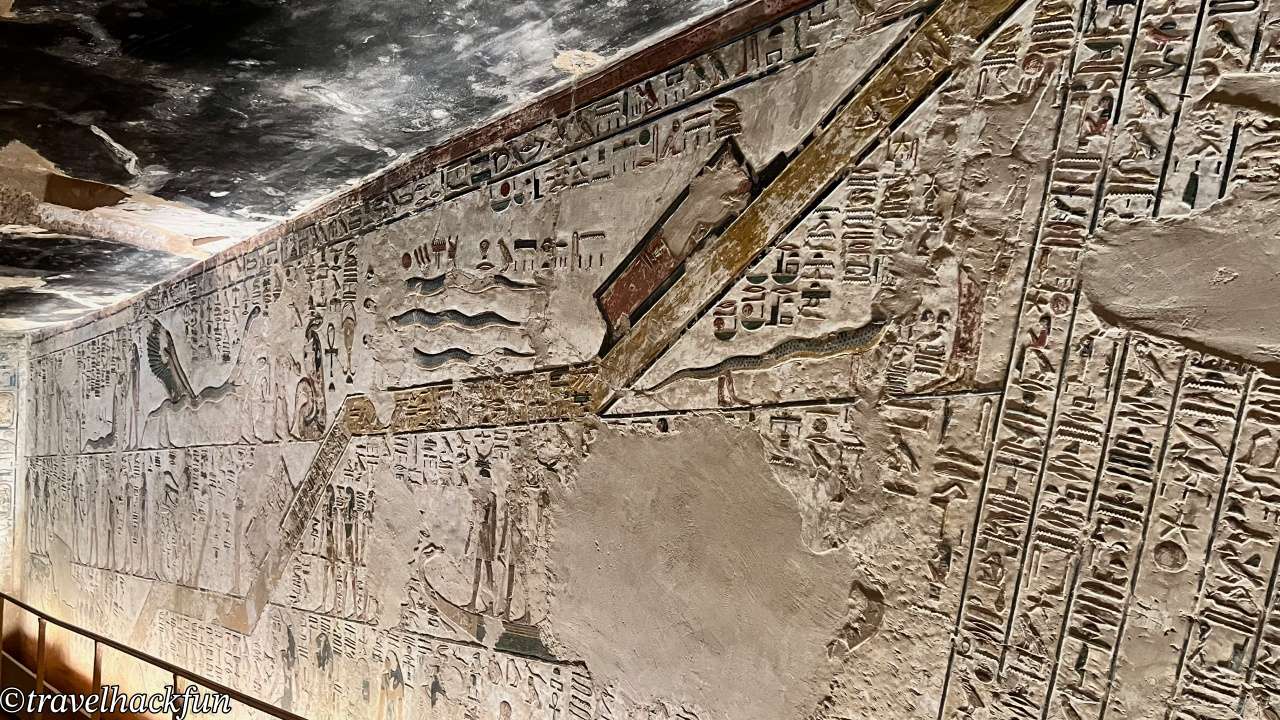

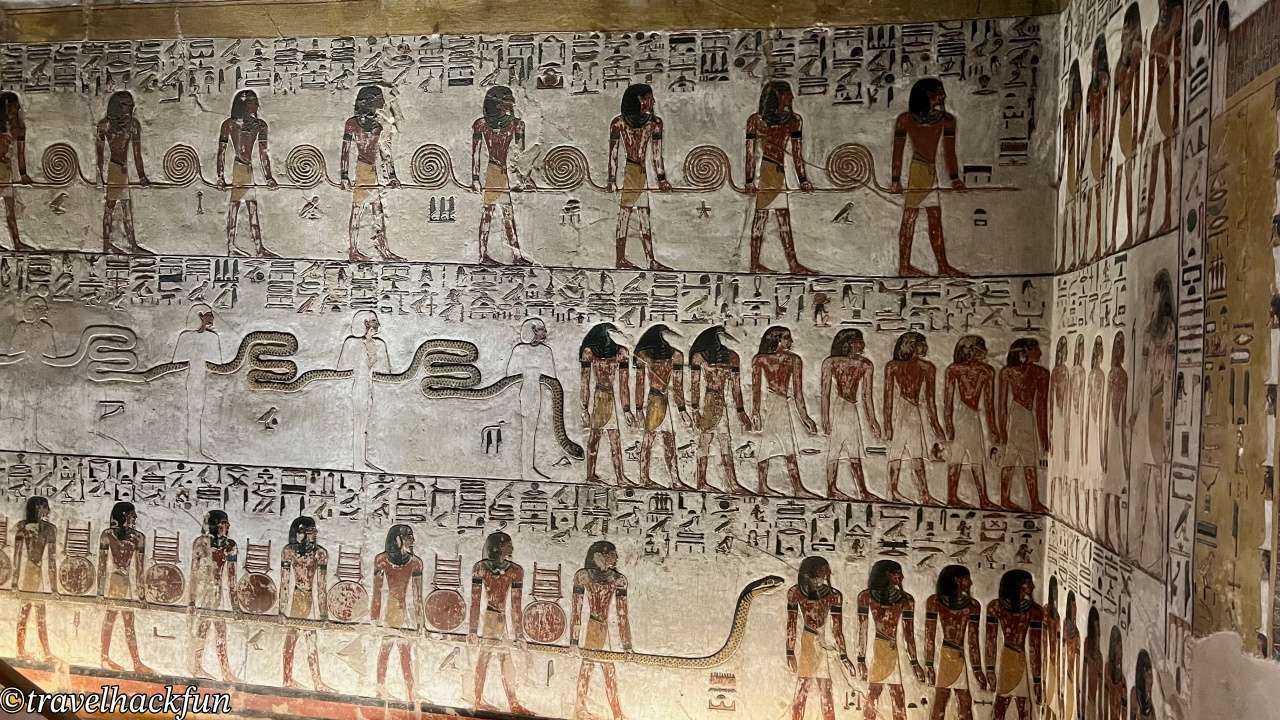
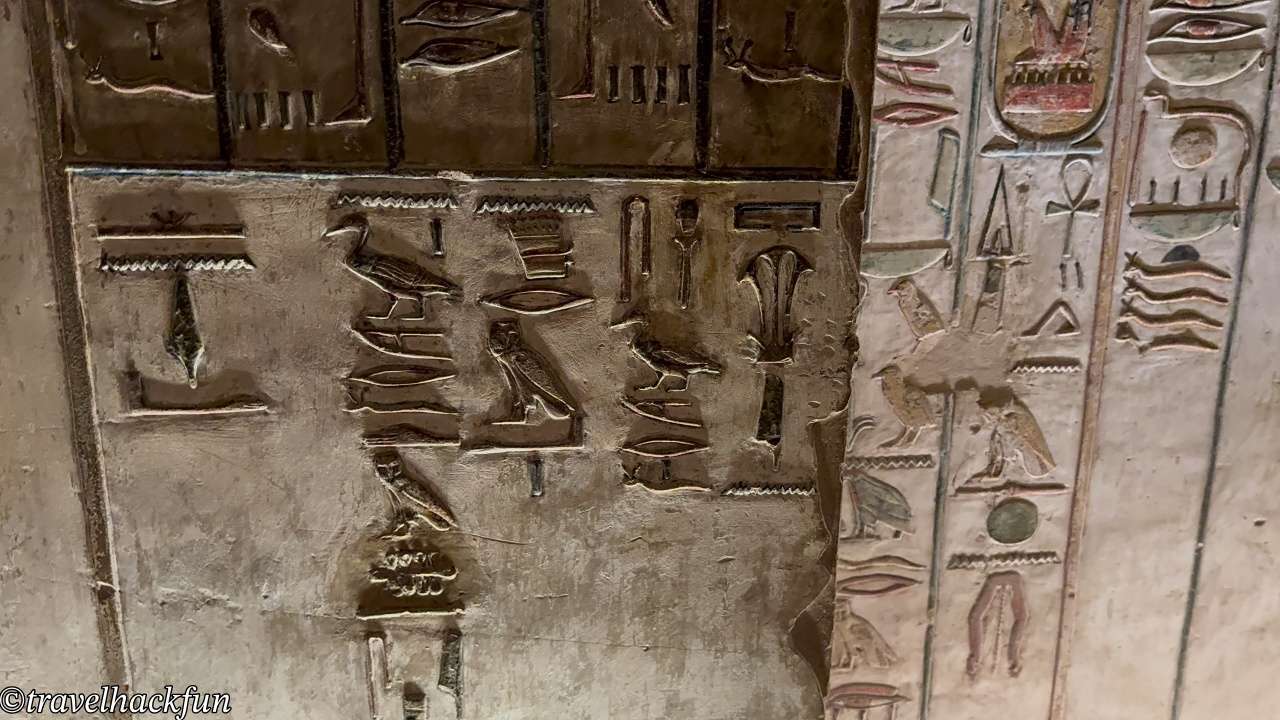
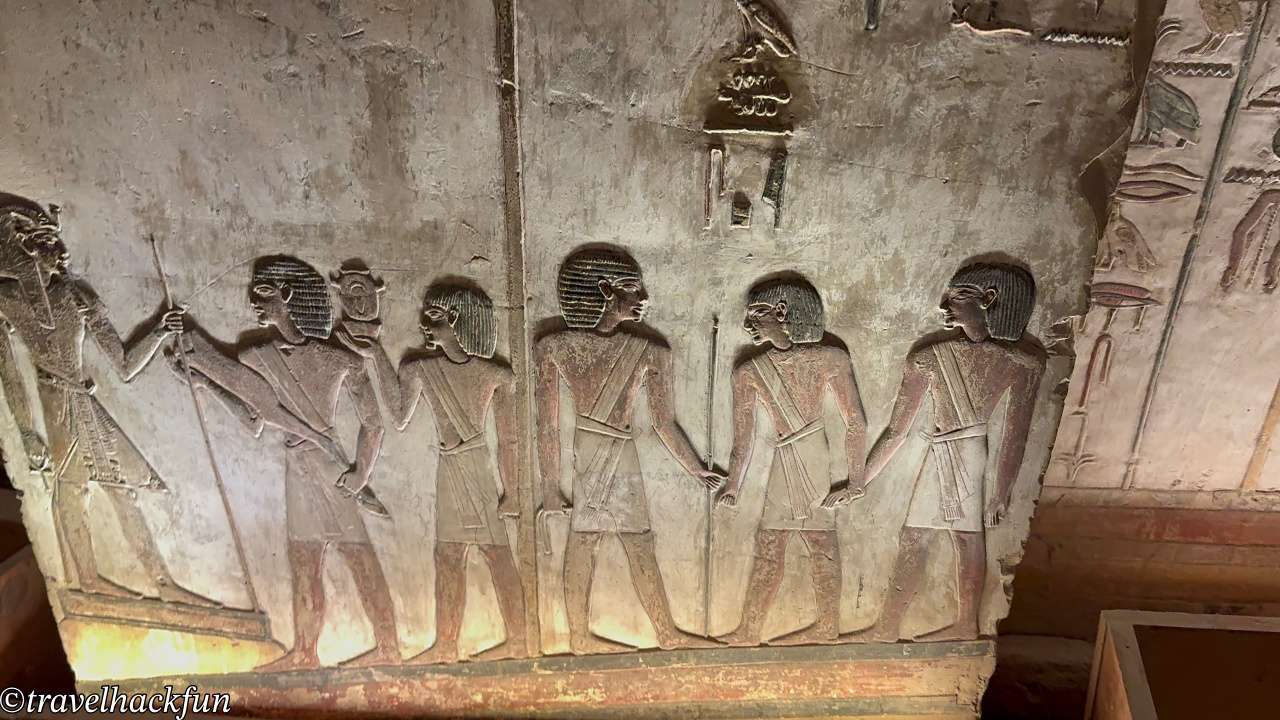
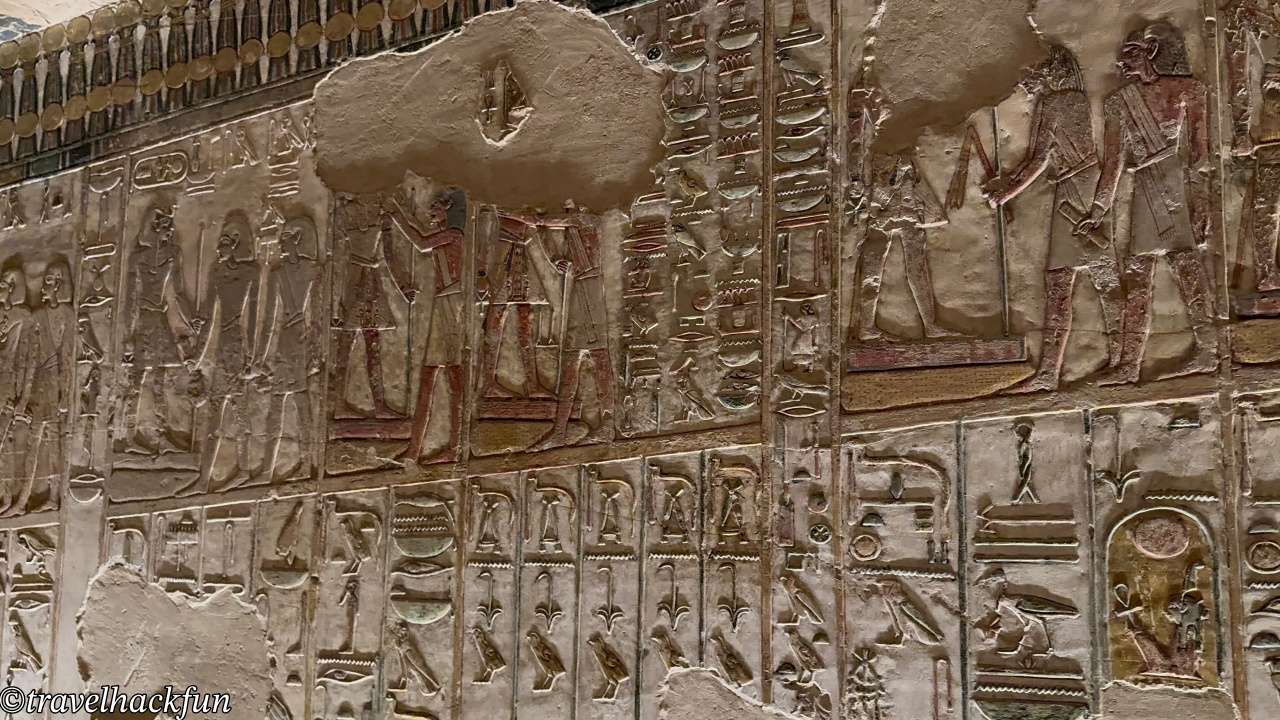
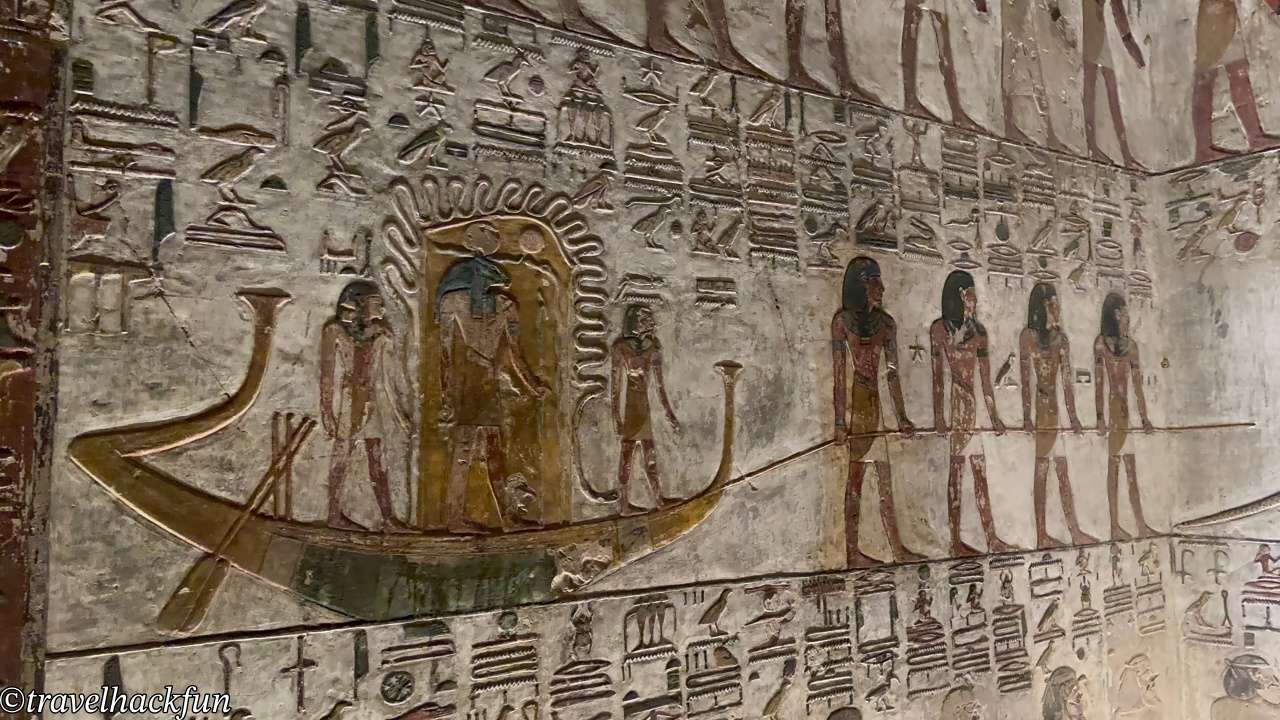
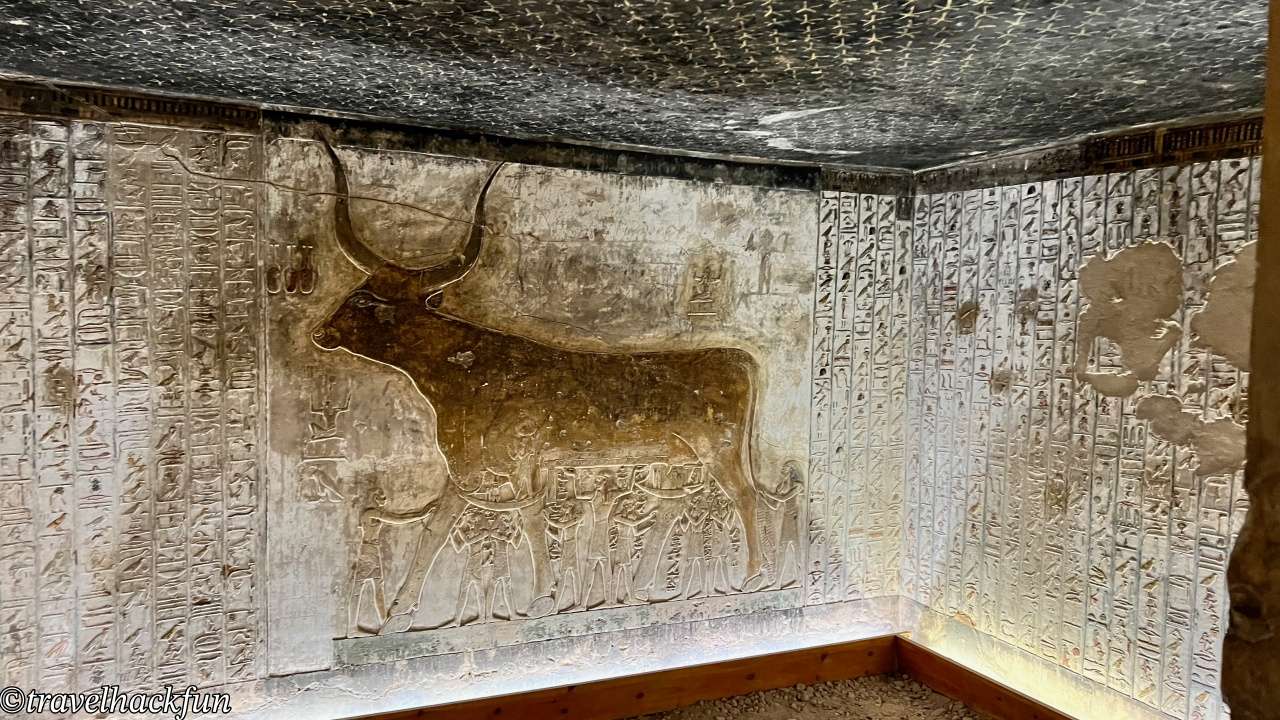
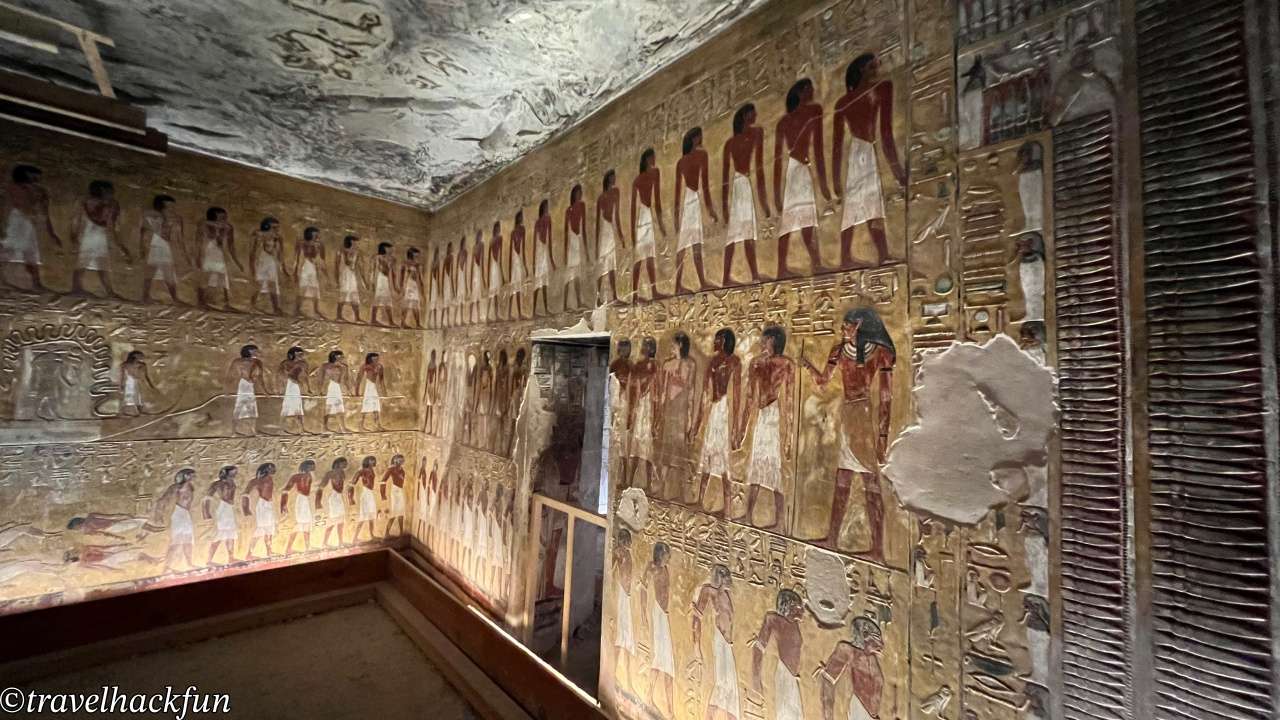

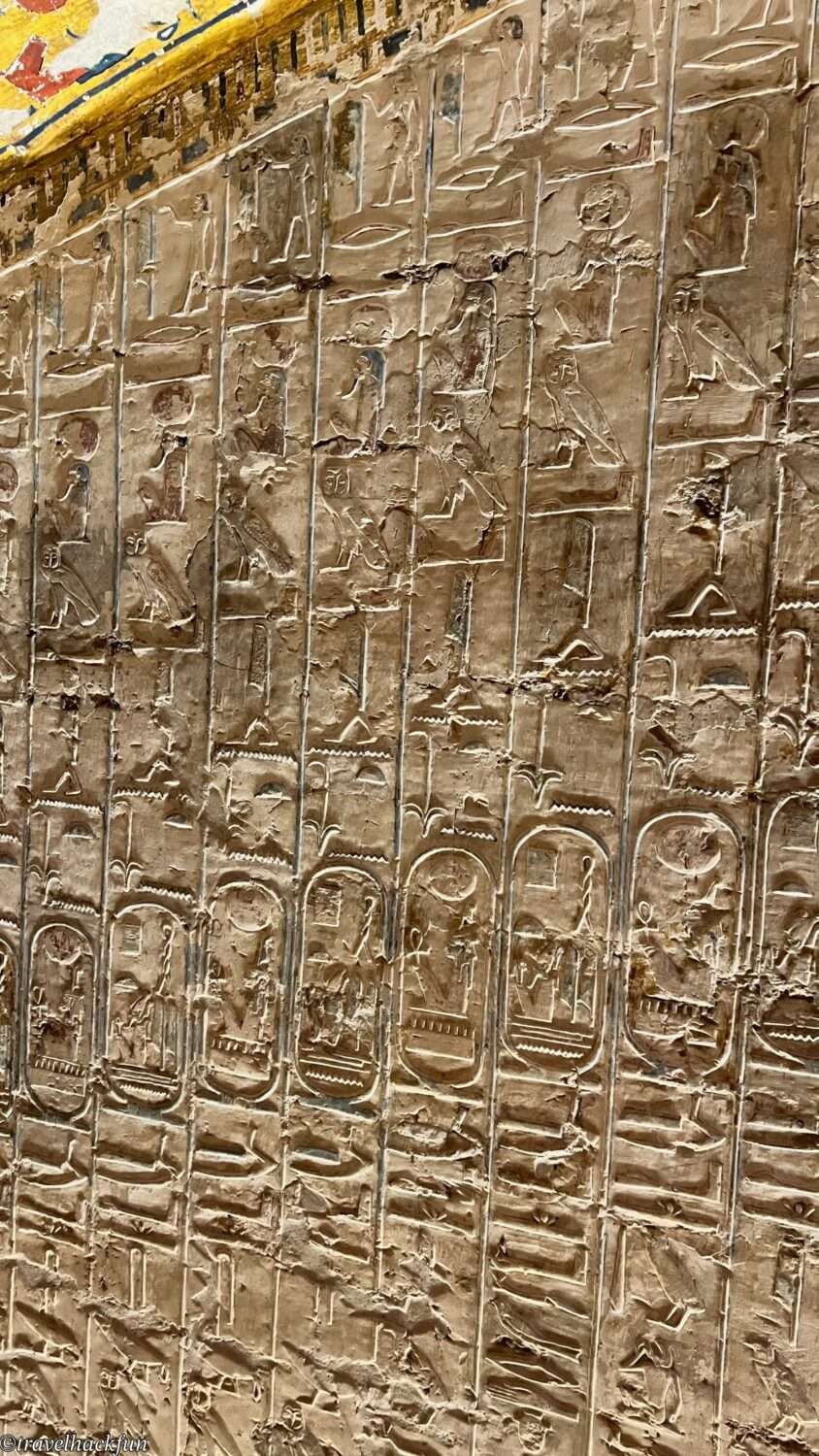
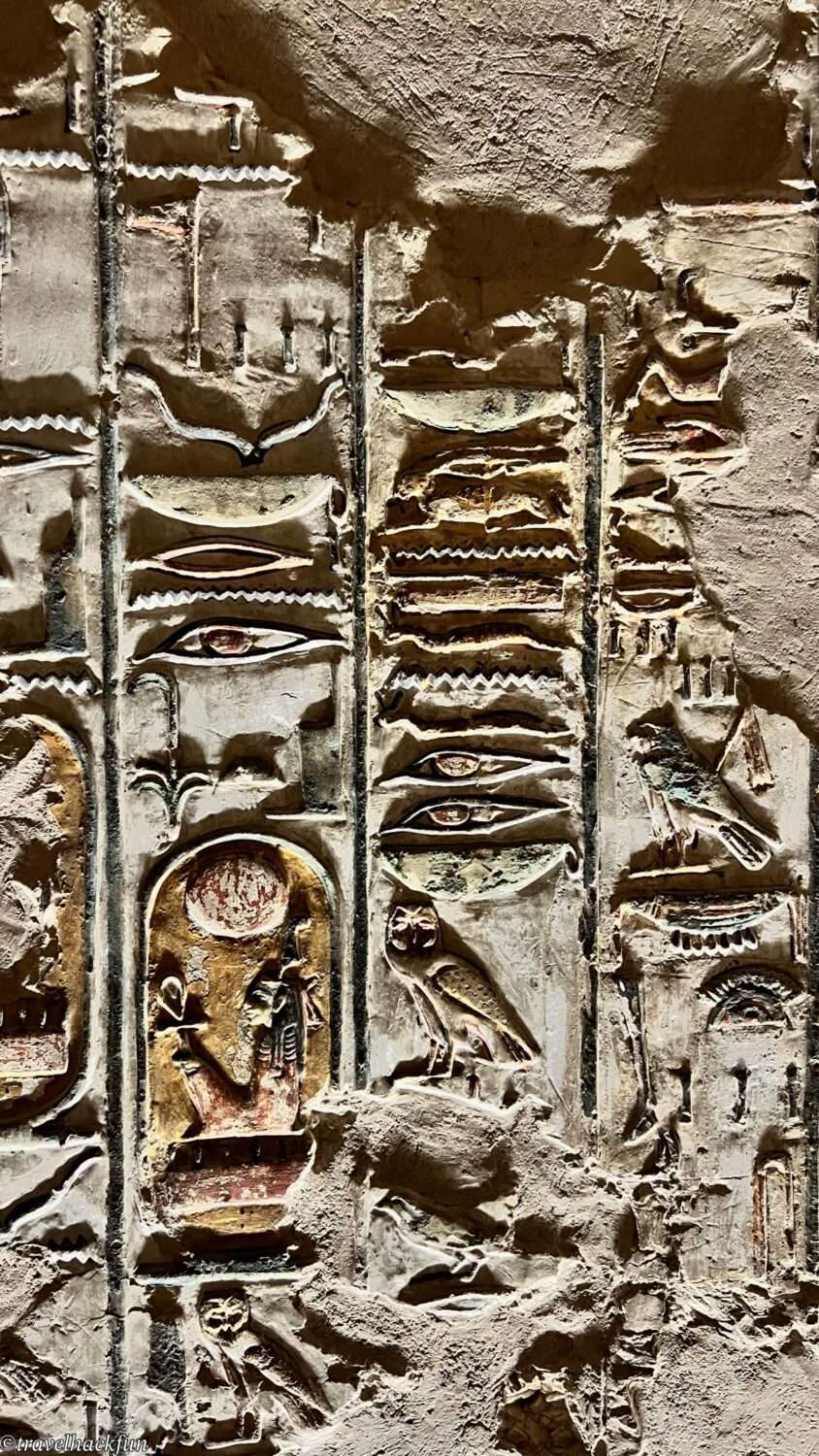
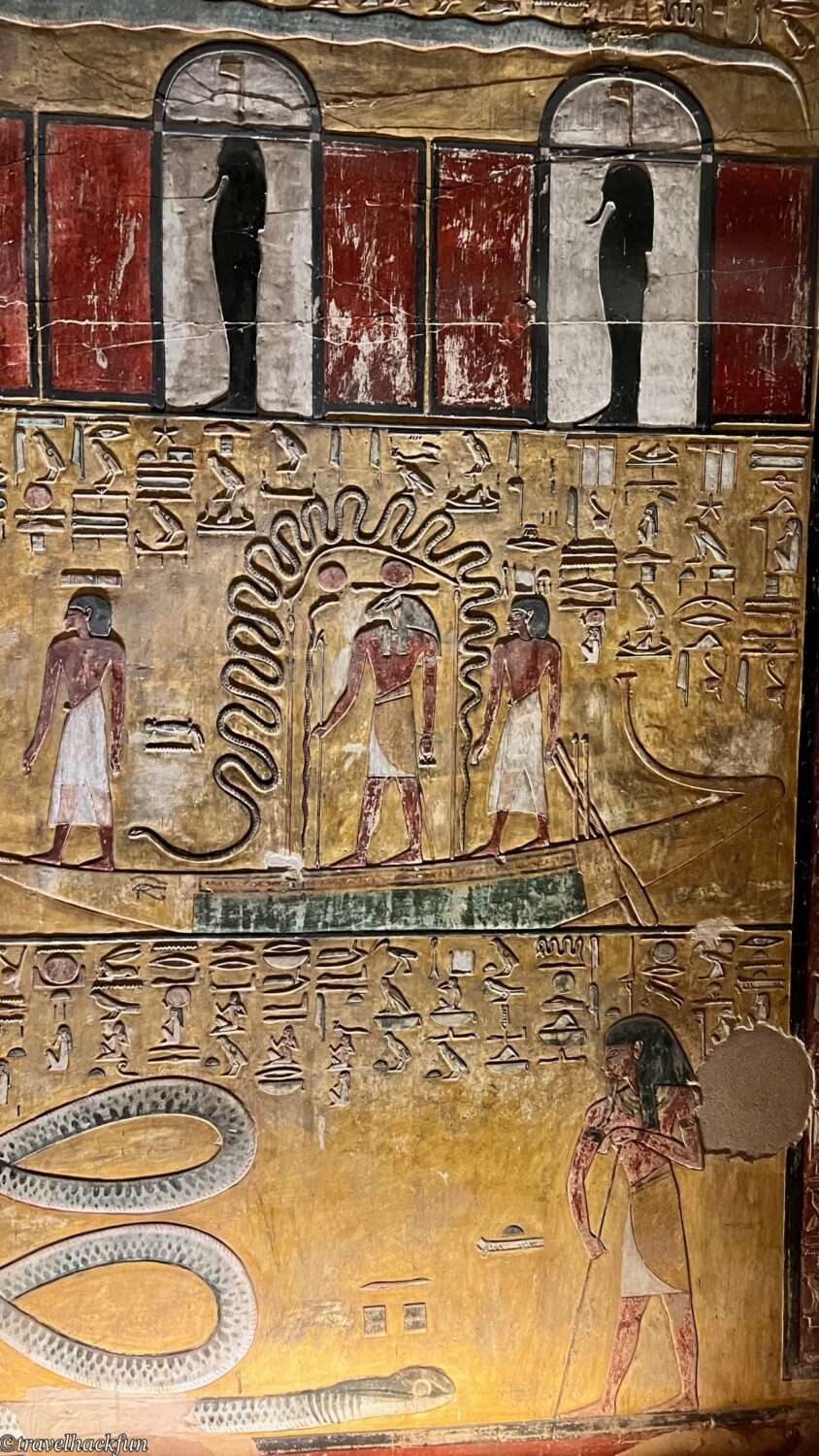
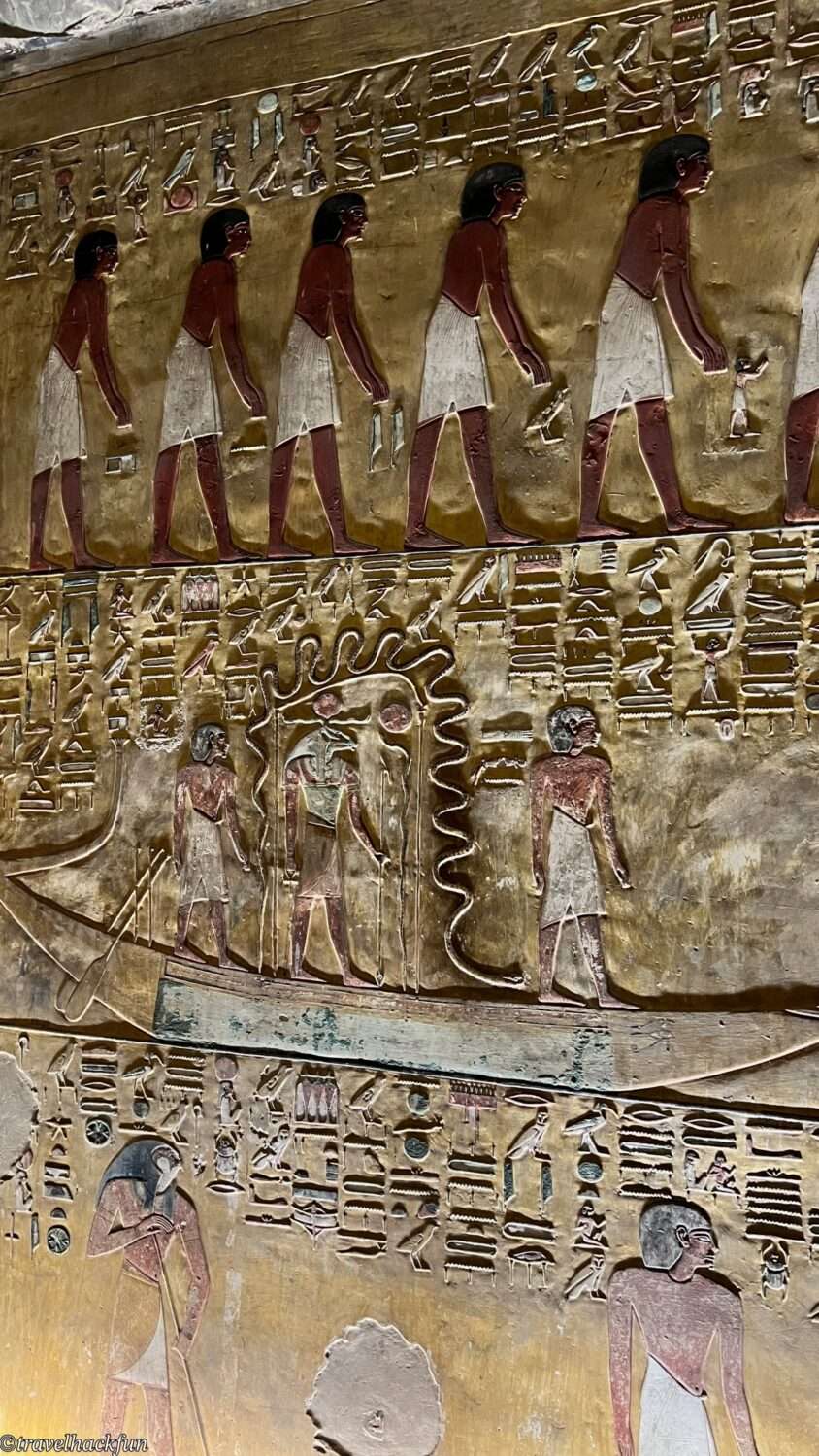
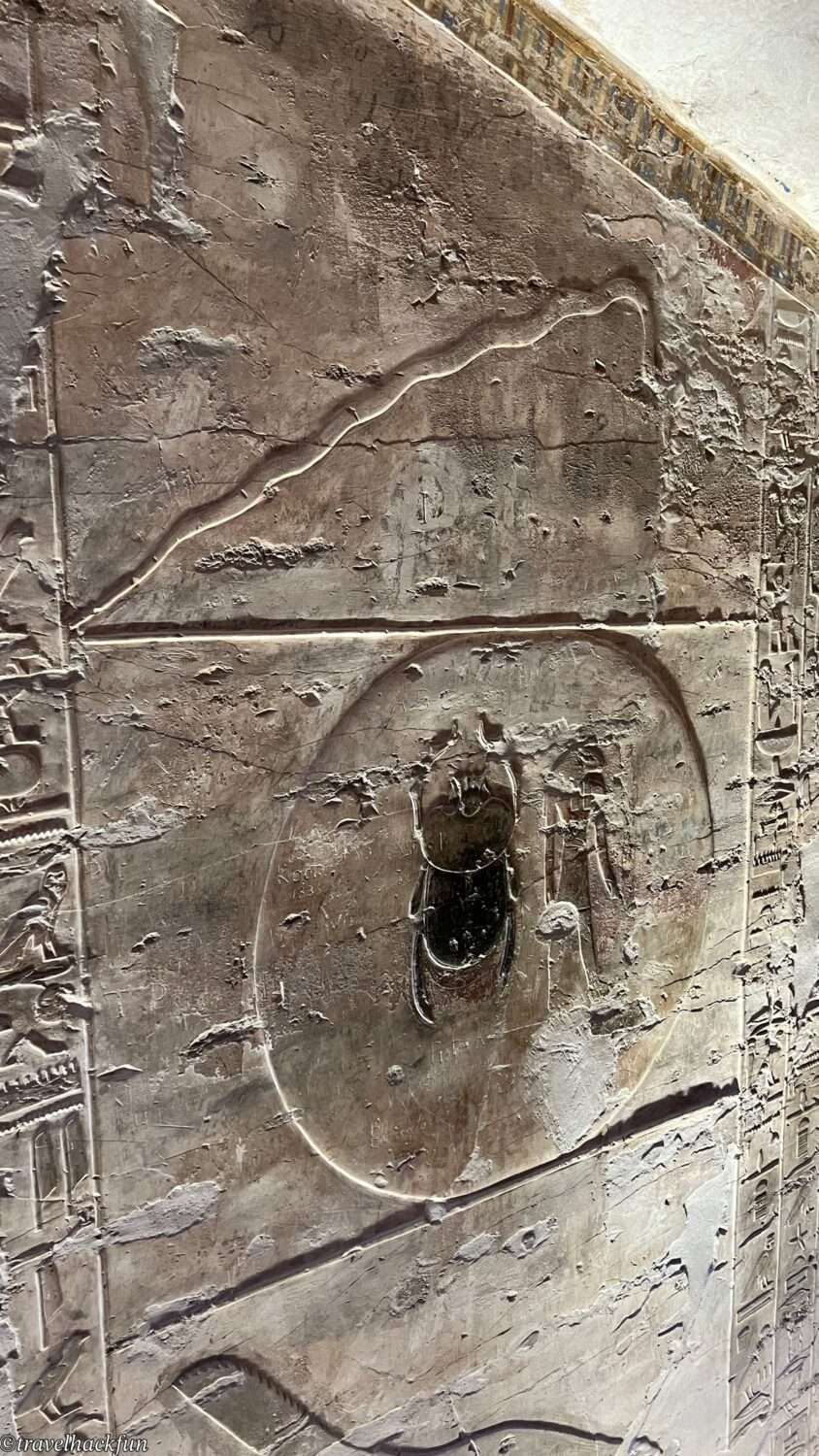
When the tomb of Seti I was discovered in 1817 by the Italian explorer Giovanni Battista Belzoni, the colors of the murals and reliefs were much better preserved. However, due to continuous archaeological research and public access over the years, factors such as environmental humidity and the influx of visitors have caused irreversible damage to the tomb. In the early days, foreign explorers and researchers often used wet paper or plaster to create imprints of the walls and reliefs, which accelerated the peeling of the painted layers. As a result, the Egyptian government now imposes high ticket prices to limit the number of visitors and prevent further damage to this remarkable site.
Each hall of columns and side chamber in the tomb has its own theme and decorative style. The columned halls are especially worth pausing to admire. Upon entering, you will see that the columns are covered with inscriptions and illustrations praising the ancient Egyptian gods, while the ceilings are adorned with astronomical depictions and mythological scenes, symbolizing the connection between the pharaoh and the gods. These decorations showcase the extraordinary craftsmanship of the artisans of the time, with their exceptional skill in stone cutting and painting. If you observe closely, you’ll notice the intricate use of colors and the remarkable attention to detail in elements such as decorative bands and totems, all rendered with vivid precision.

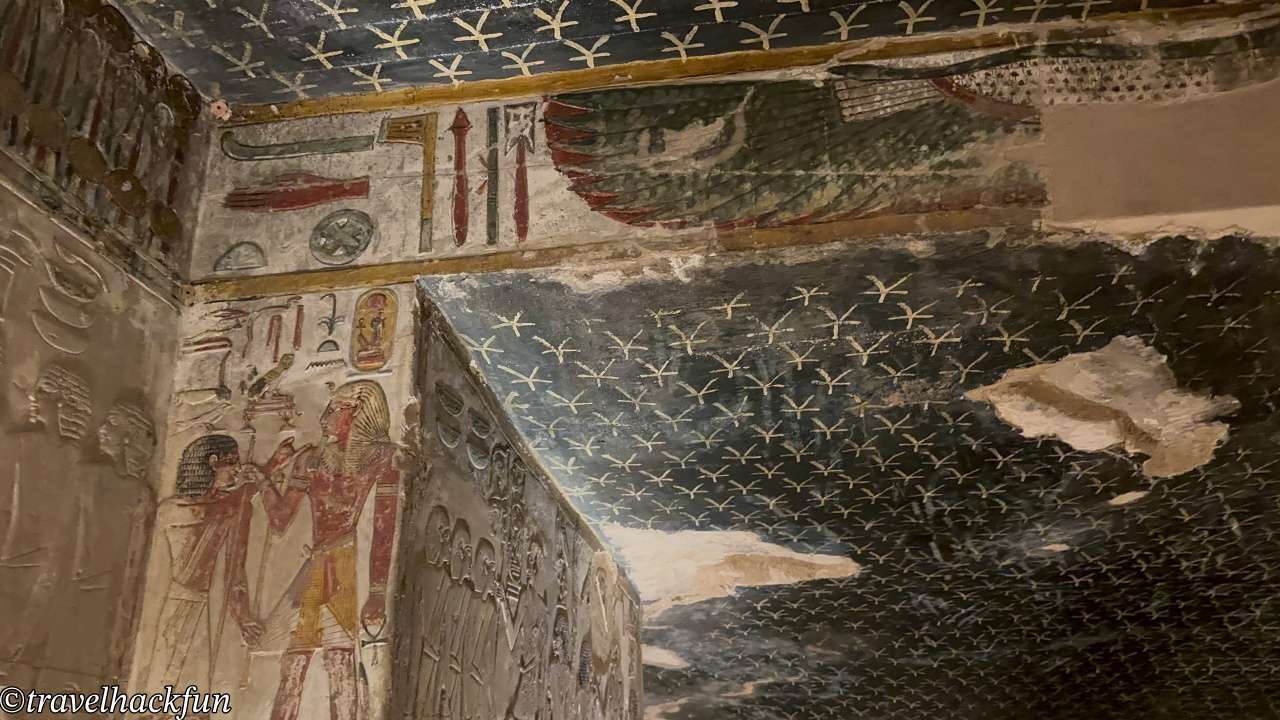

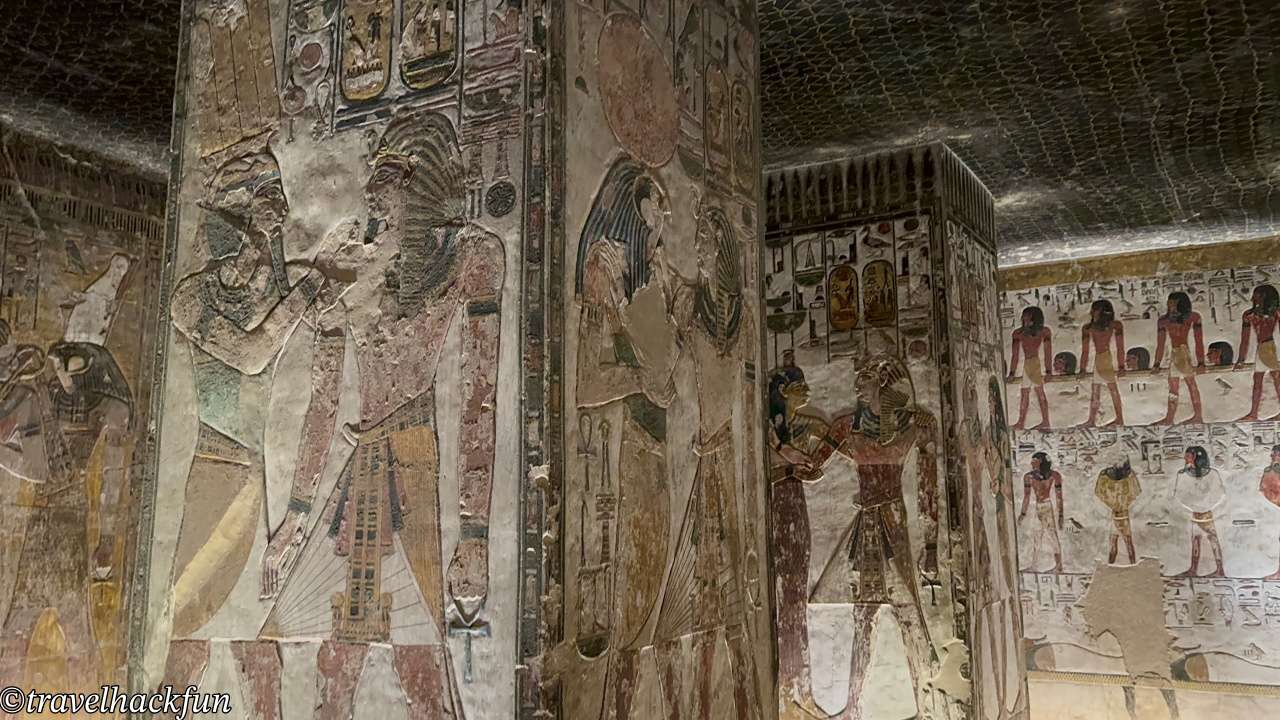
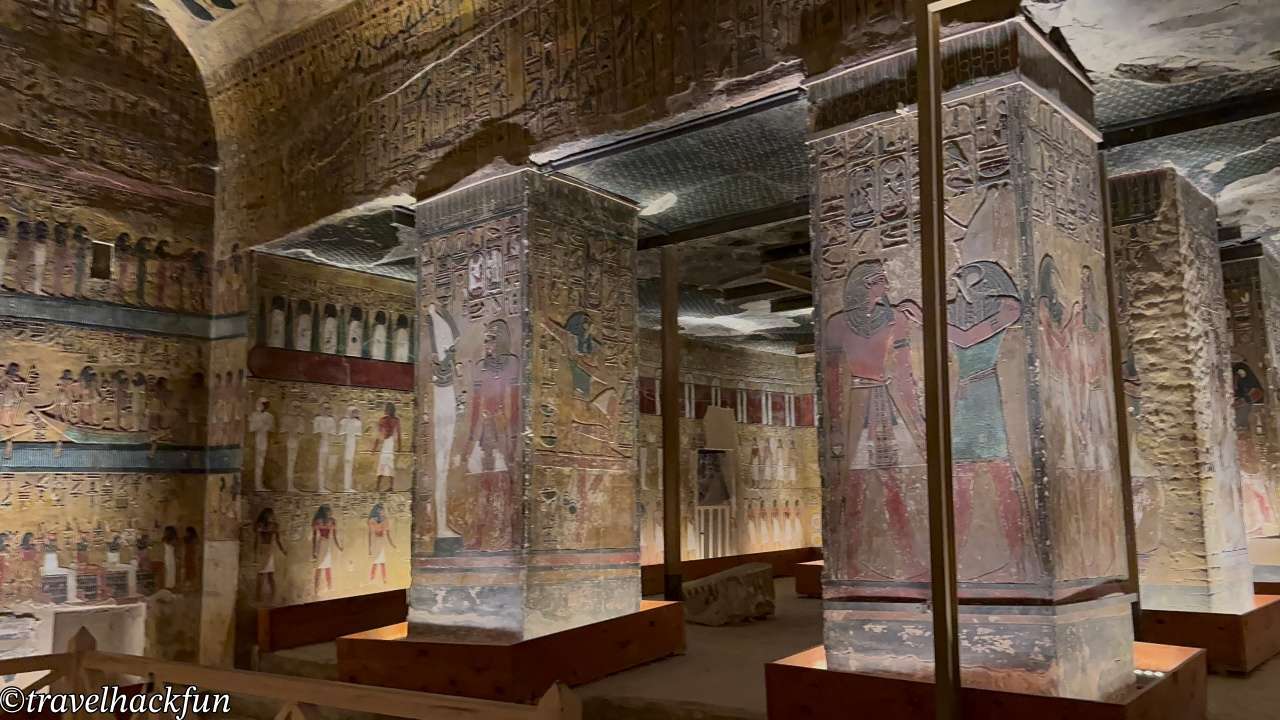
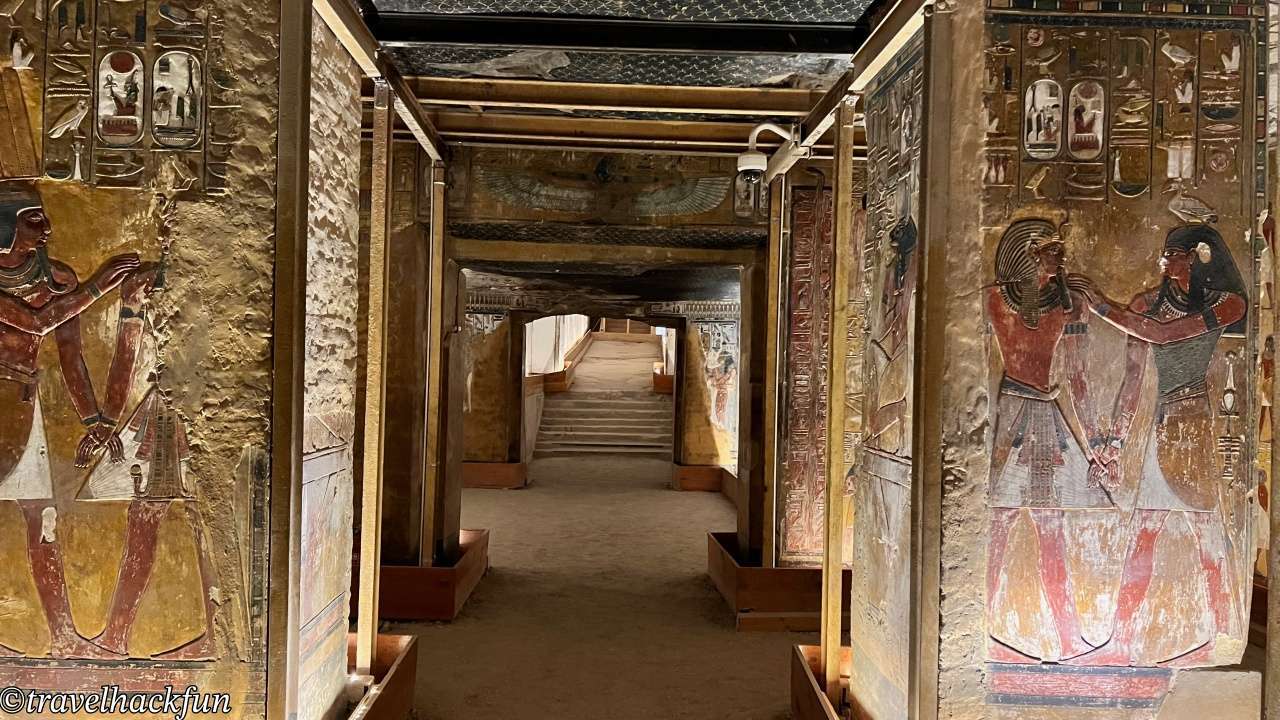
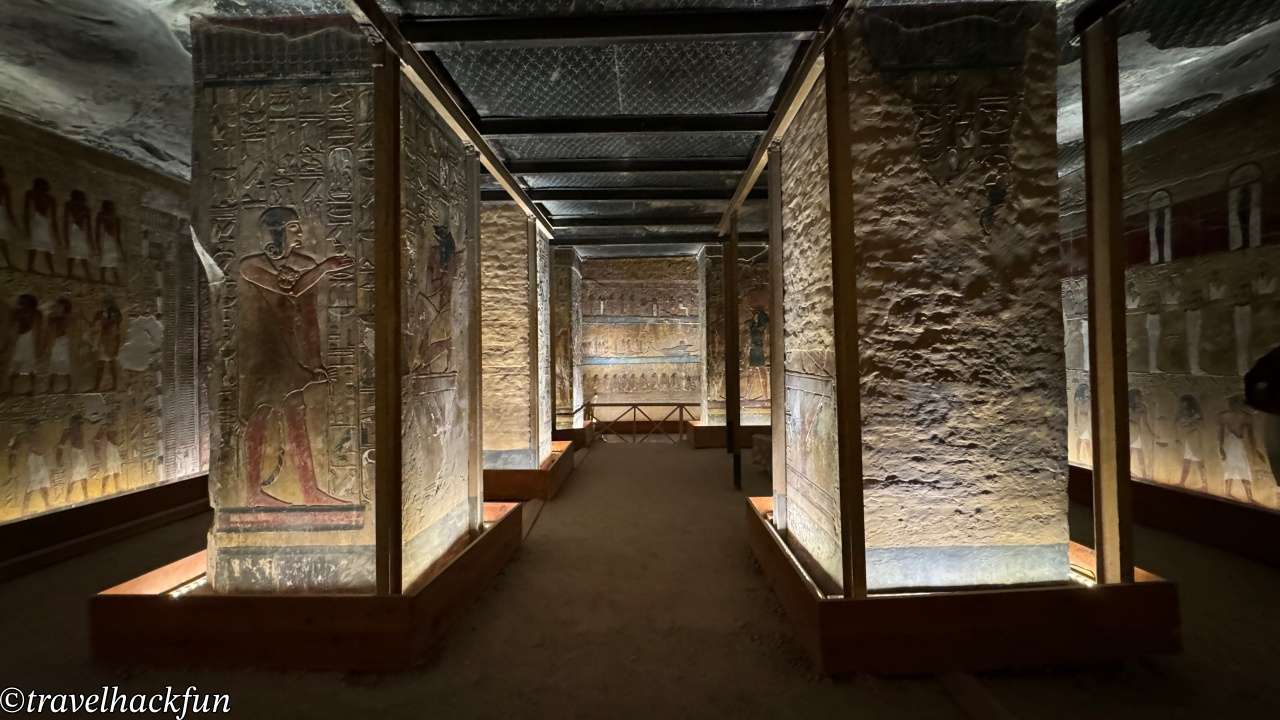
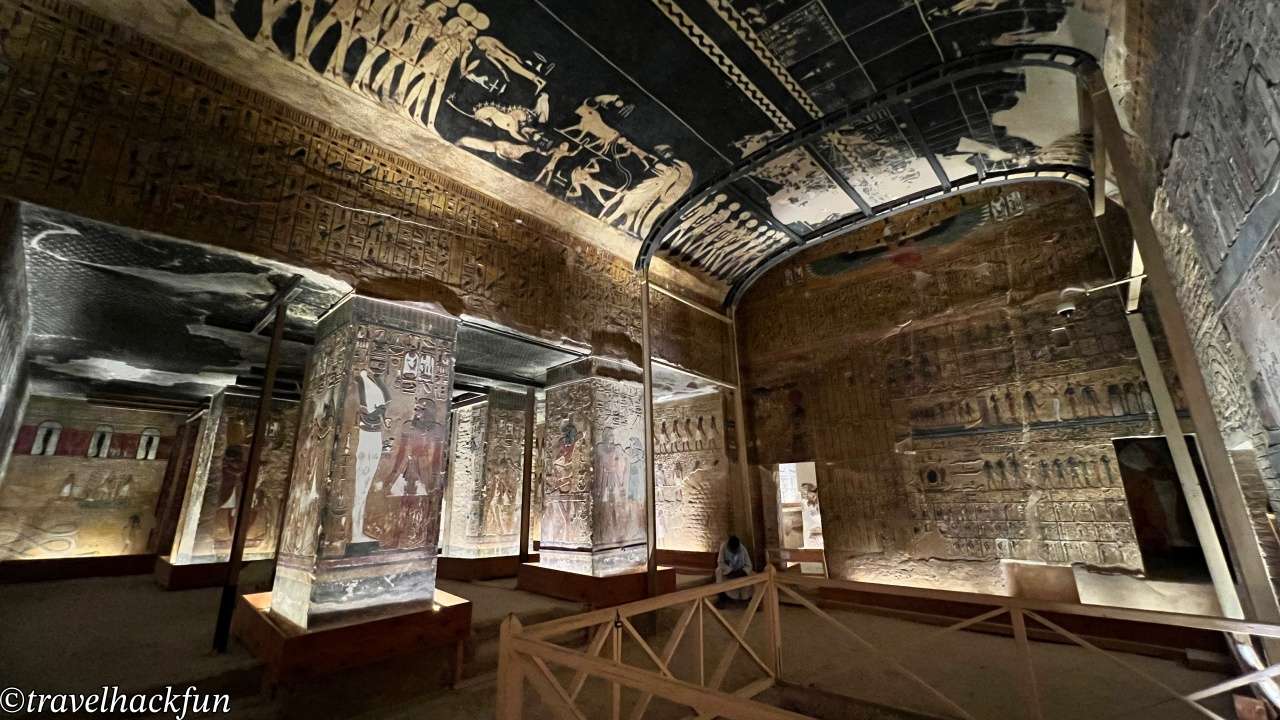

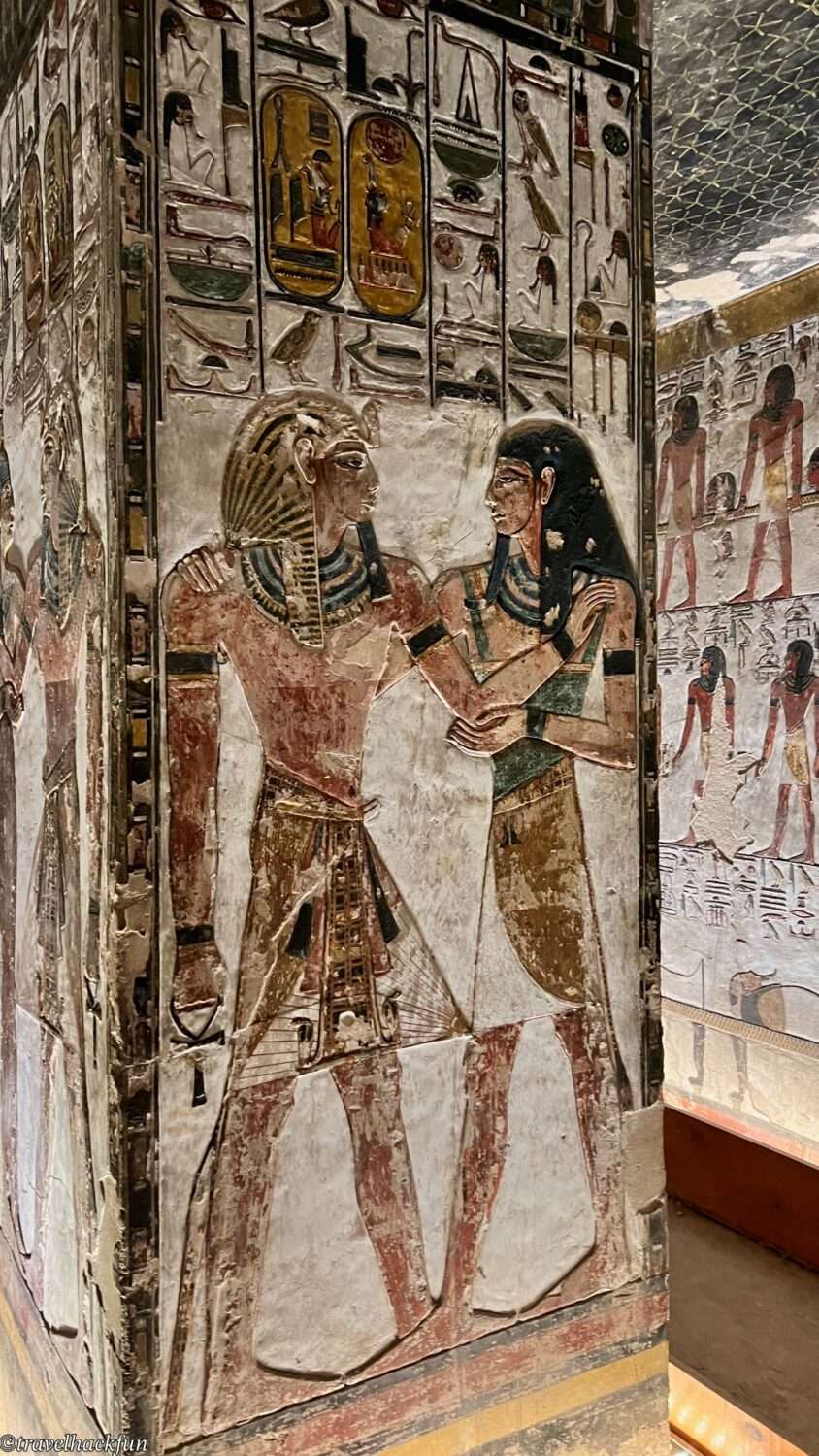
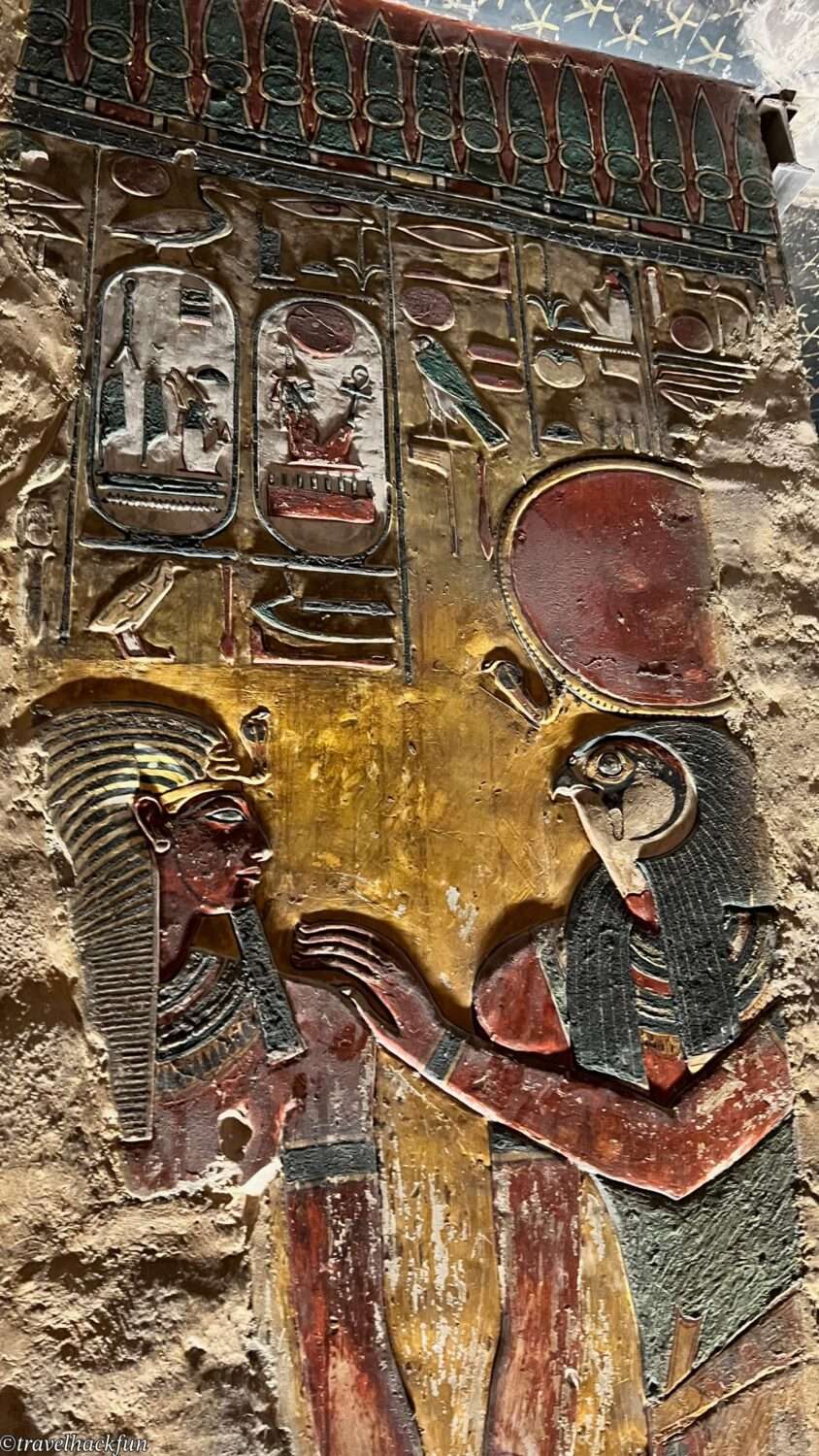
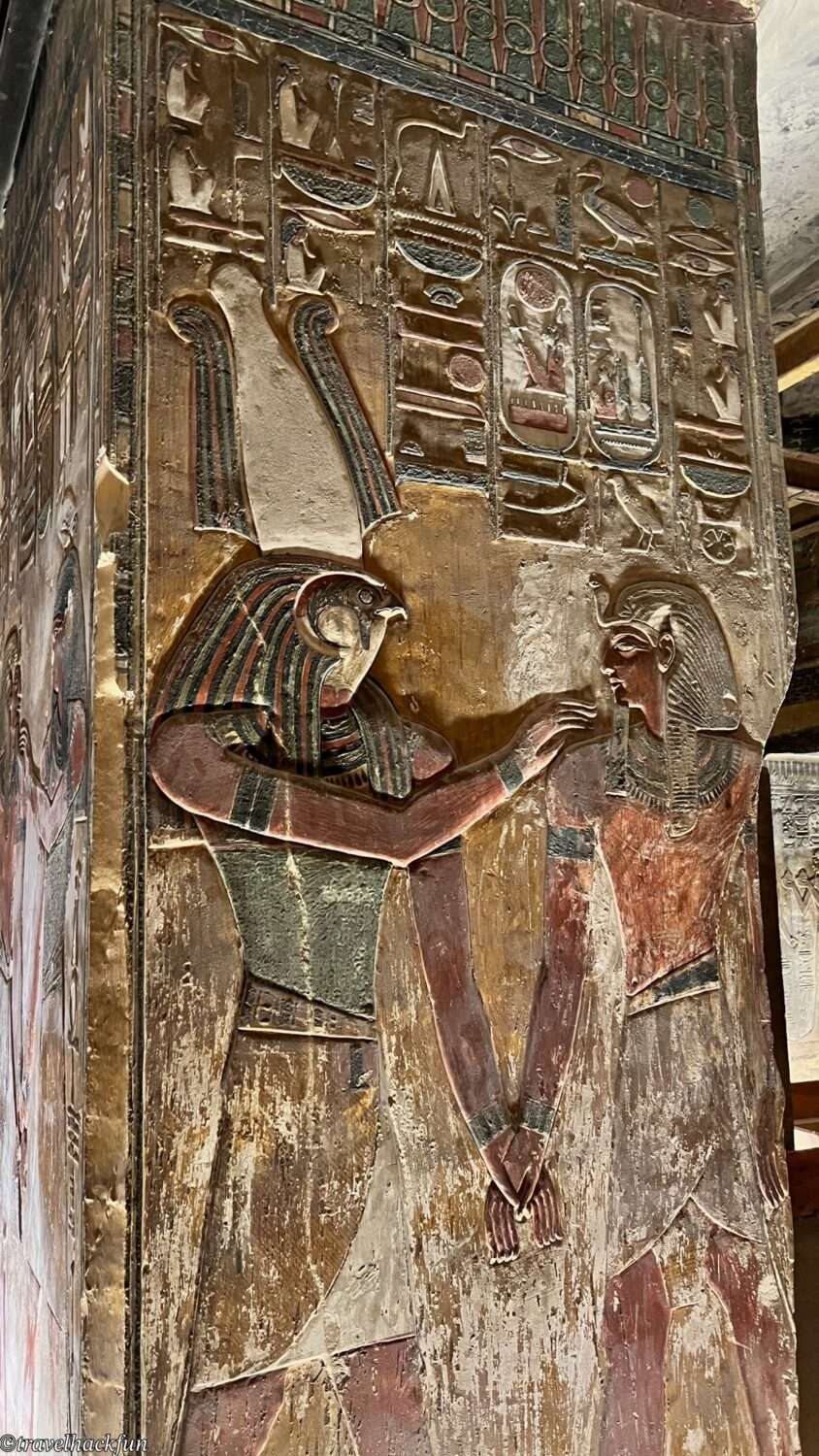
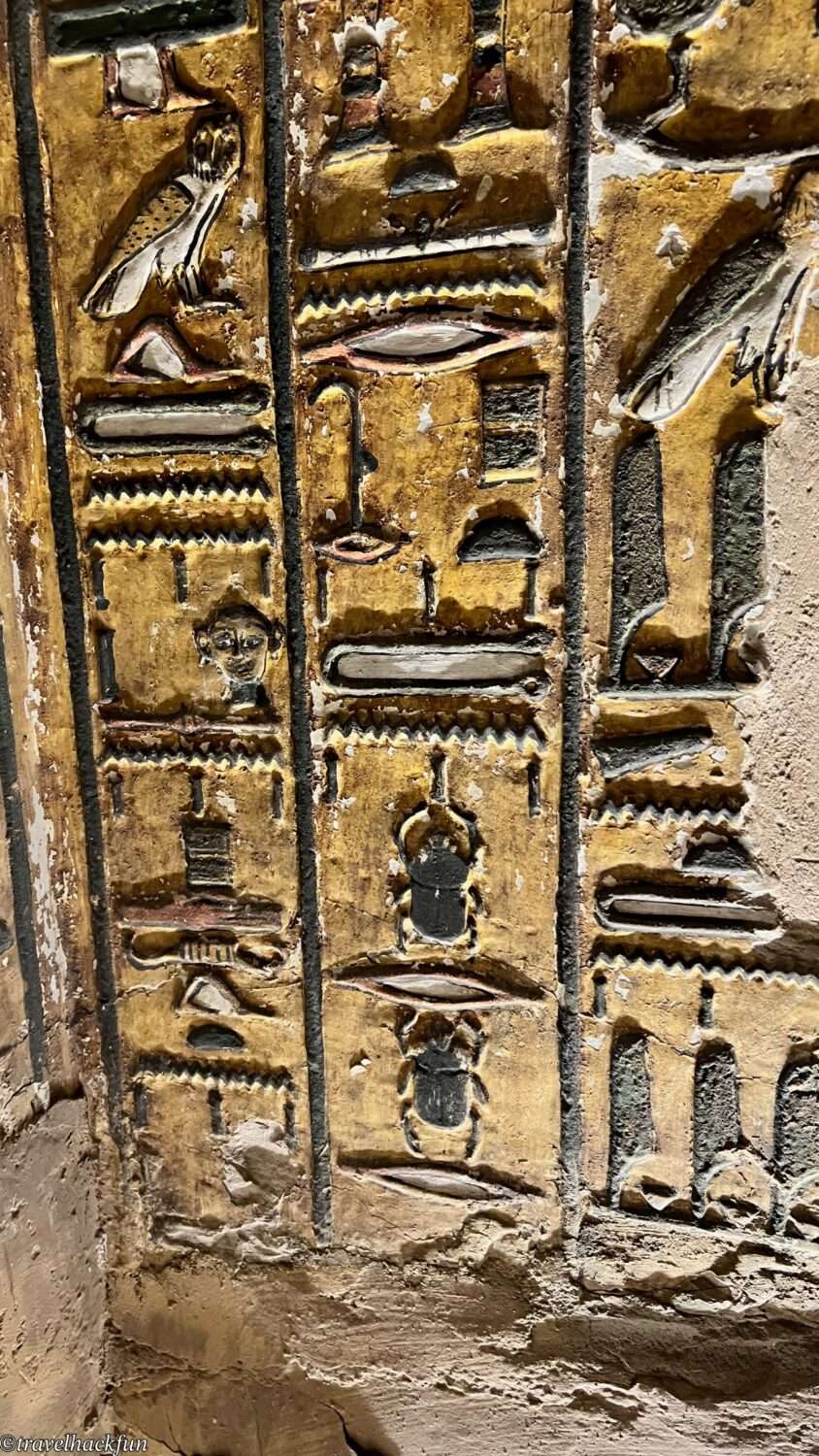
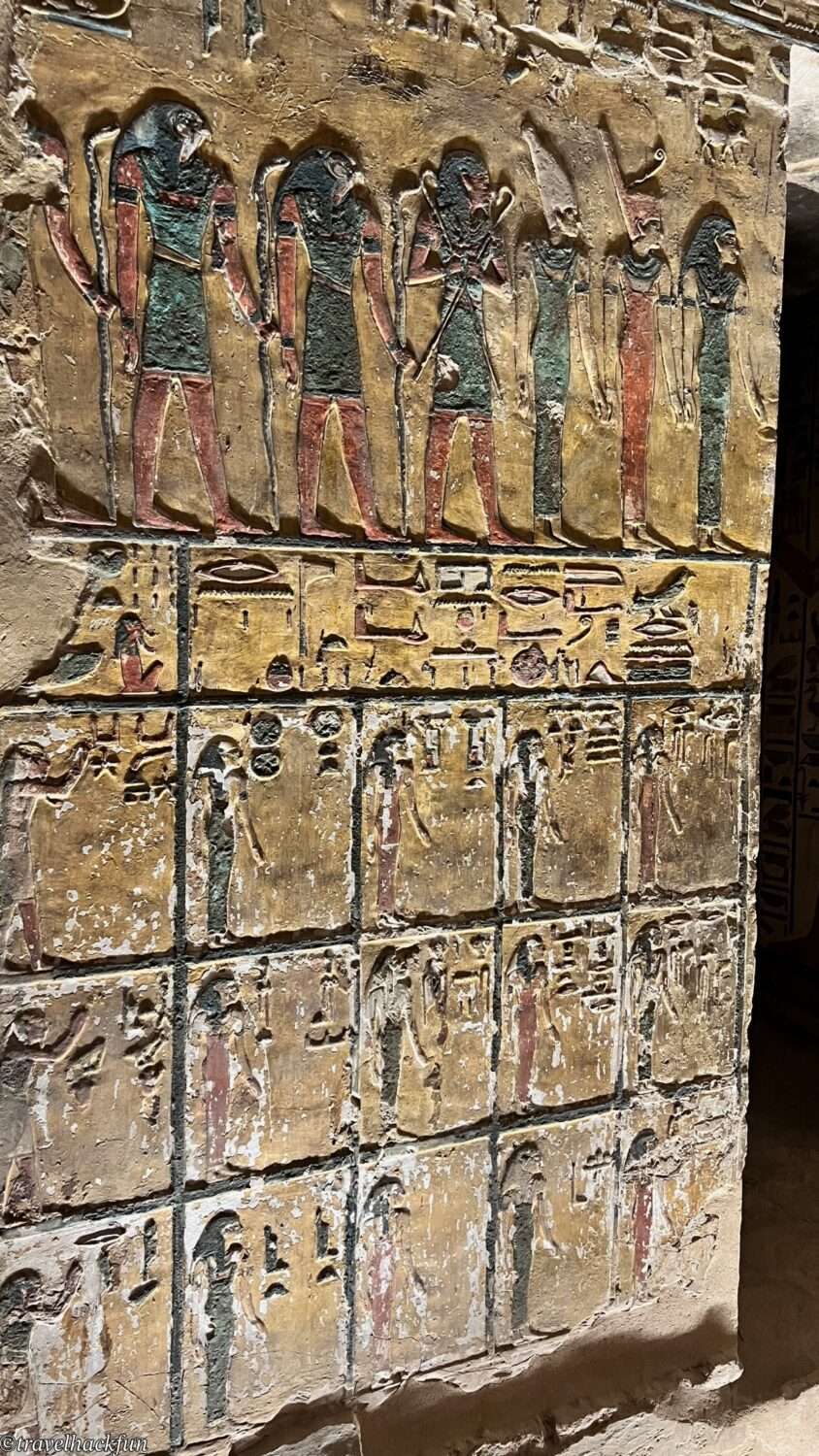
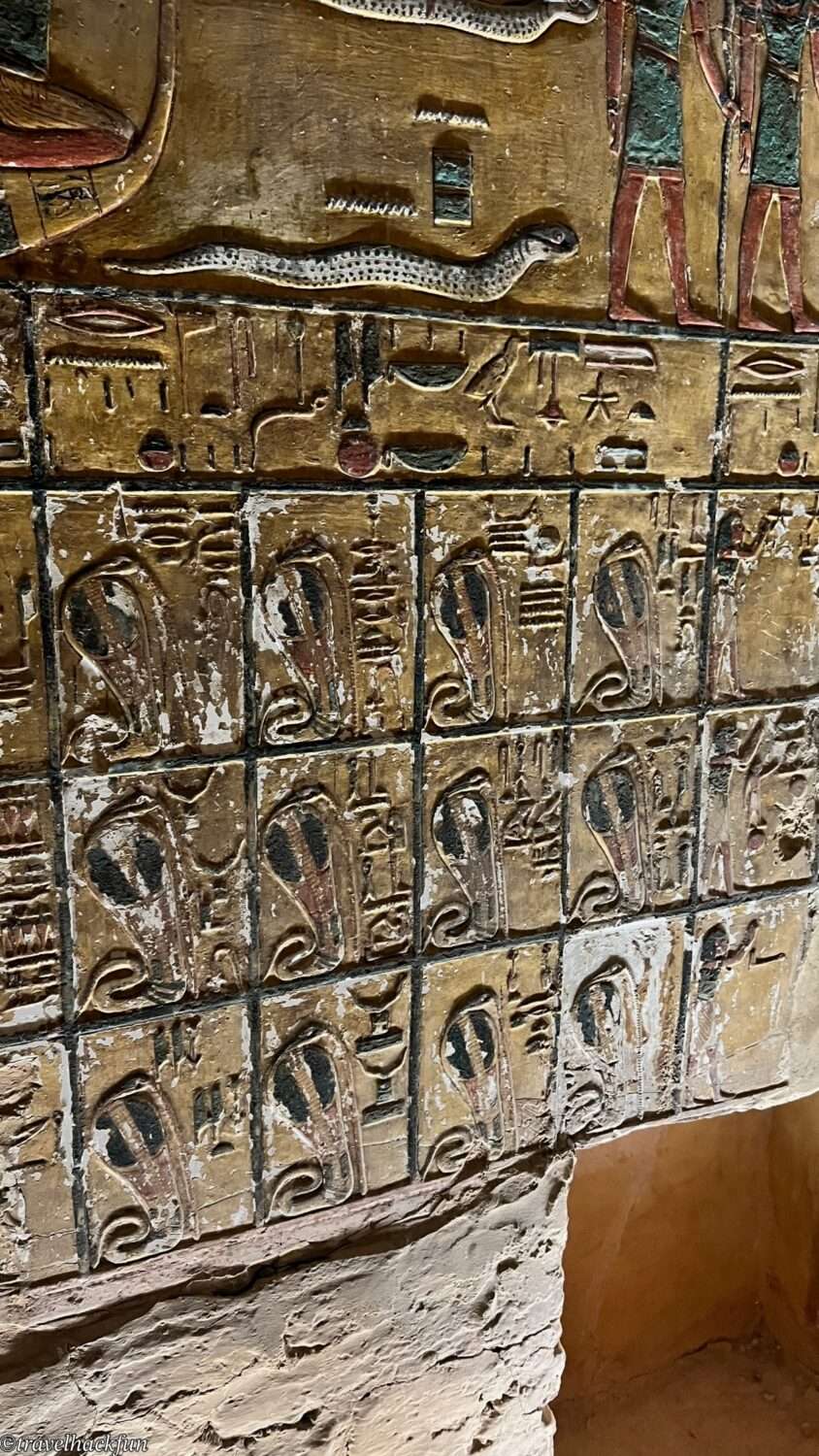

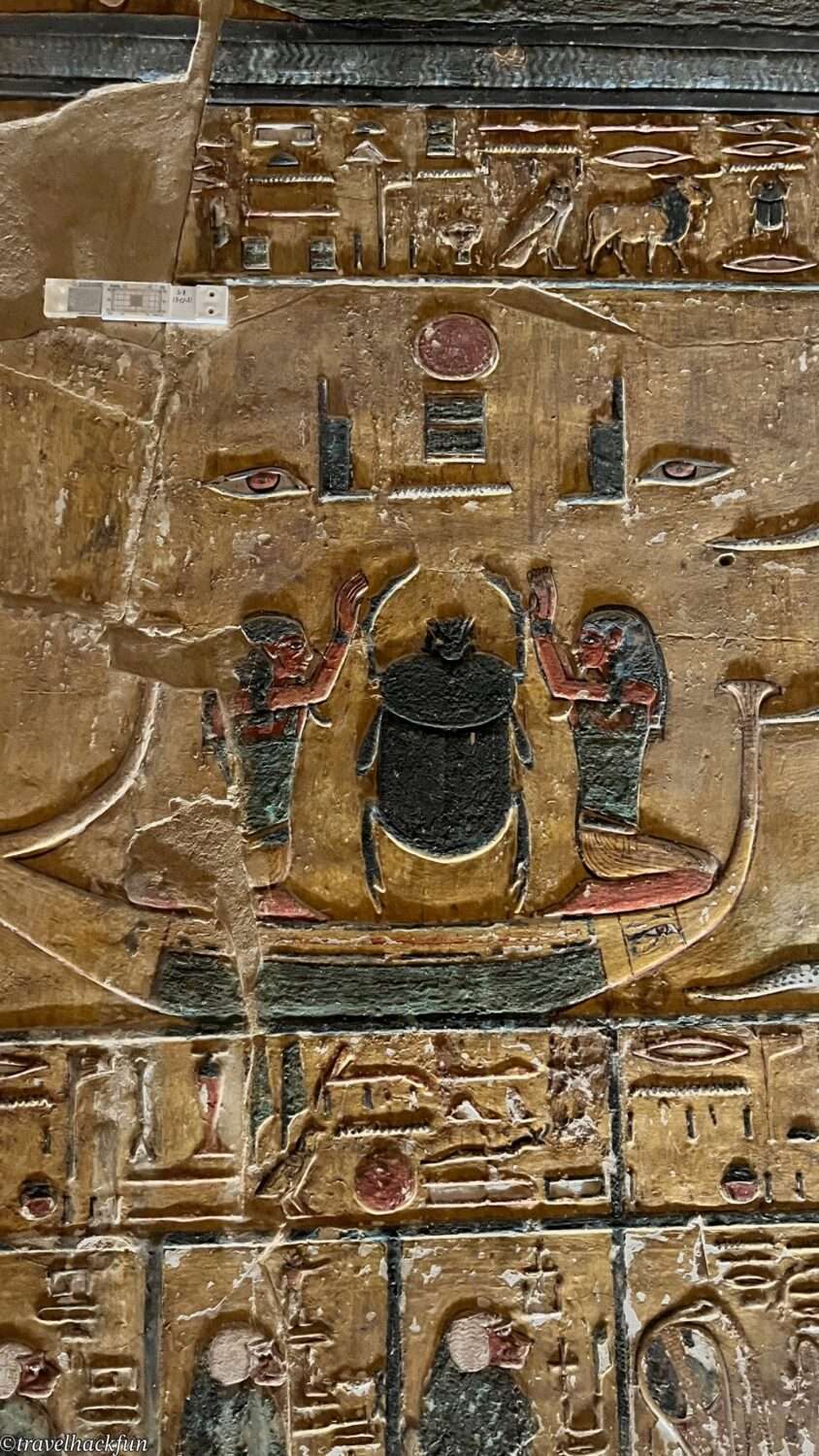
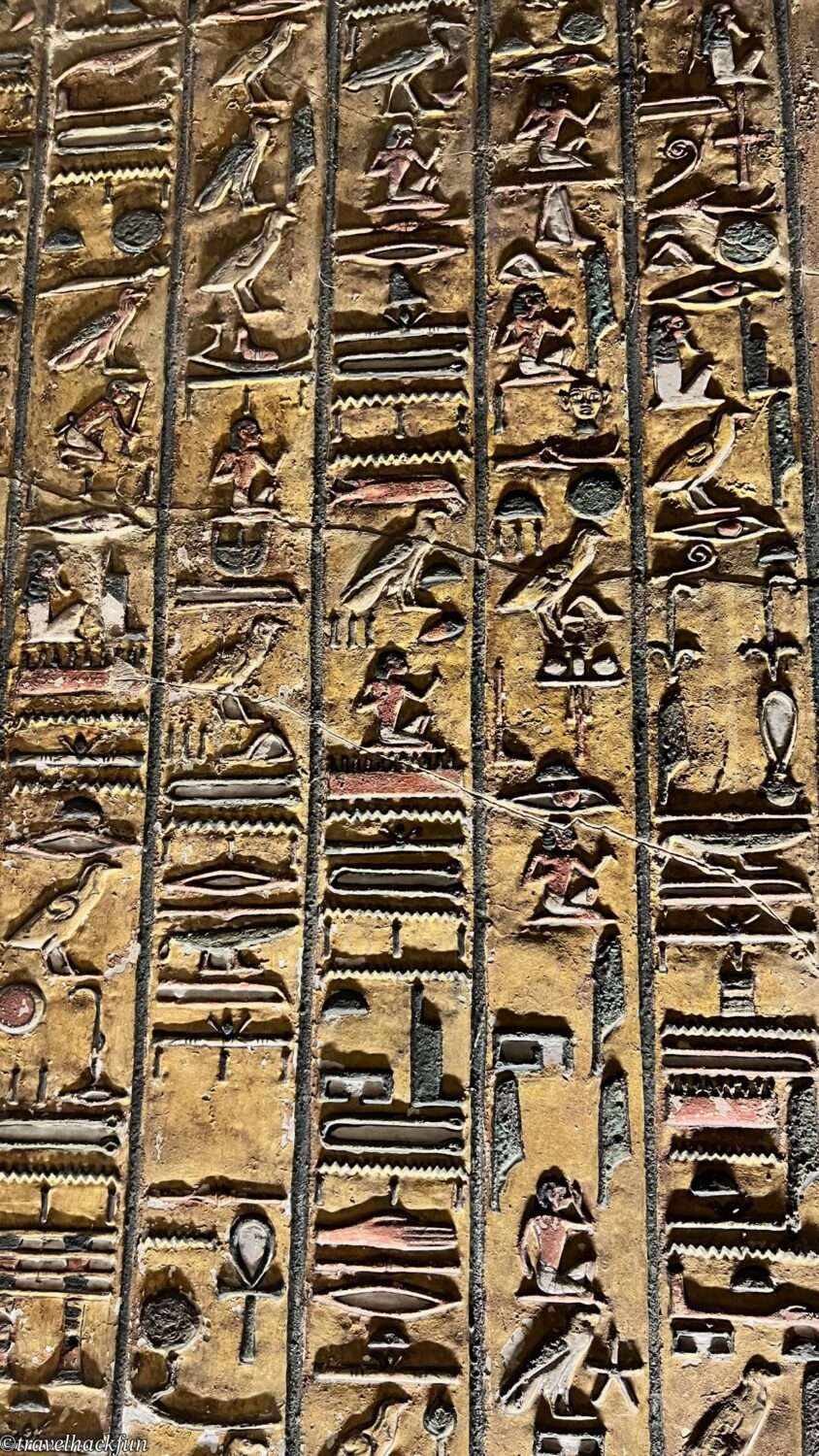
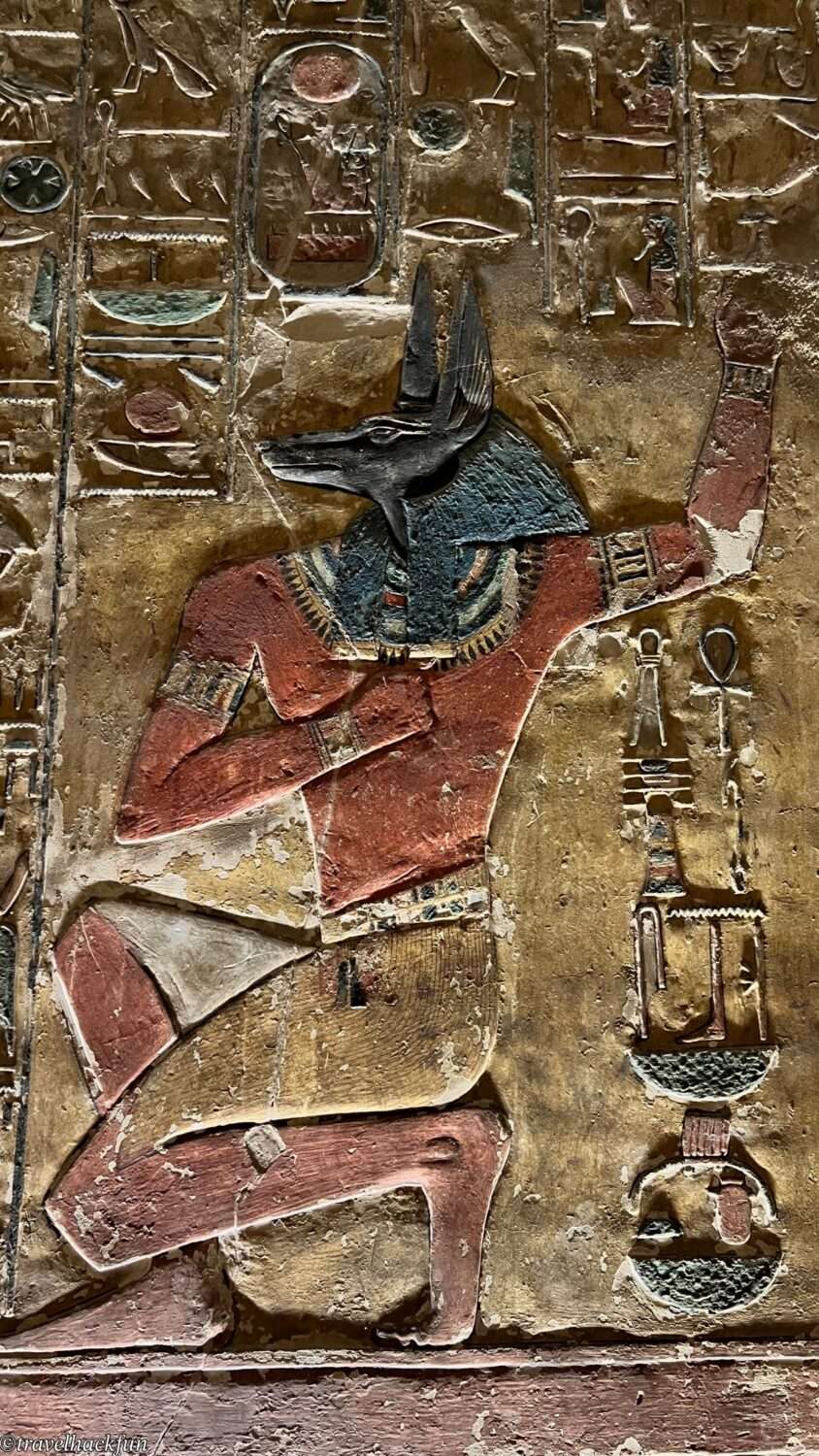

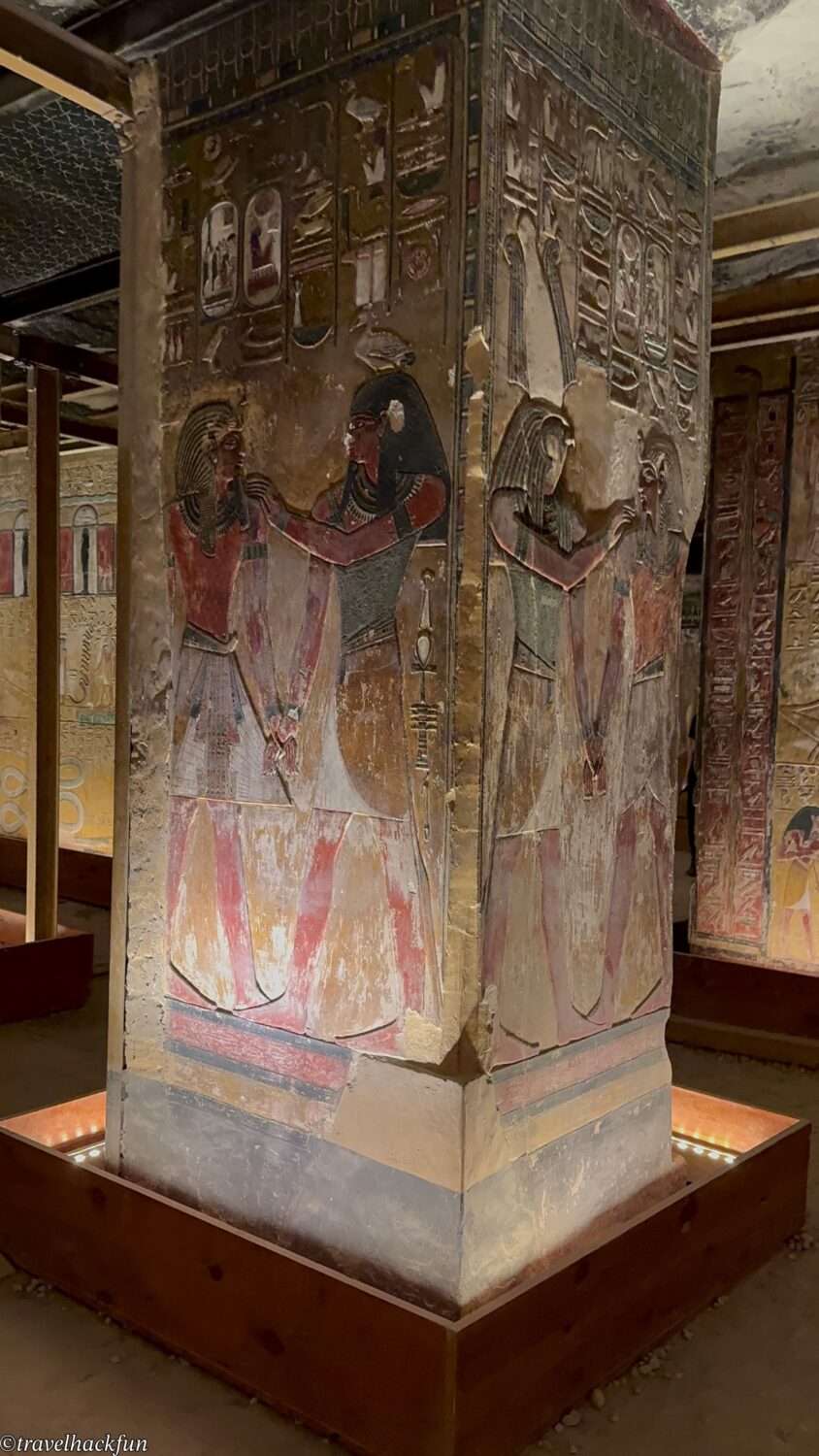
The "Burial Chamber," located in the deepest part of the tomb, serves as its central focus. The right half of the semi-circular burial chamber is exceptionally well-preserved. This was once the resting place of Seti I’s sarcophagus, and the surrounding walls are covered with scenes related to rebirth and resurrection. According to ancient Egyptian beliefs, the pharaoh was not merely a mortal but a divine offspring of the gods, destined to transform and coexist with them after death. The murals in this chamber are particularly vibrant and stand out as one of the best-preserved and most exquisitely crafted examples in the entire Valley of the Kings. Among the depictions are mythological stories such as those from the *Book of the Heavenly Cow*. If you look closely, you’ll notice the extraordinary clarity and elegance of the fine lines, with color combinations reflecting the highest standards of royal craftsmanship at the time.
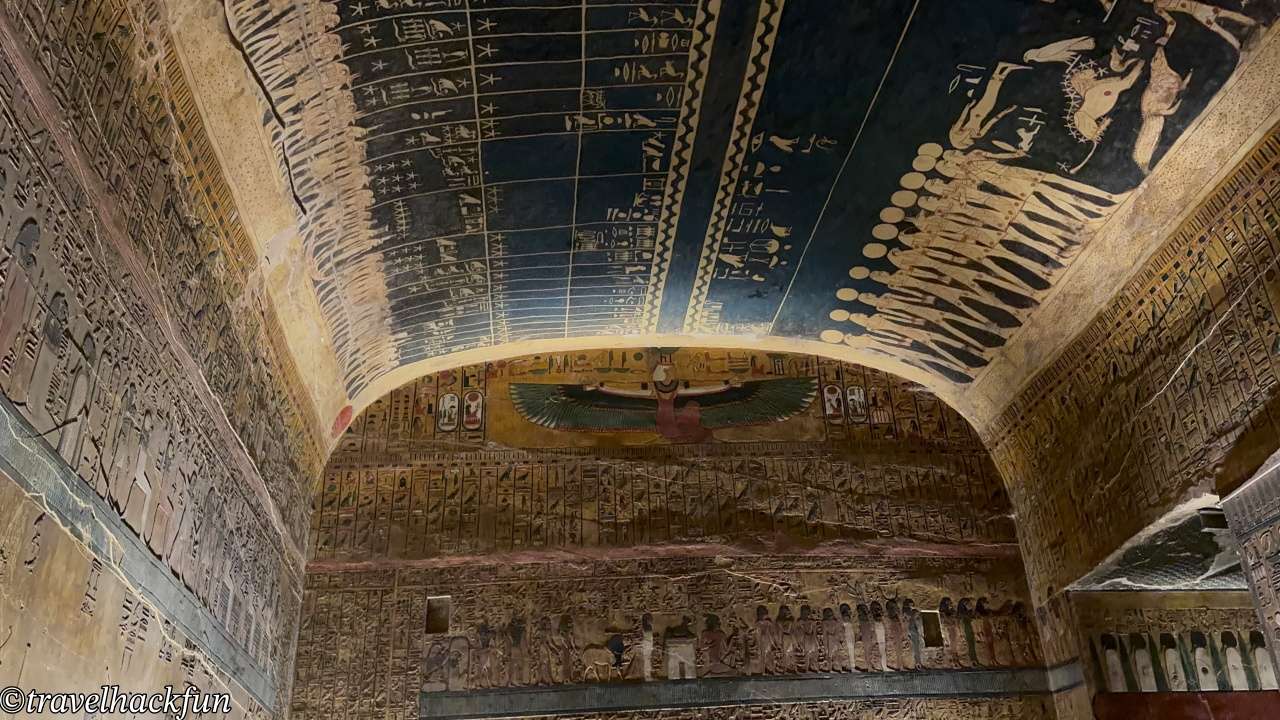
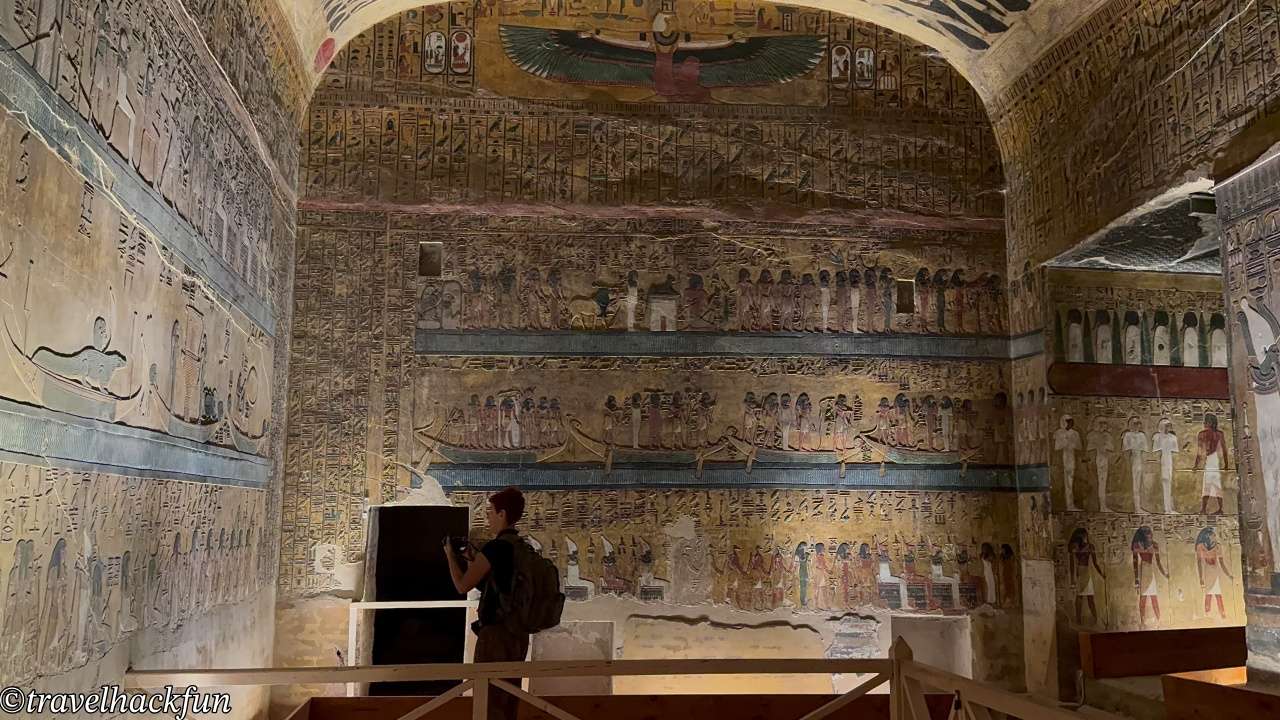
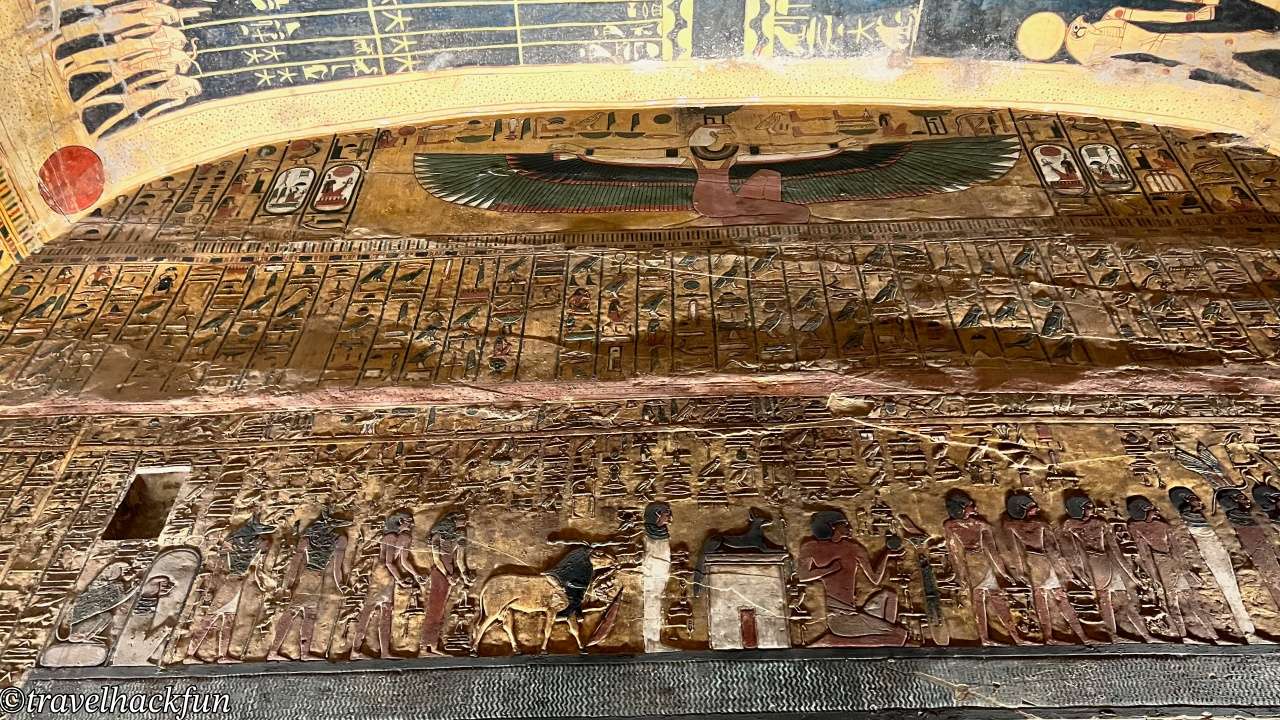

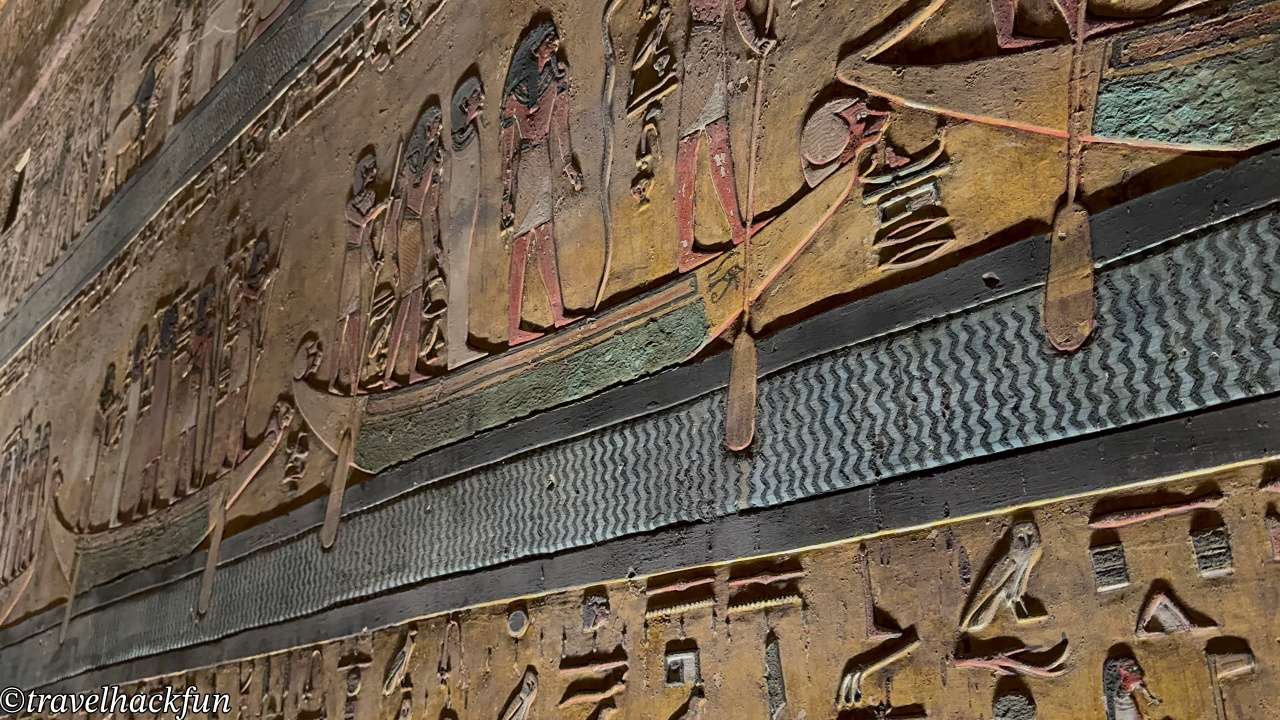
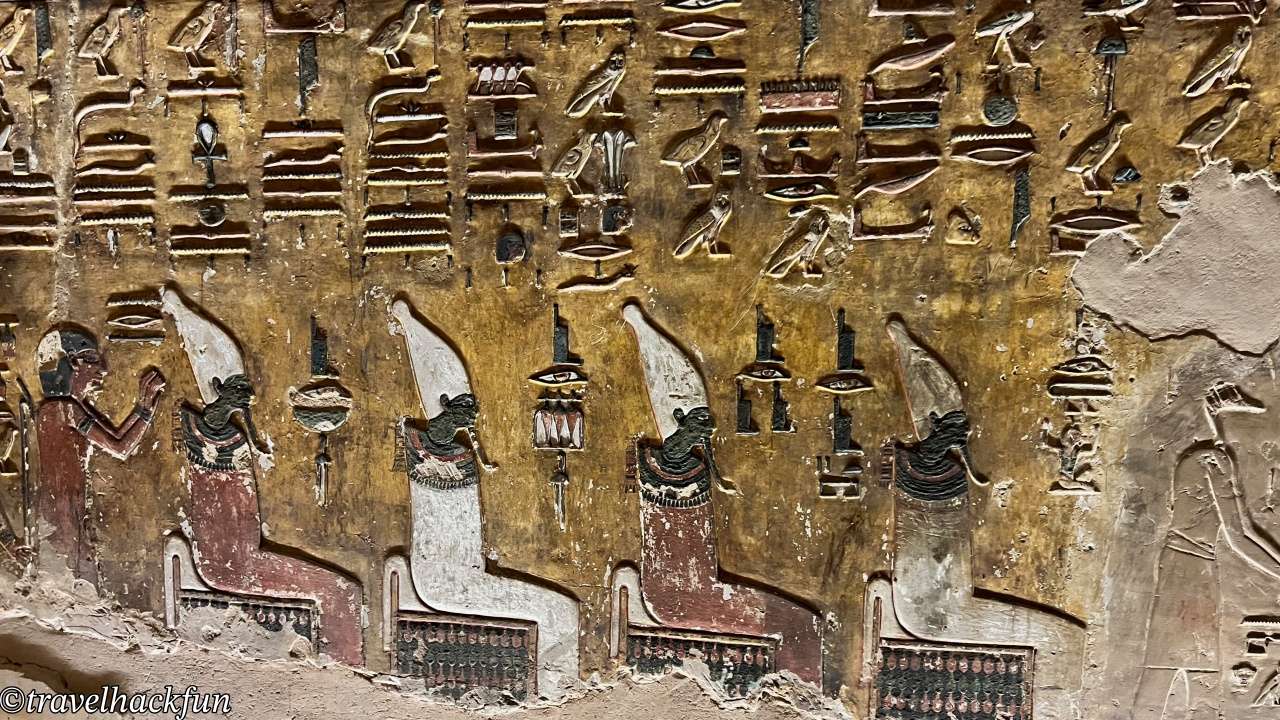
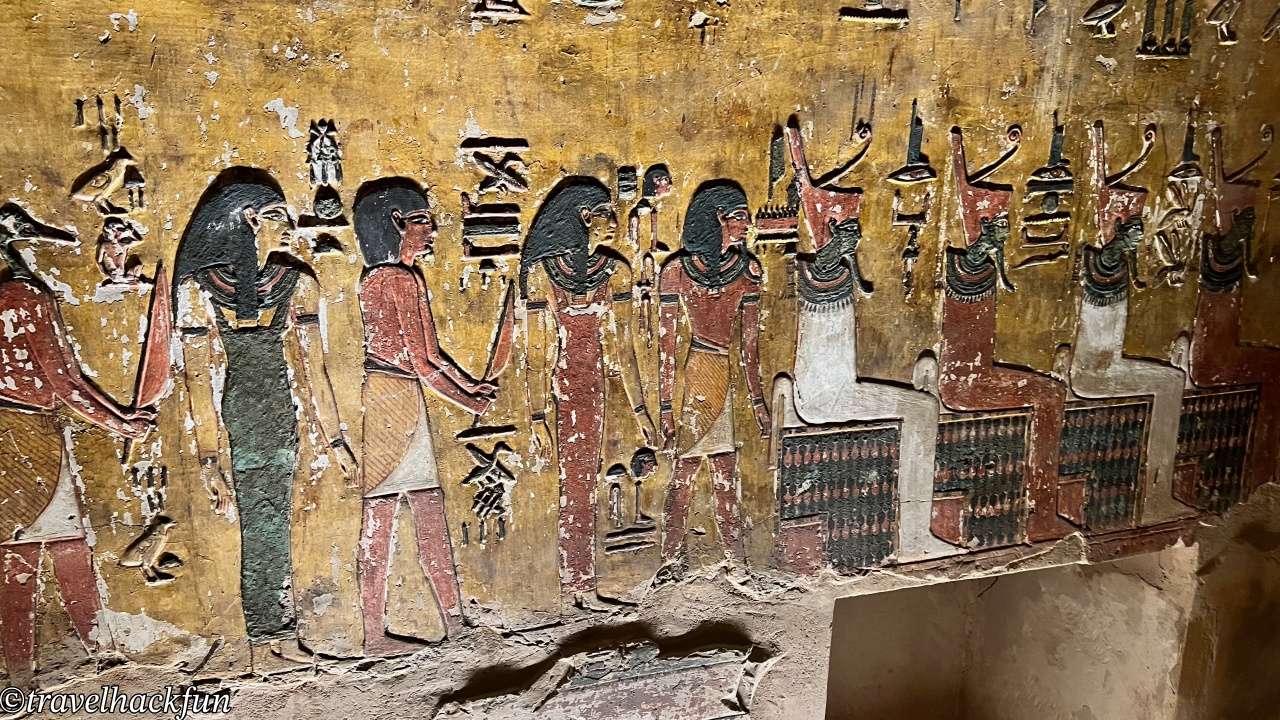
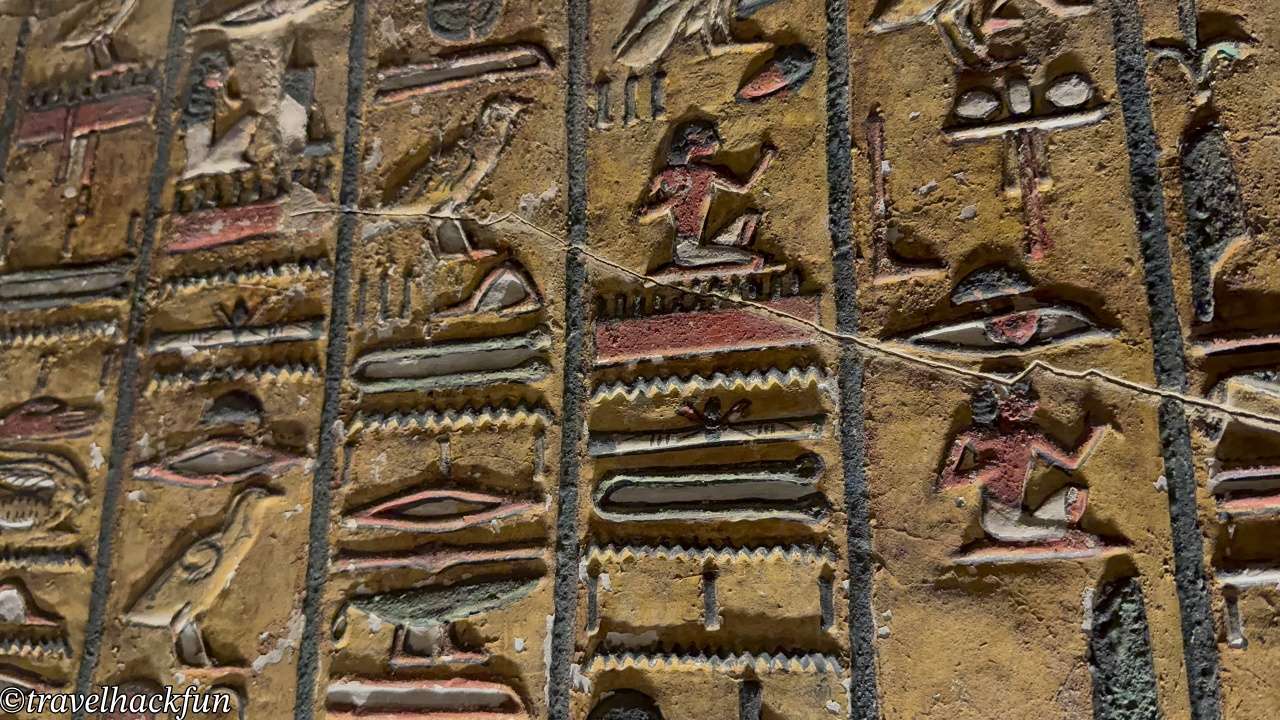
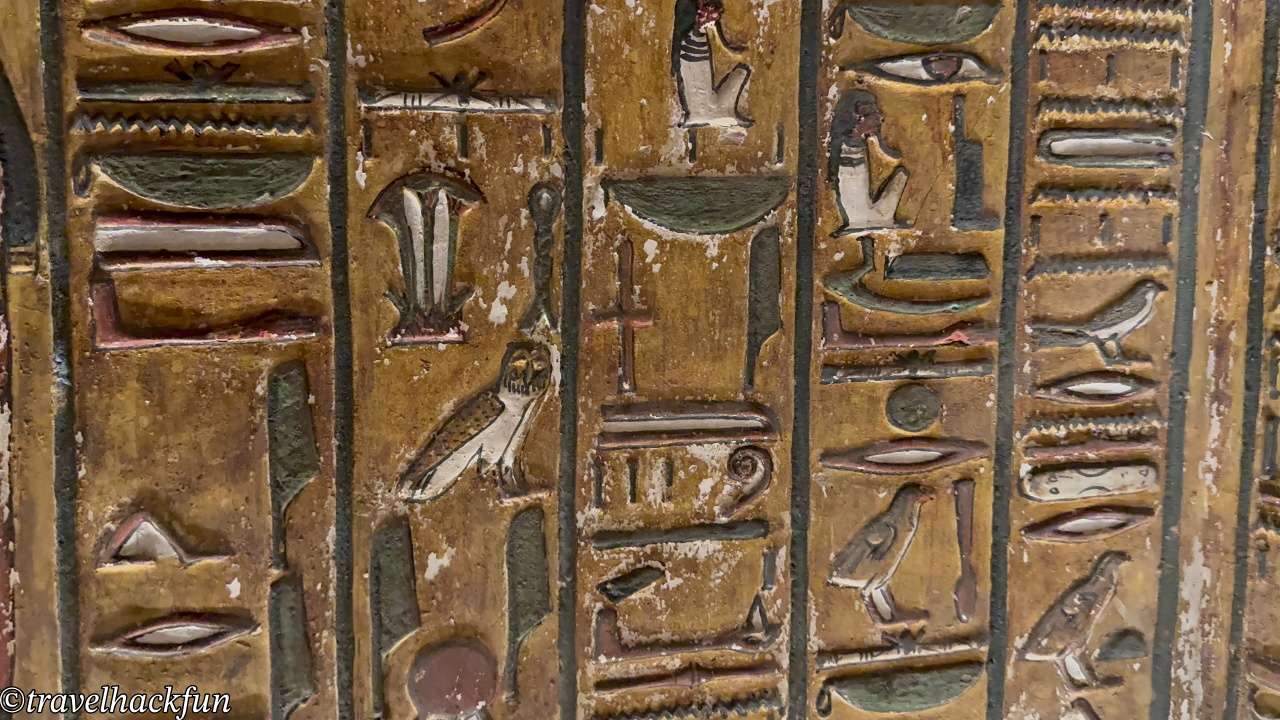
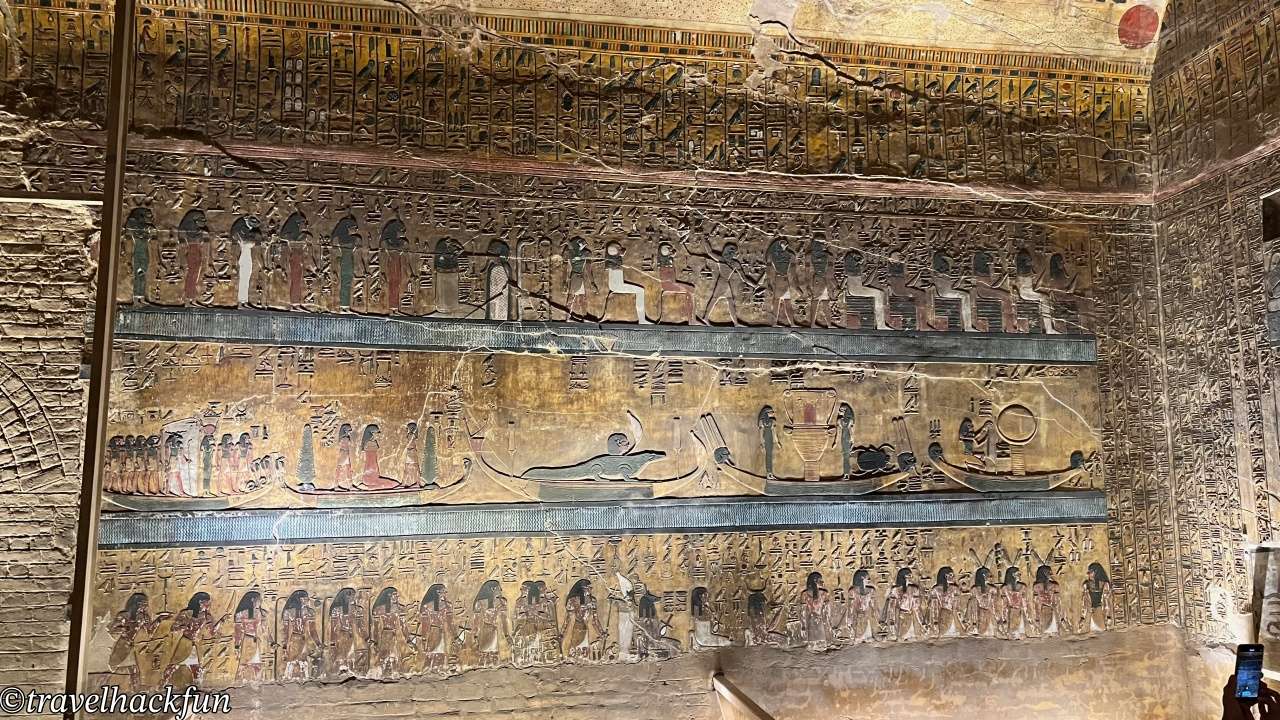
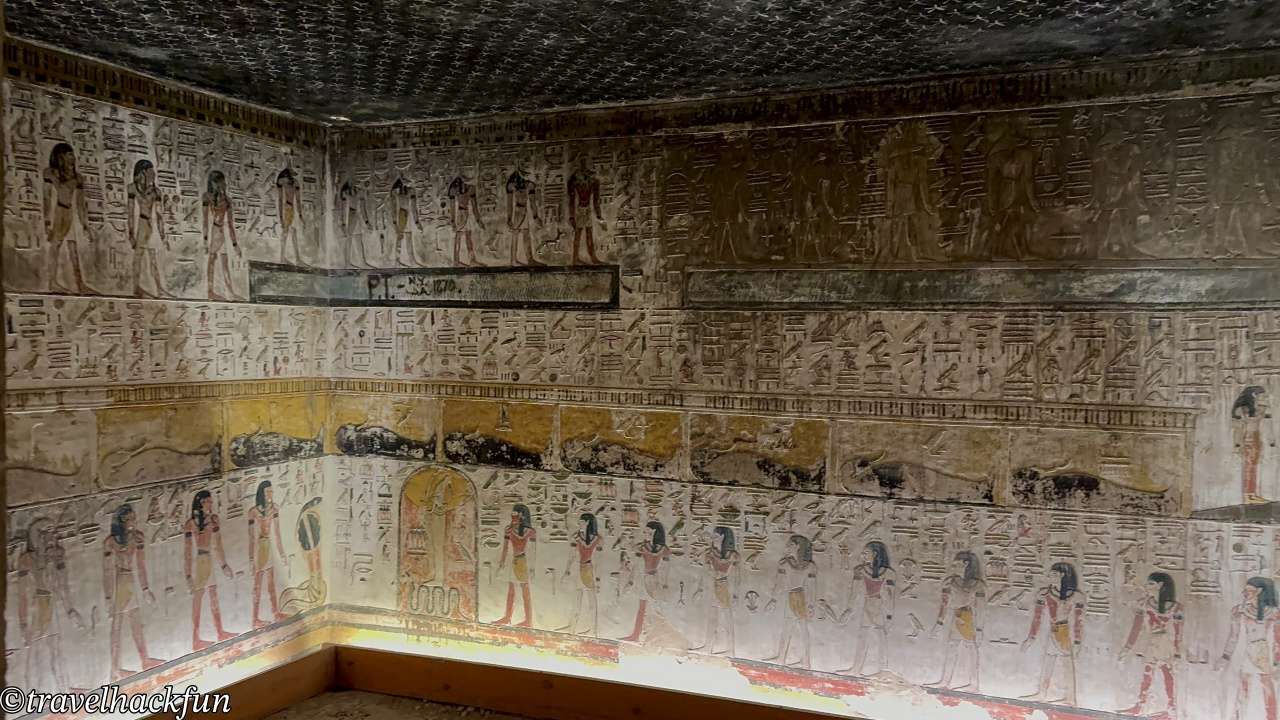
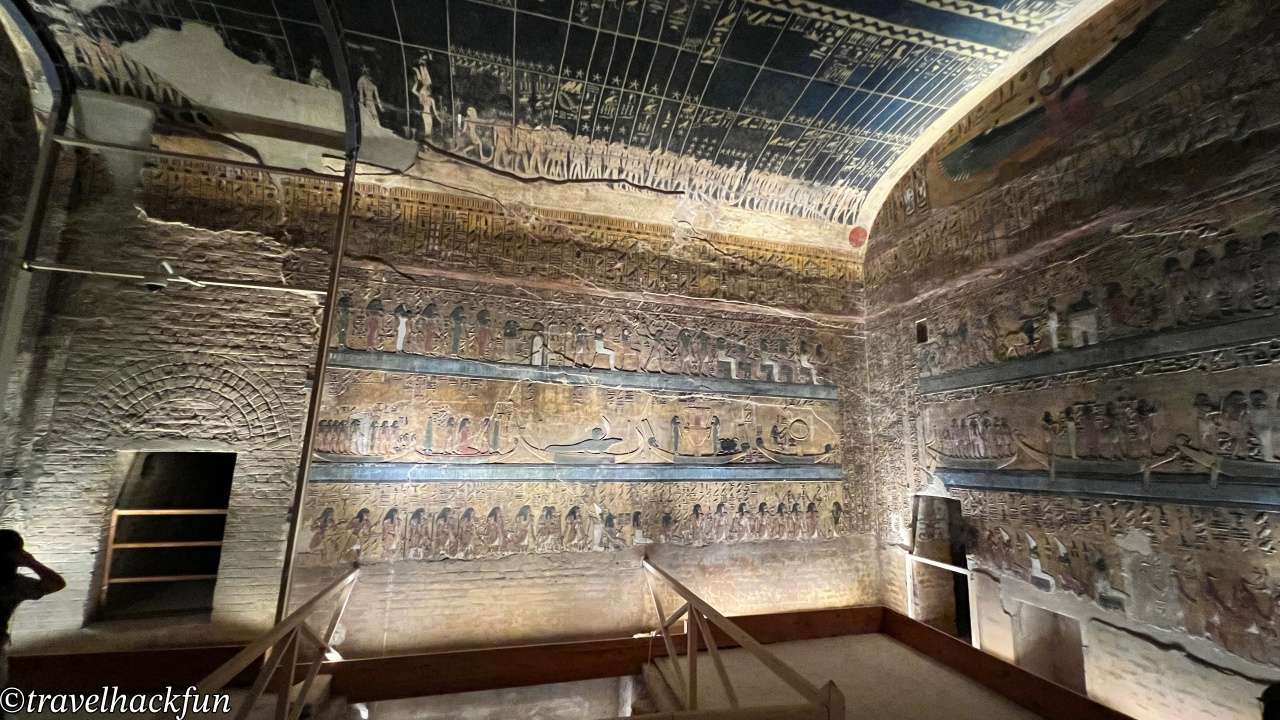
KV9 | Tomb of Ramses V & VI
KV9 is actually a tomb "shared" by Ramesses V and Ramesses VI. It is not included in the basic ticket and requires an additional ticket purchase, but it is often rated as one of the "most worth paying for" tombs to visit. After visiting several pharaoh tombs myself, I found this one to be my personal favorite.
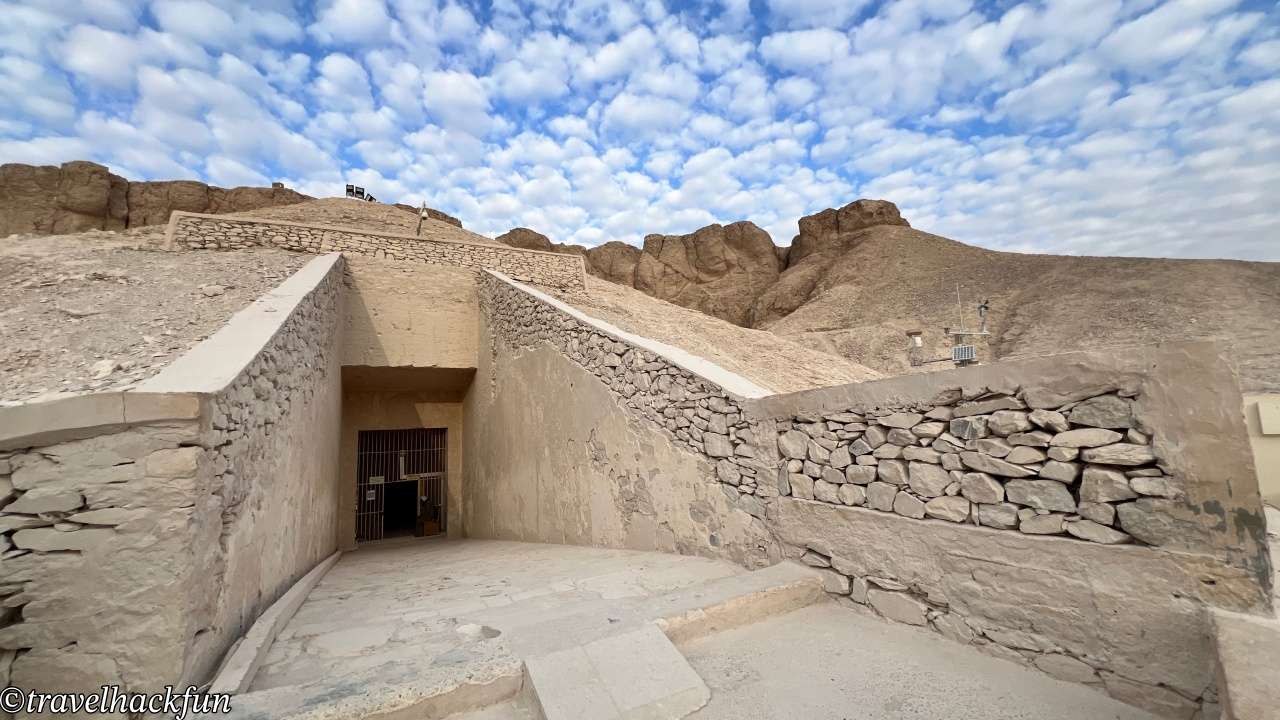
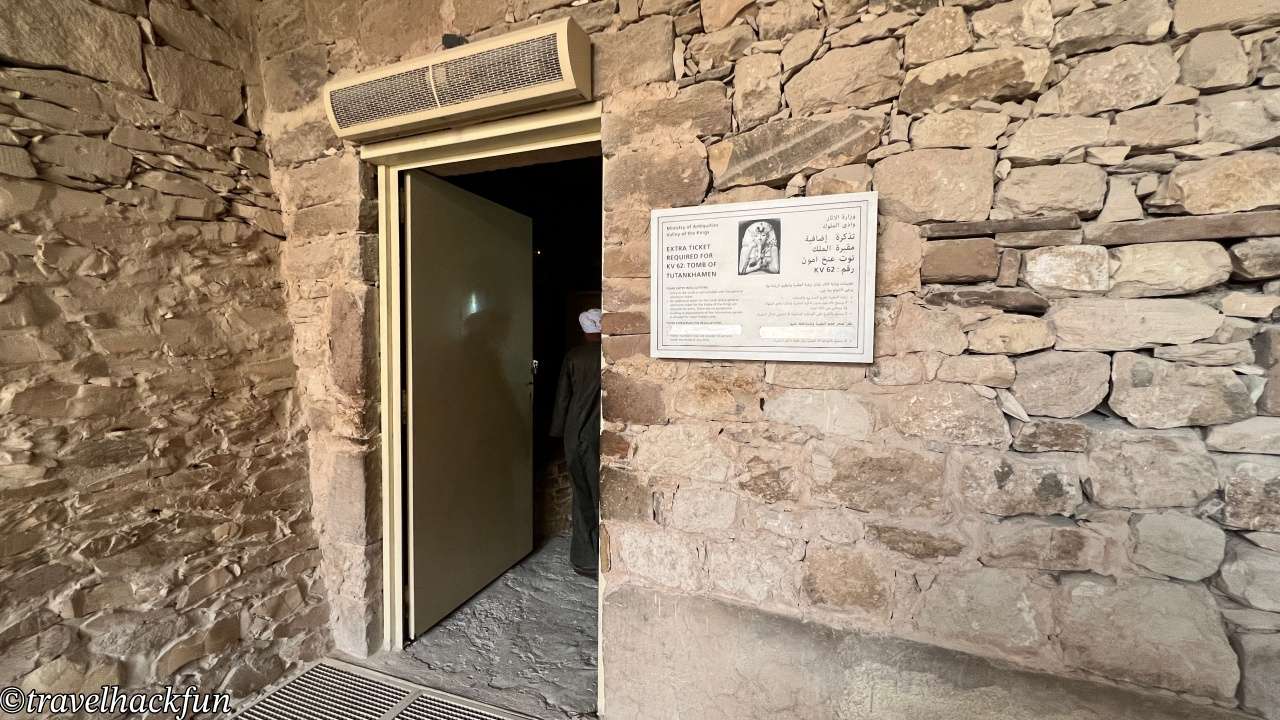
This tomb was originally built for Ramesses V but was later expanded and reused by Ramesses VI, which is why traces of both pharaohs can be seen within the same tomb. The carvings in the first section of the corridor were initially created for Ramesses V, but they were later re-carved by Ramesses VI. The entire tomb features stunning murals and carvings, especially the depictions on the ceiling that illustrate celestial phenomena and mythological stories. The colors remain vibrant, and the lines are fluid, making it feel as though you are walking through the grand and immersive world of ancient Egyptian beliefs.
The corridor of this tomb is quite long and spacious. Upon entering, you’ll see that the walls on both sides are adorned with vivid illustrations from the *Book of Caverns* and the *Book of the Underworld*, with their colors still astonishingly vibrant. Looking up, you’ll notice cosmic scenes on the ceiling symbolizing the sun and stars. Since two pharaohs were buried here, the overall spatial structure is more complex compared to other royal tombs. You can also observe the blending of styles from the reigns of both pharaohs, creating a fascinating contrast throughout the tomb.

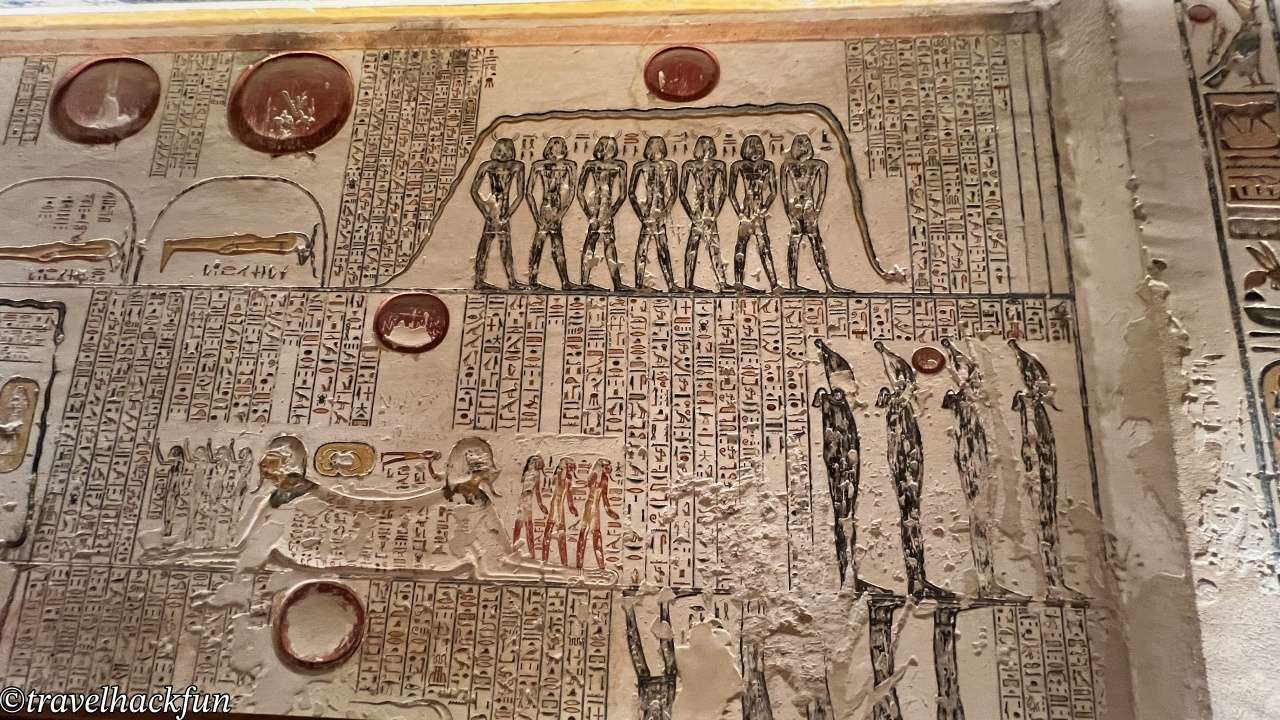
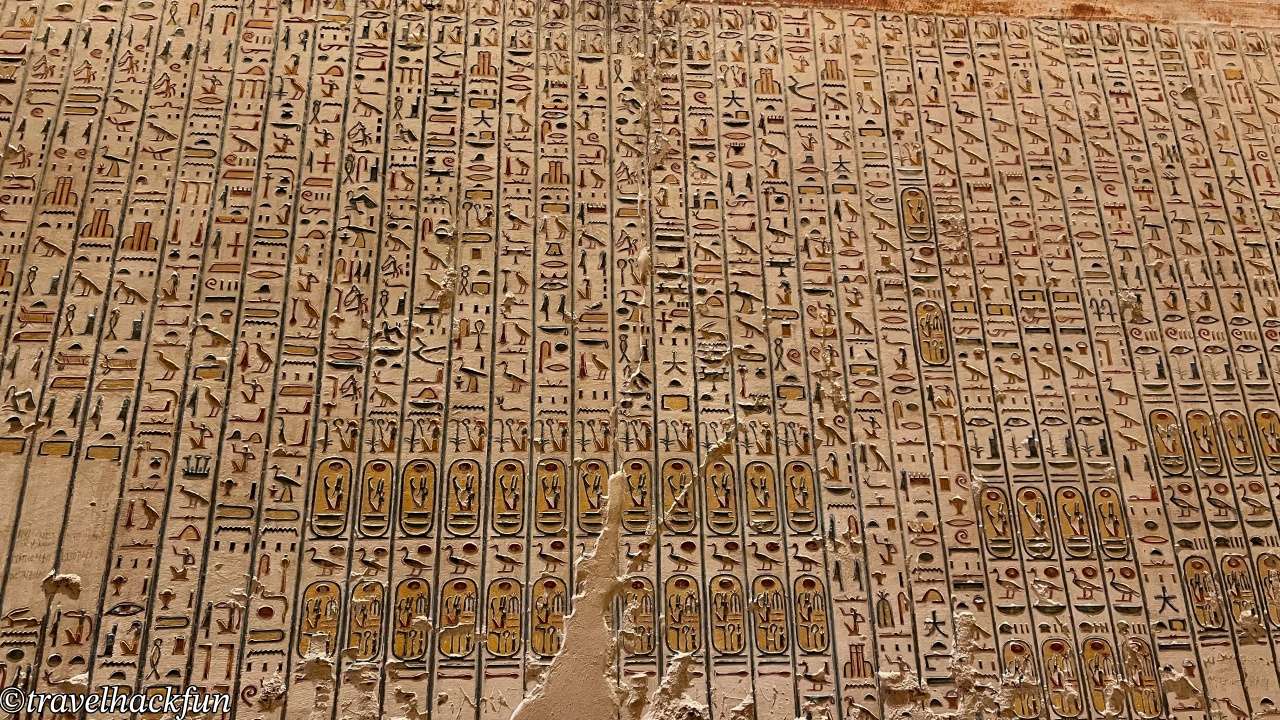
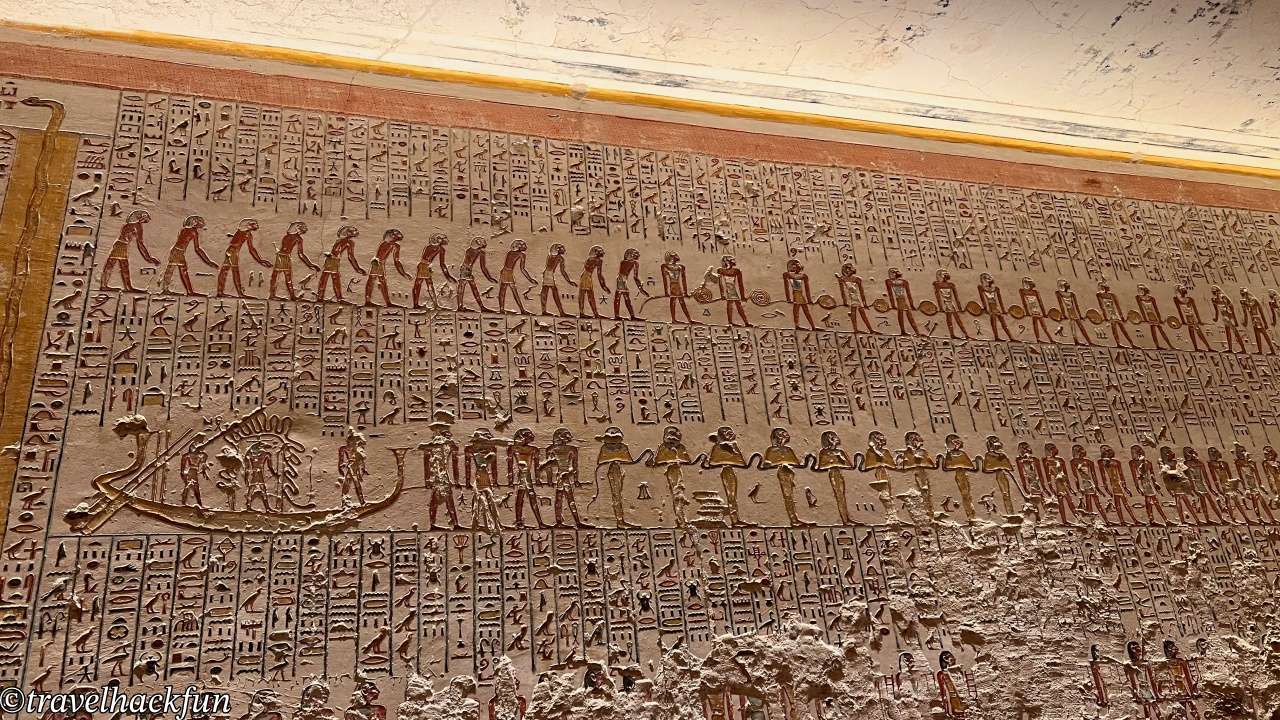

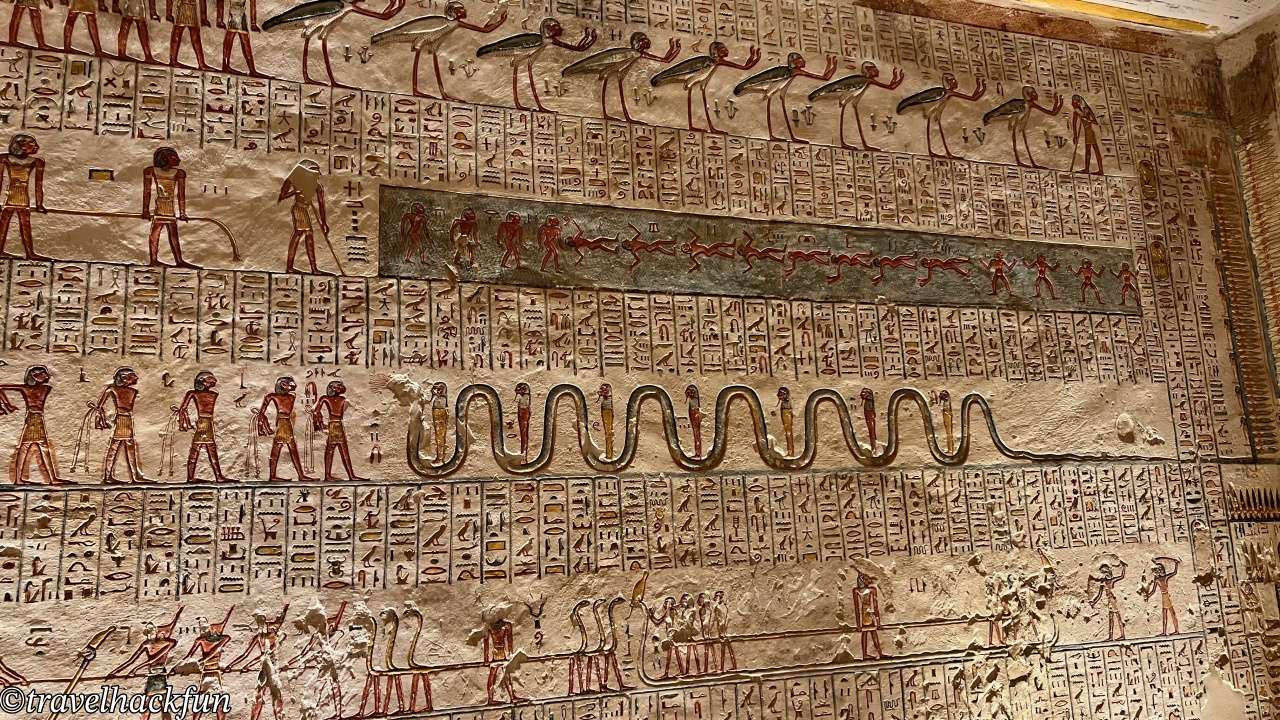
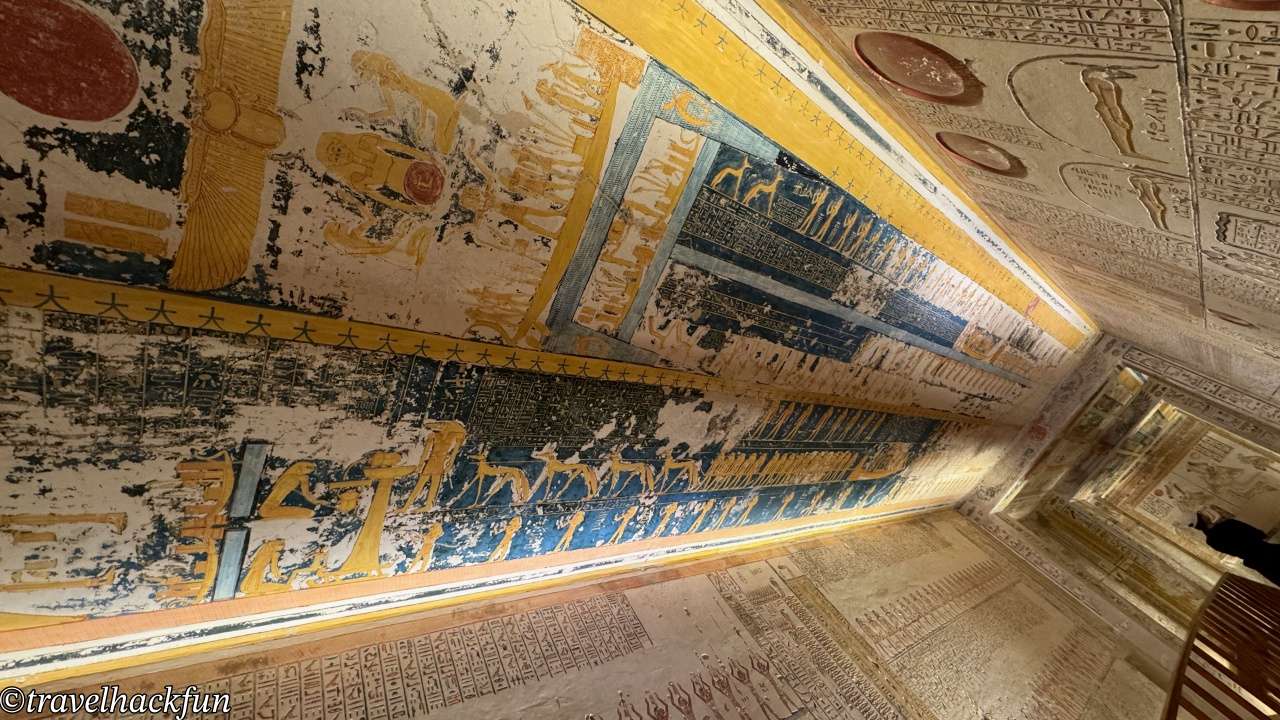
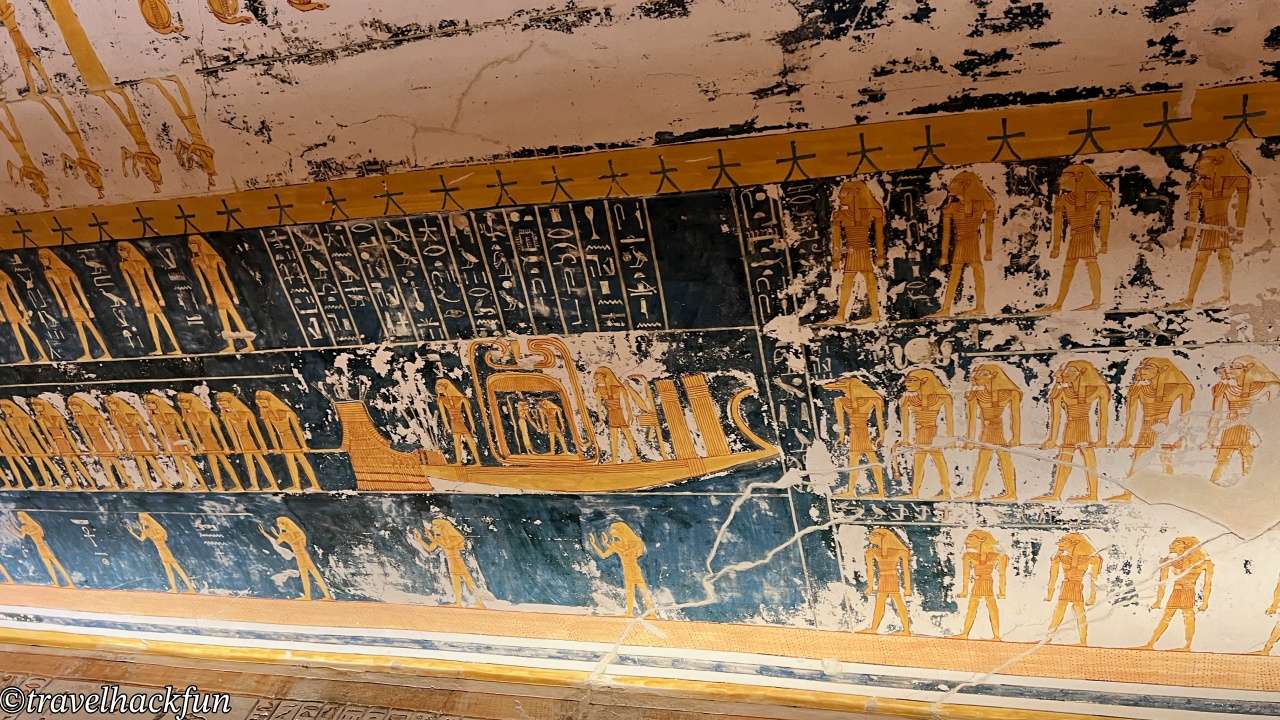

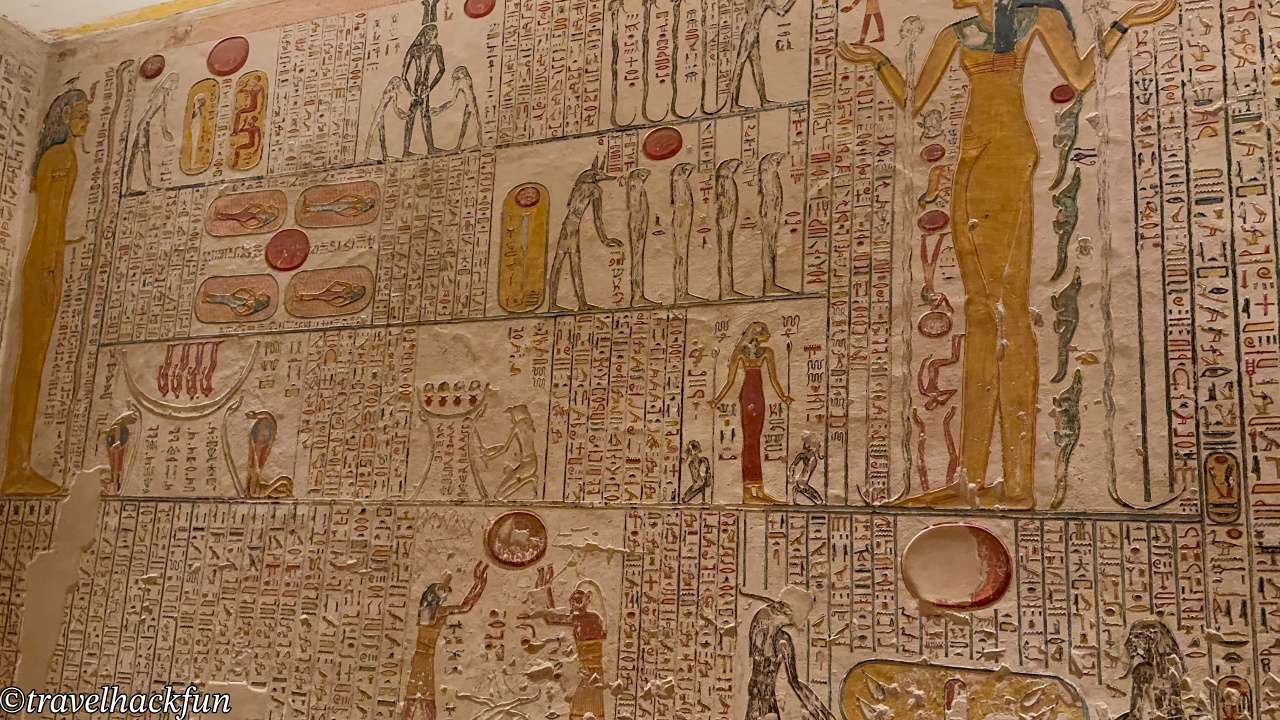
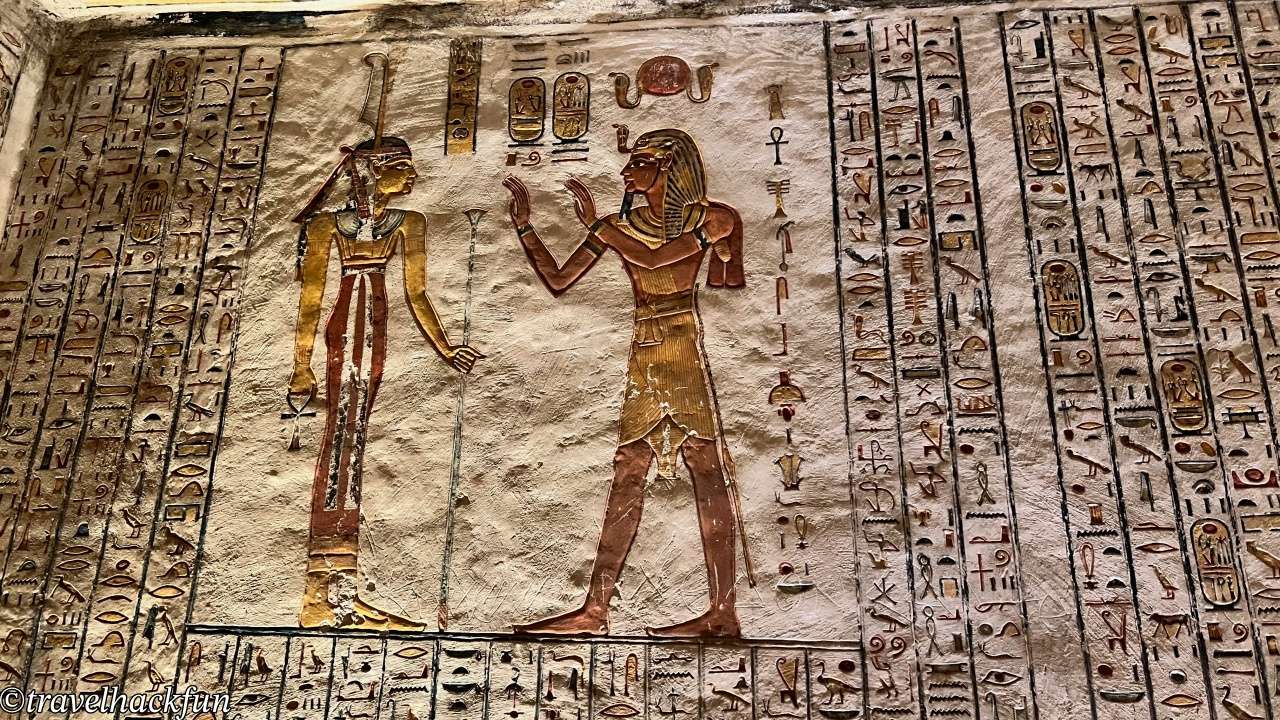
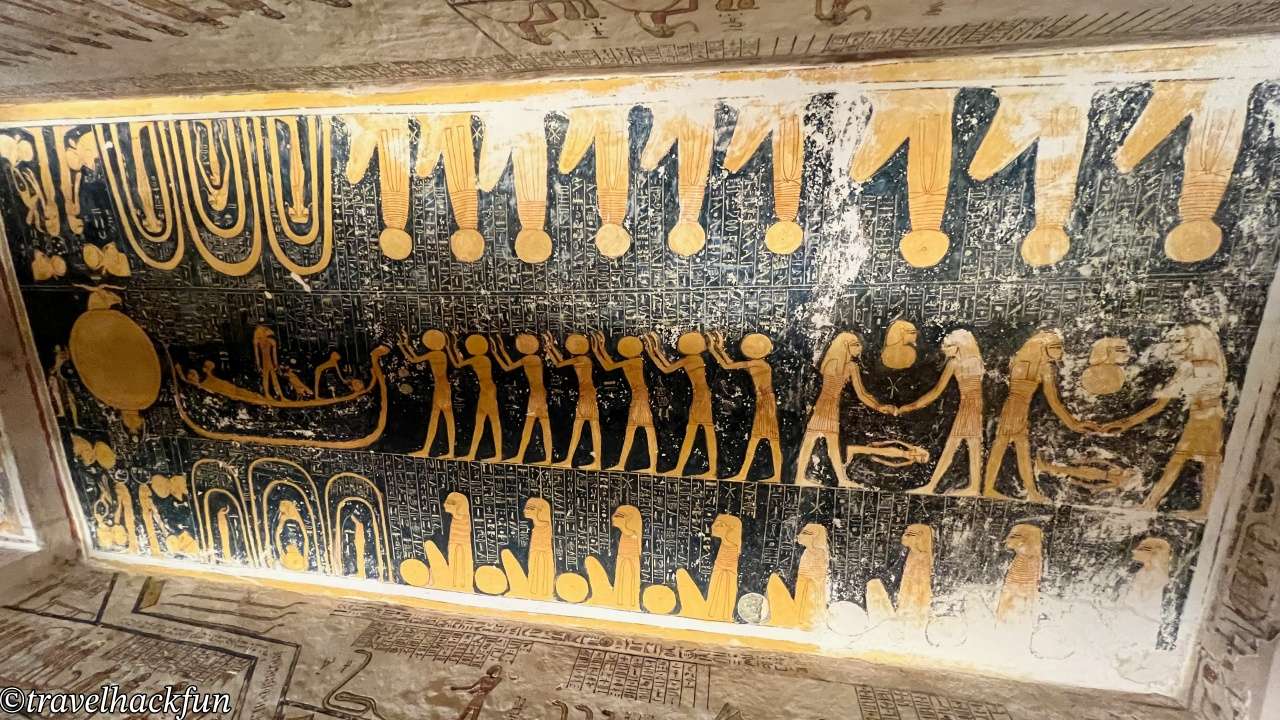

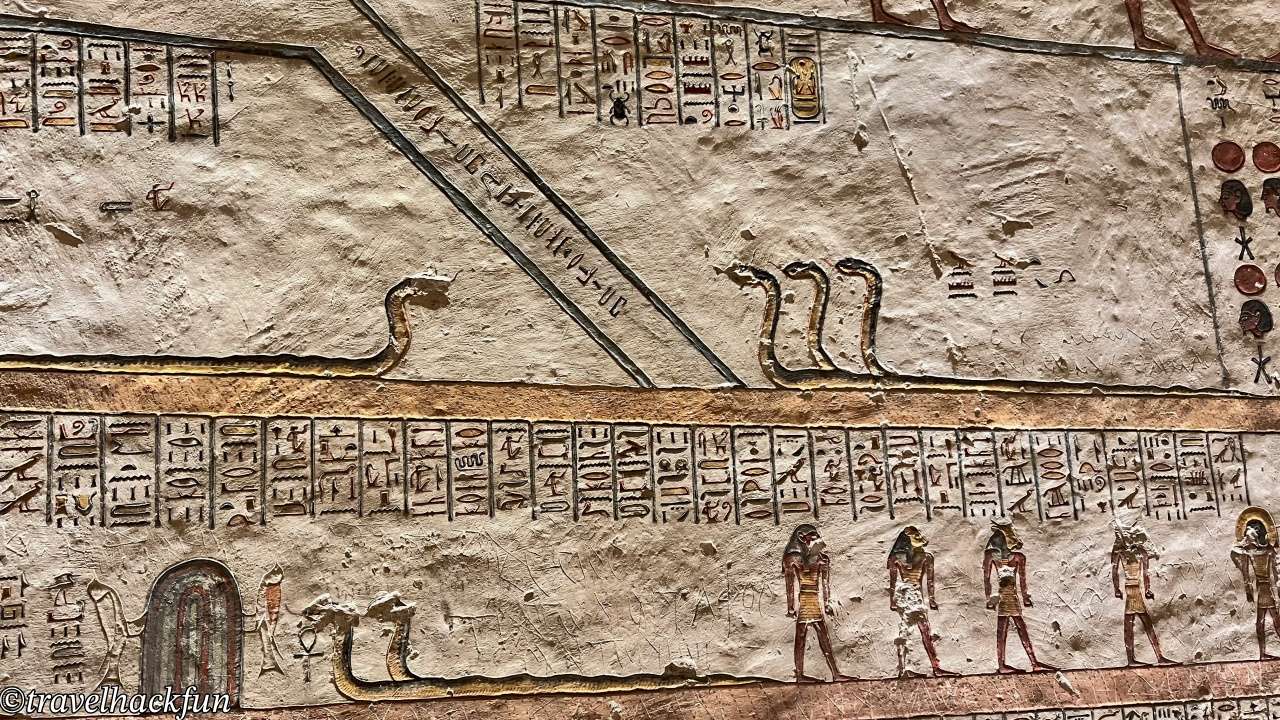
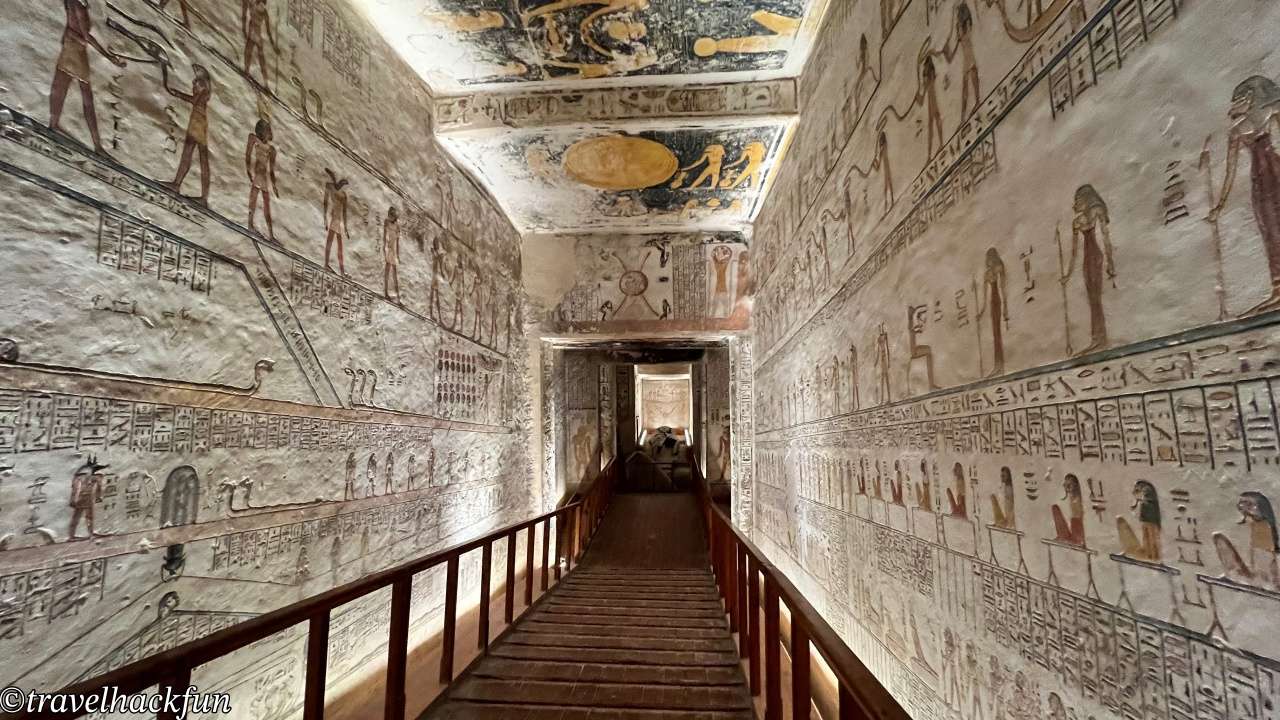
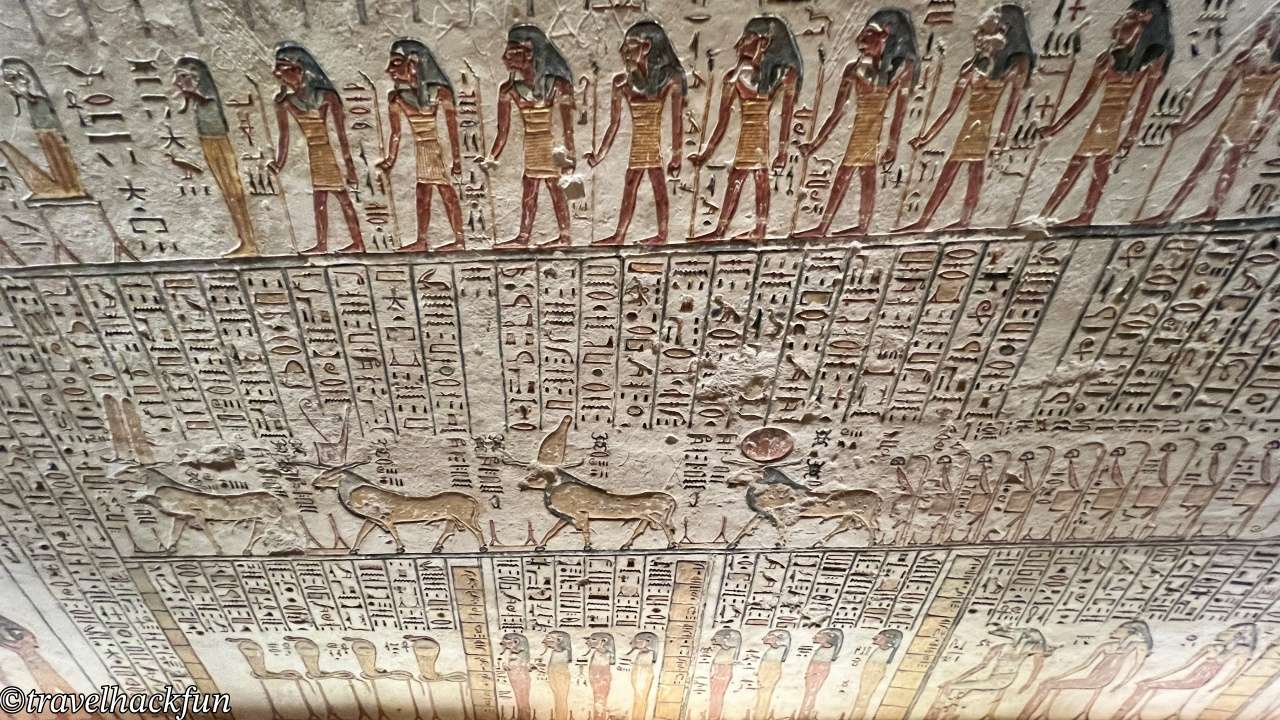

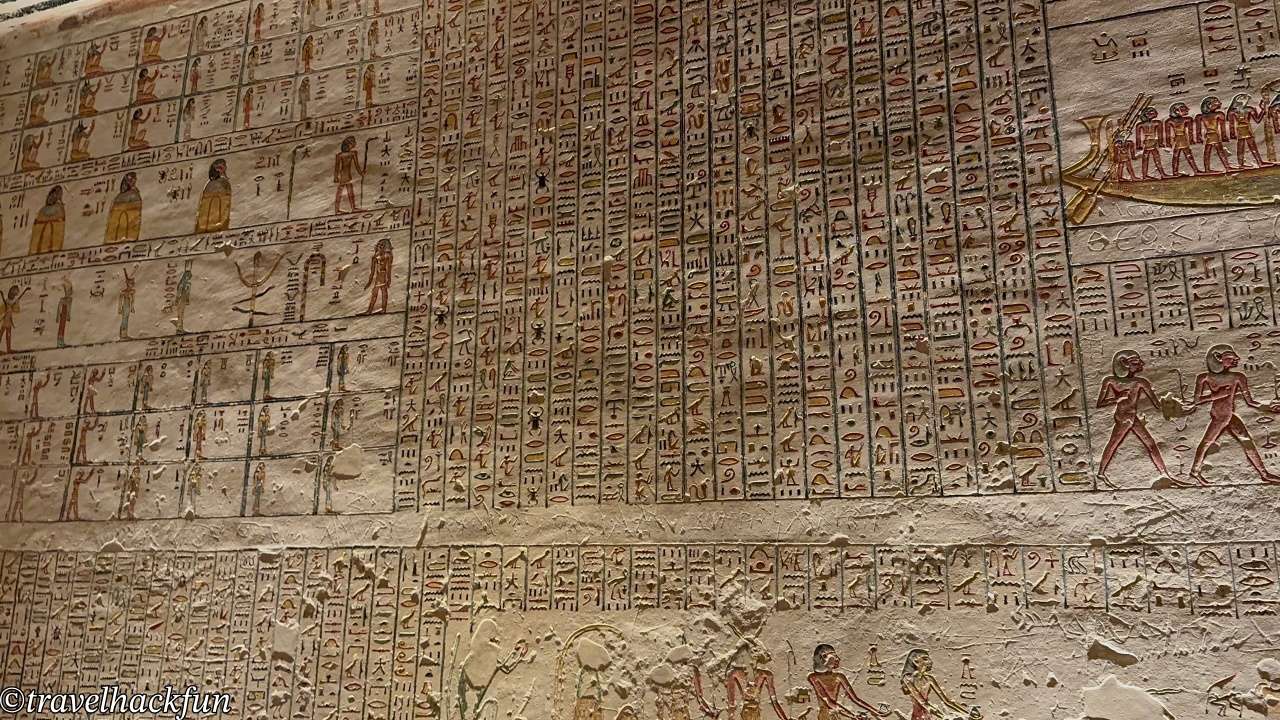
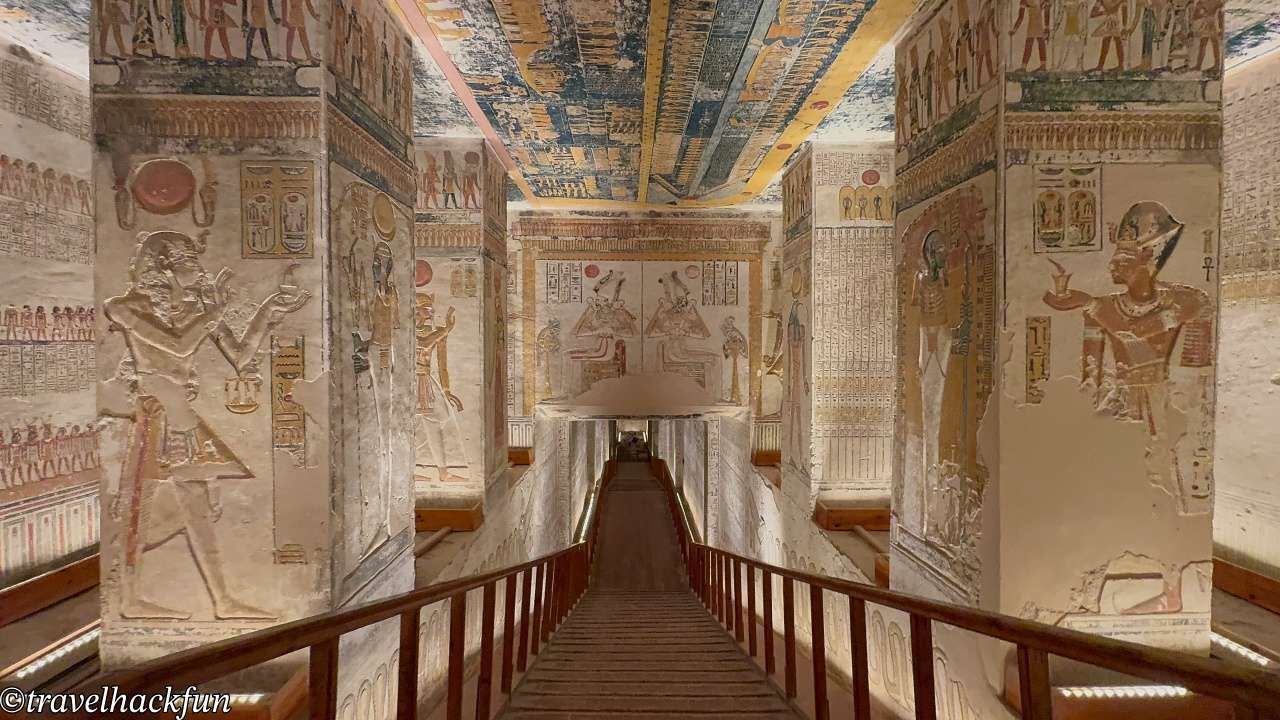
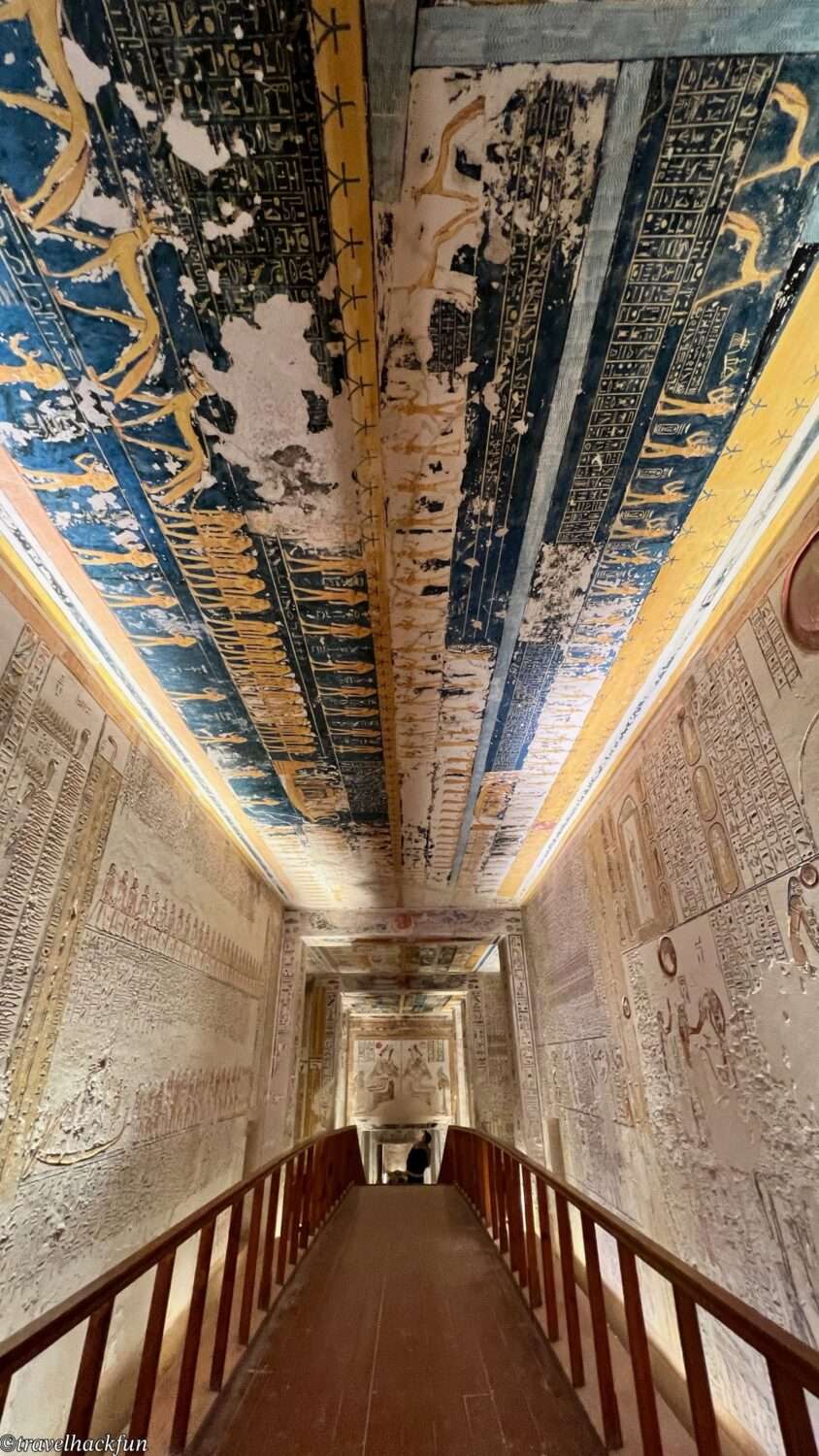
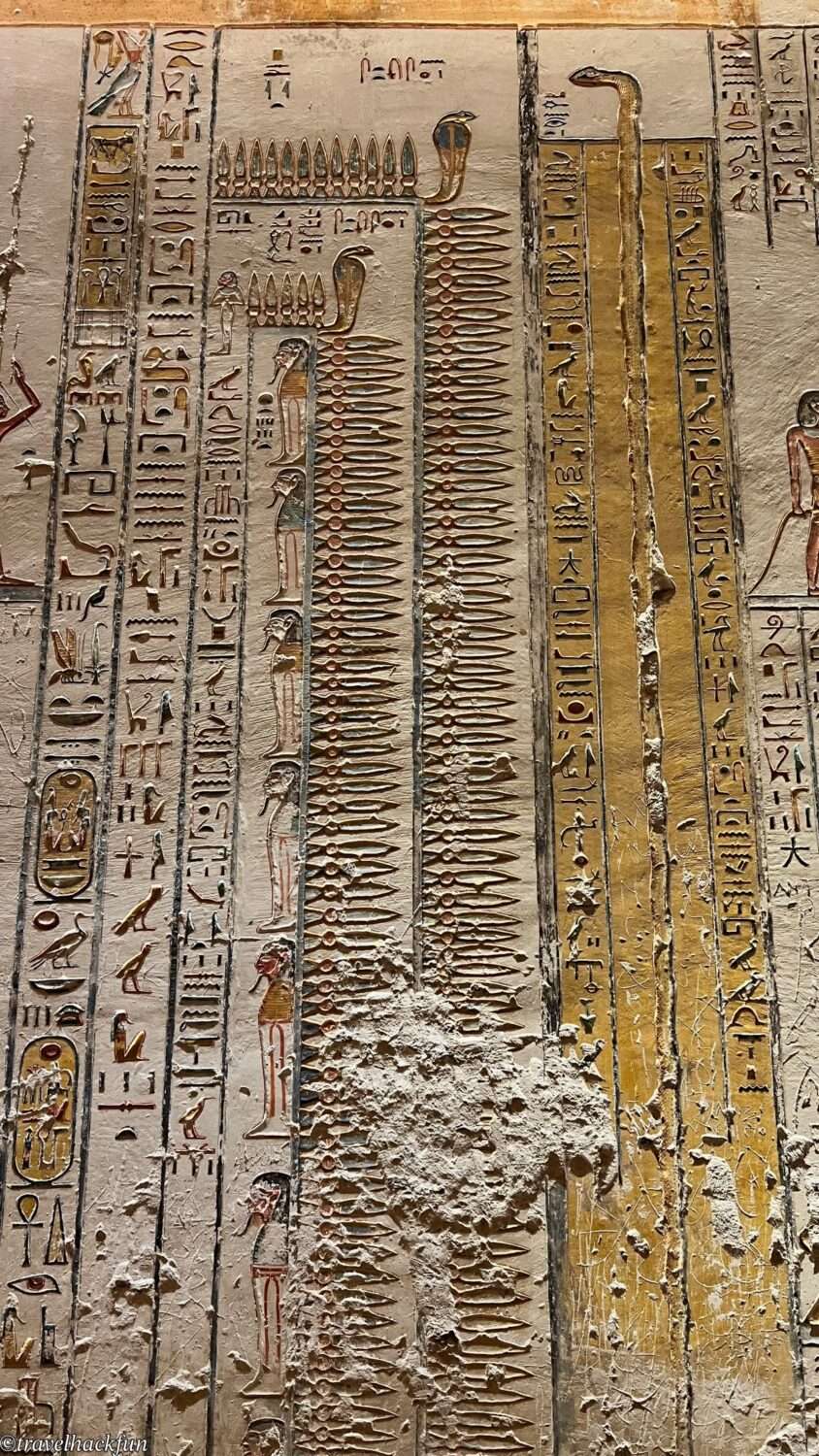

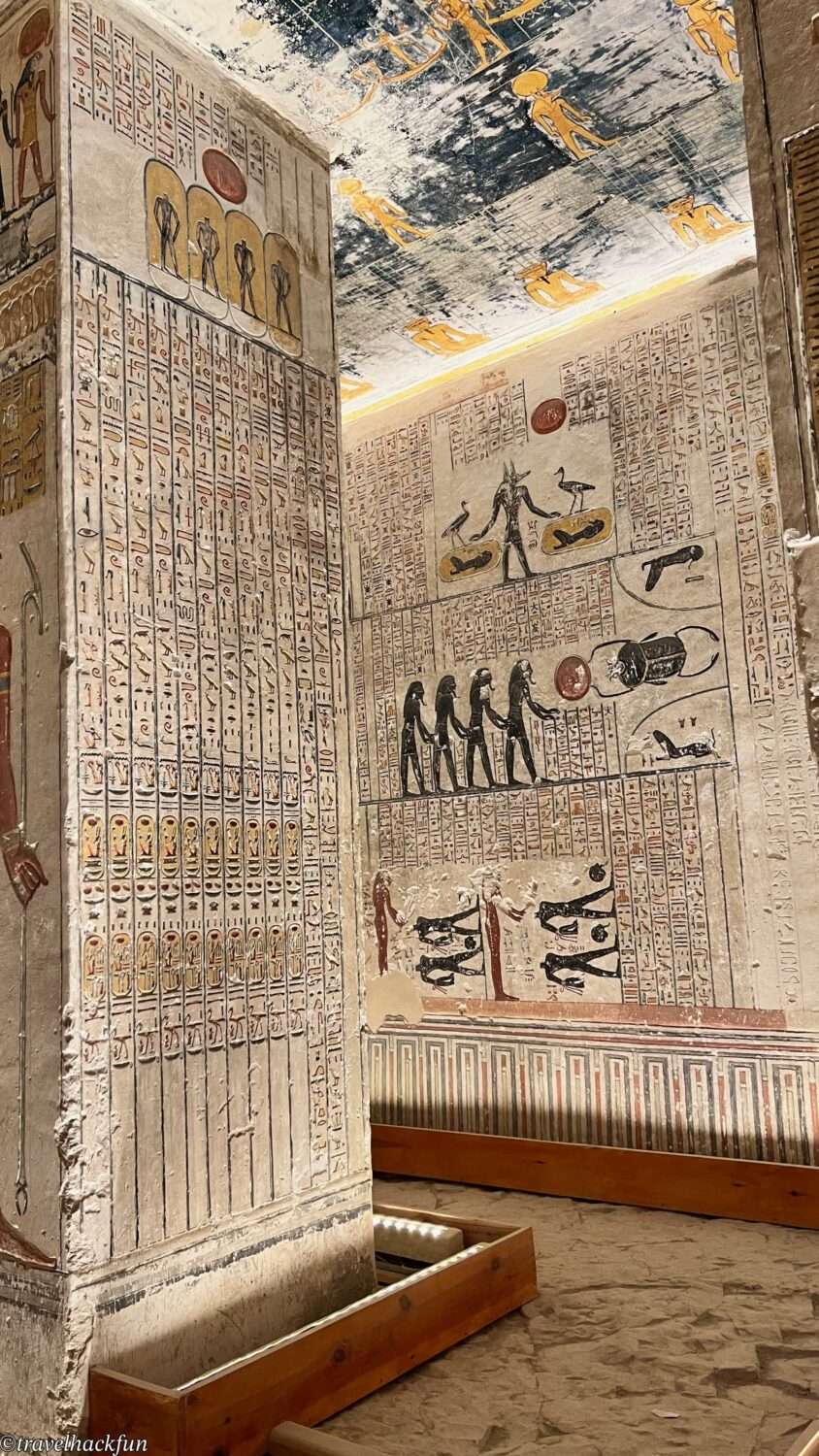
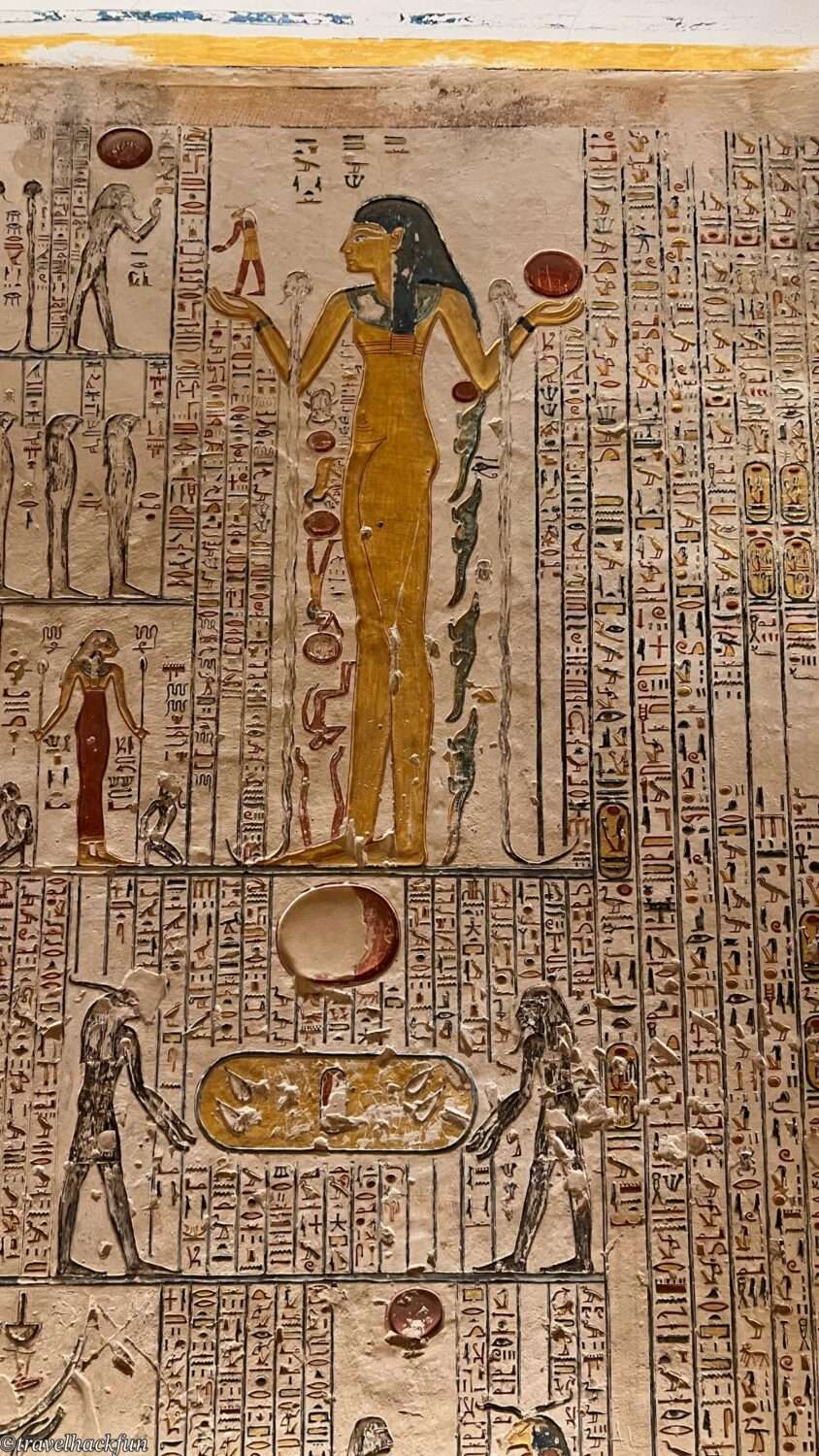
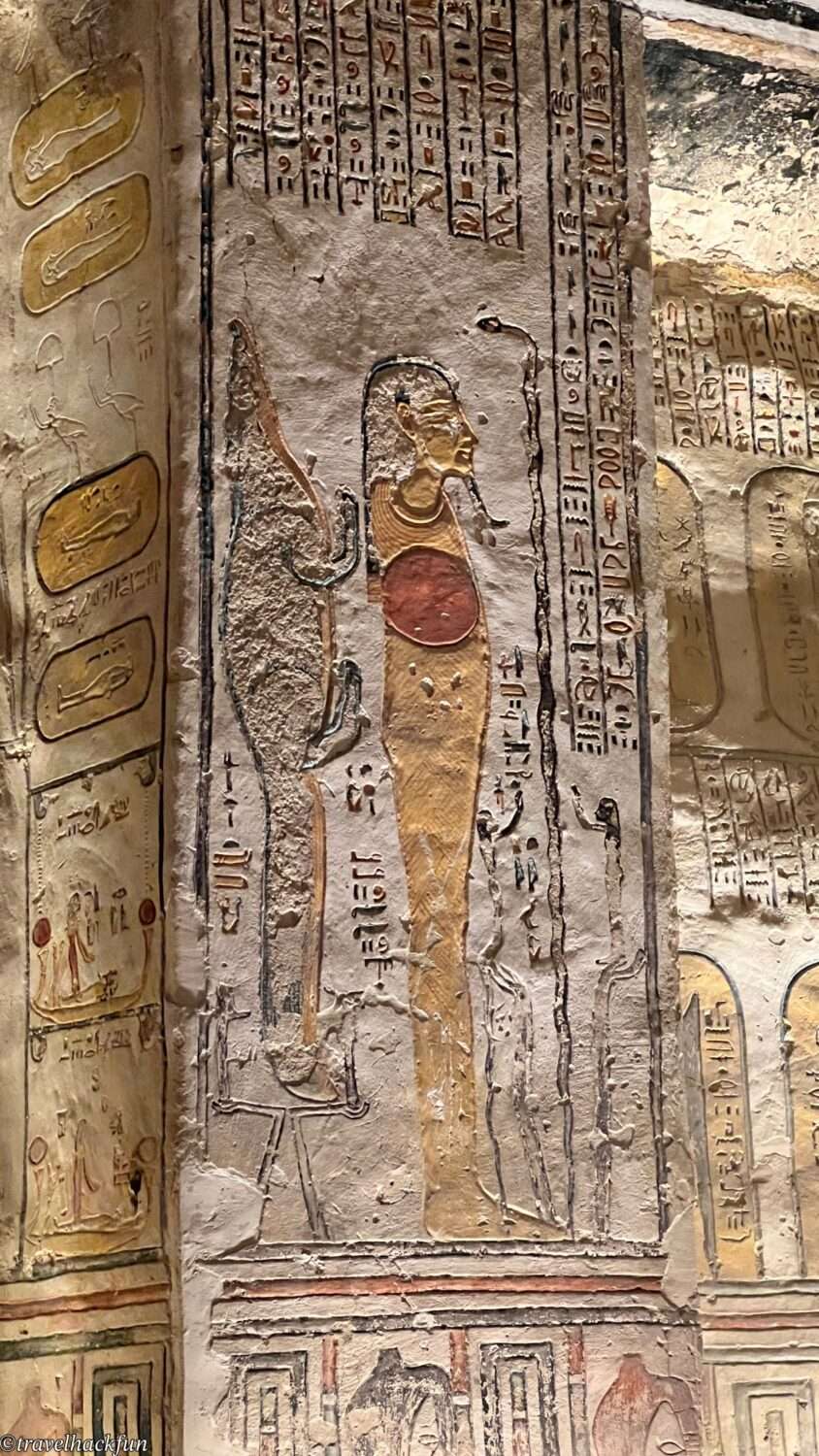
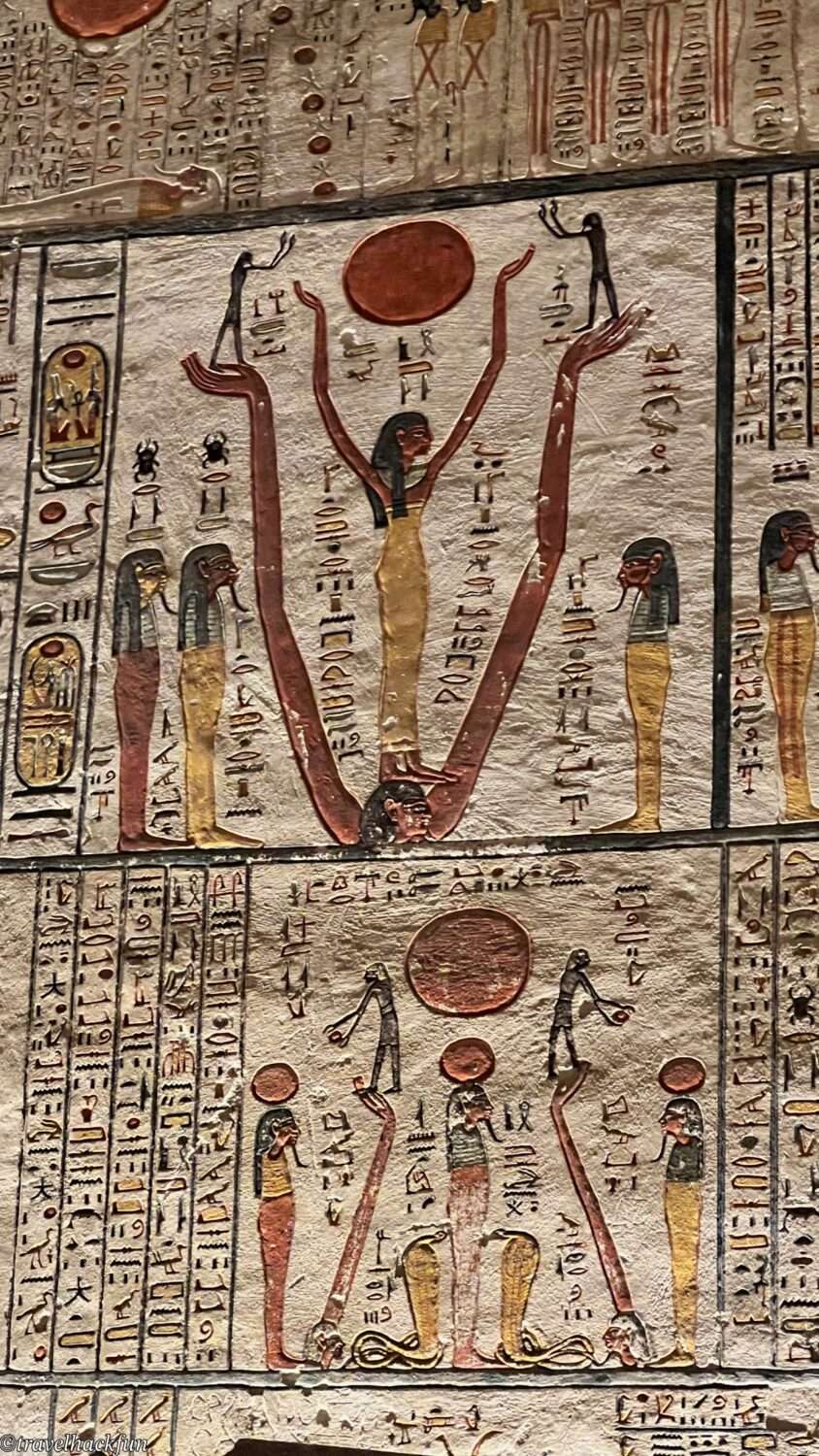
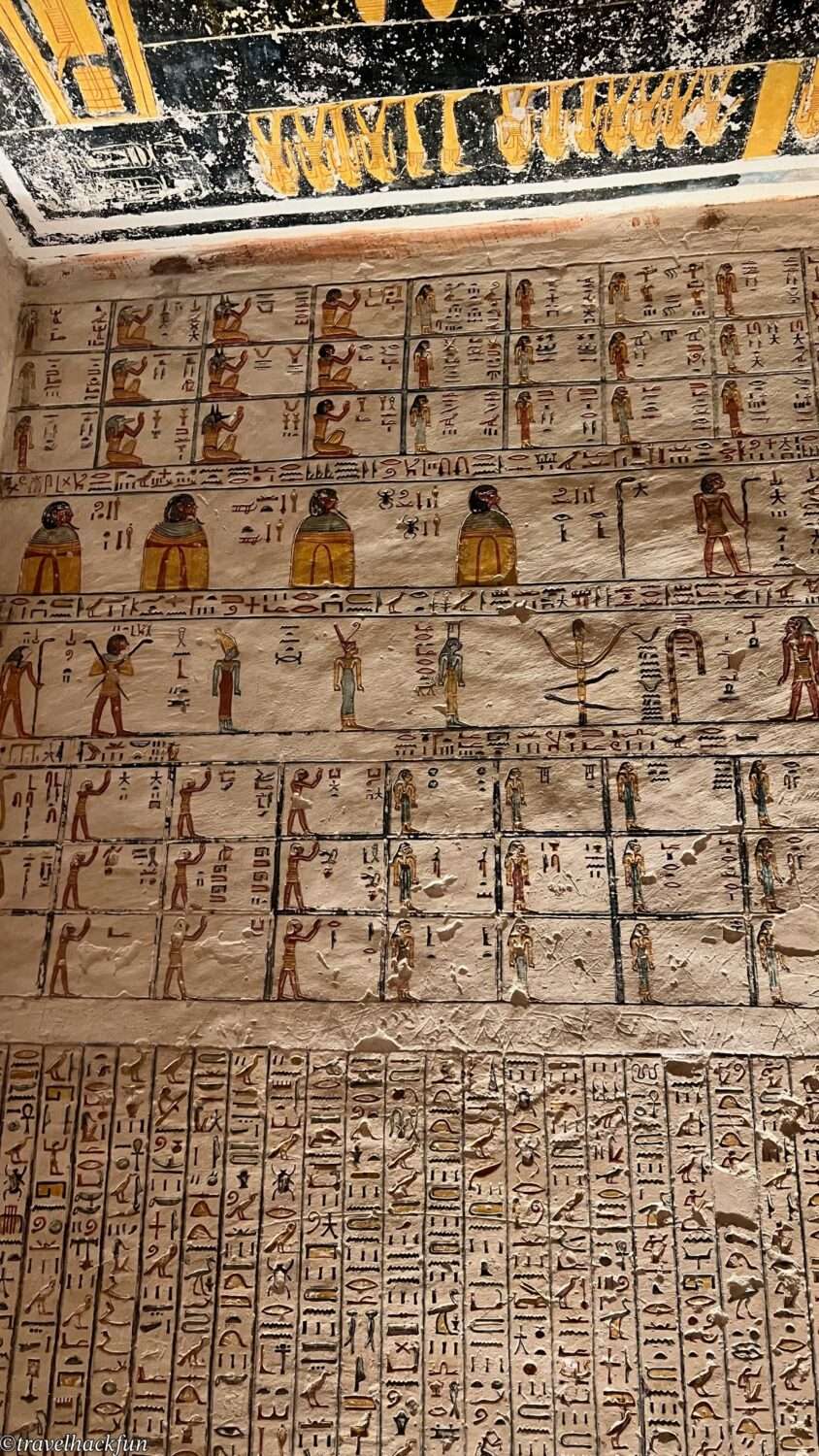
As you walk deeper into the main burial chamber, you’ll find the remnants of a massive sarcophagus, surrounded by walls adorned with mythological scenes related to regeneration and resurrection, reflecting the pharaoh’s yearning for immortality. Upon close observation, the mastery of ancient Egyptian artisans in their use of color and line work becomes strikingly evident. On the ceiling, the depiction of the goddess Nut swallowing the sun and giving birth to it again represents the ancient Egyptians' poetic interpretation of the eternal cycle of life.

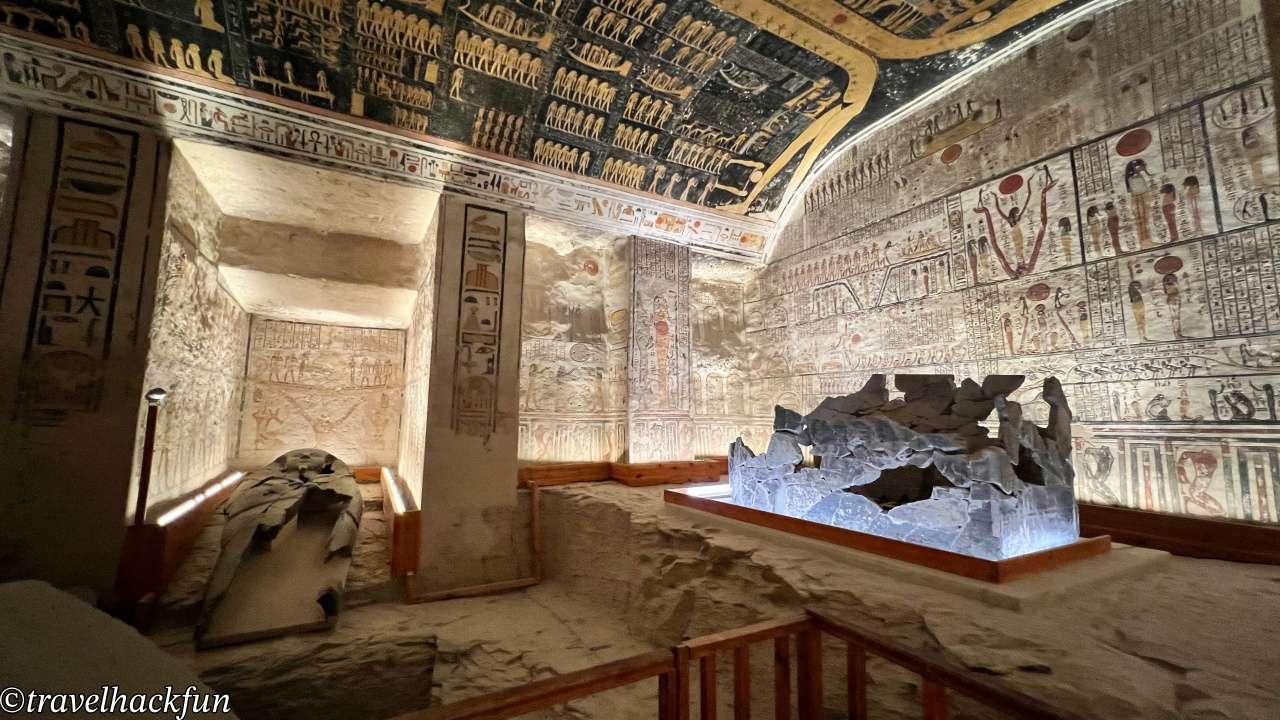
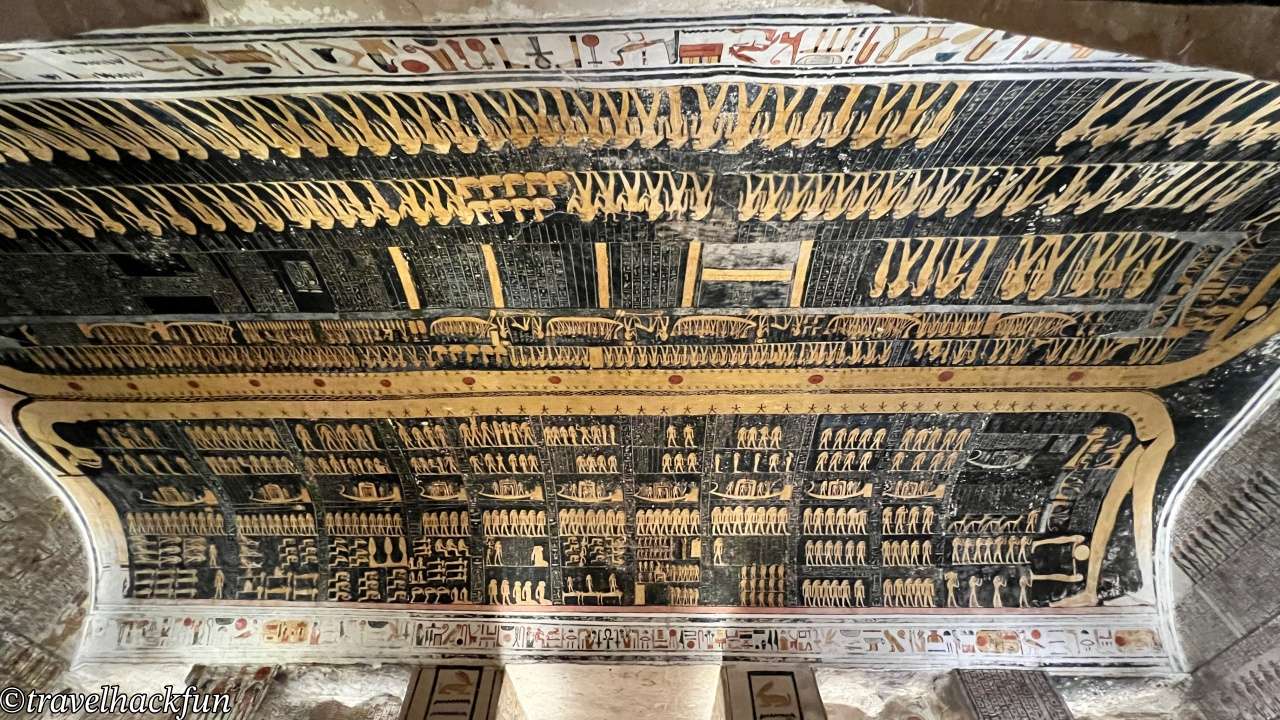
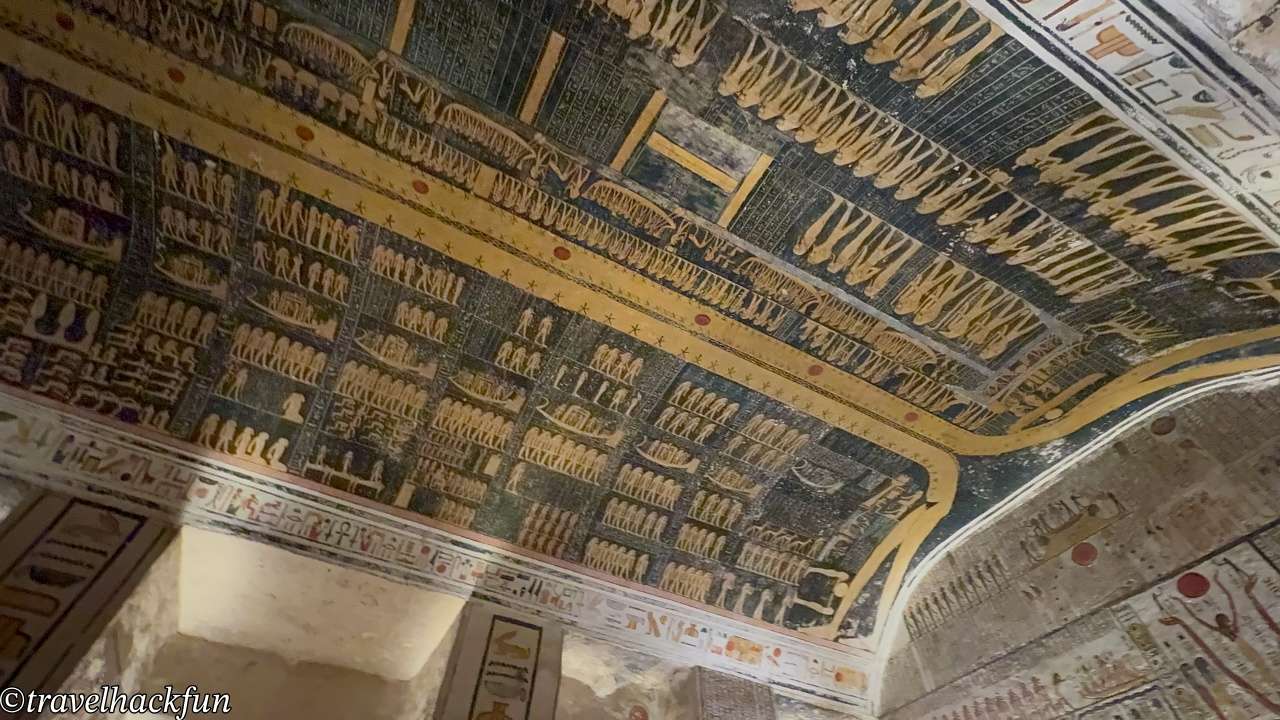
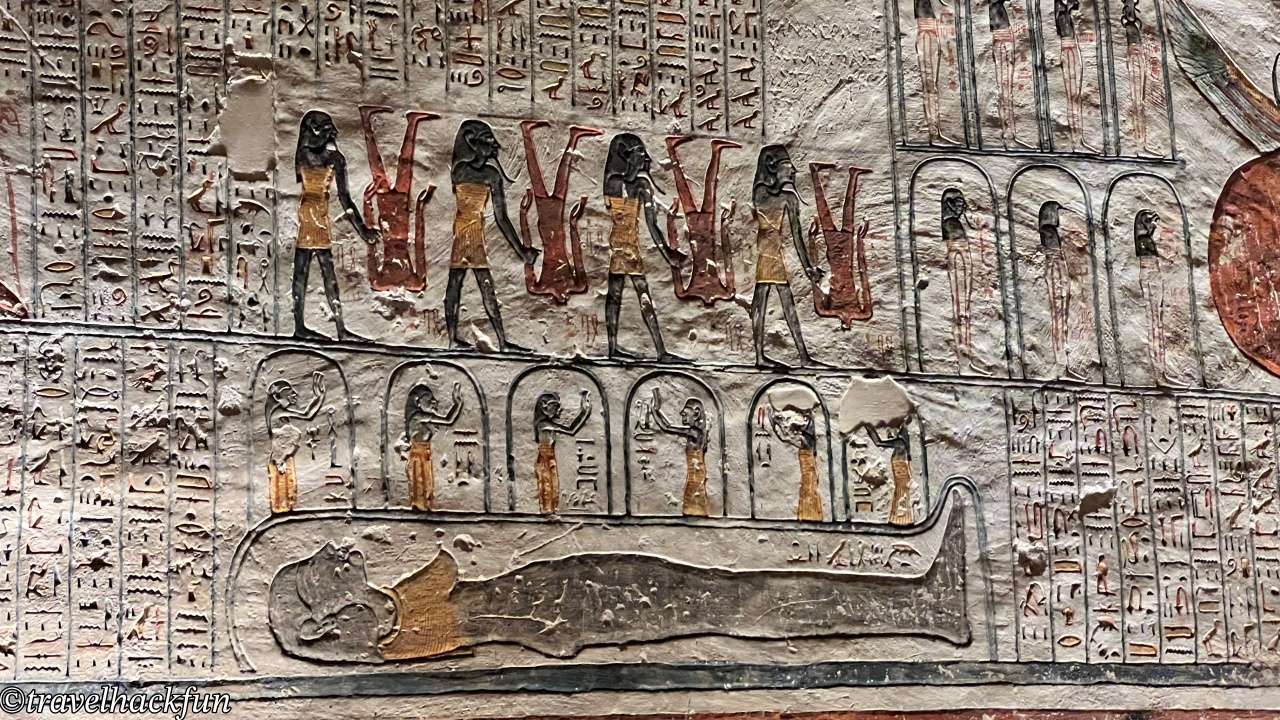
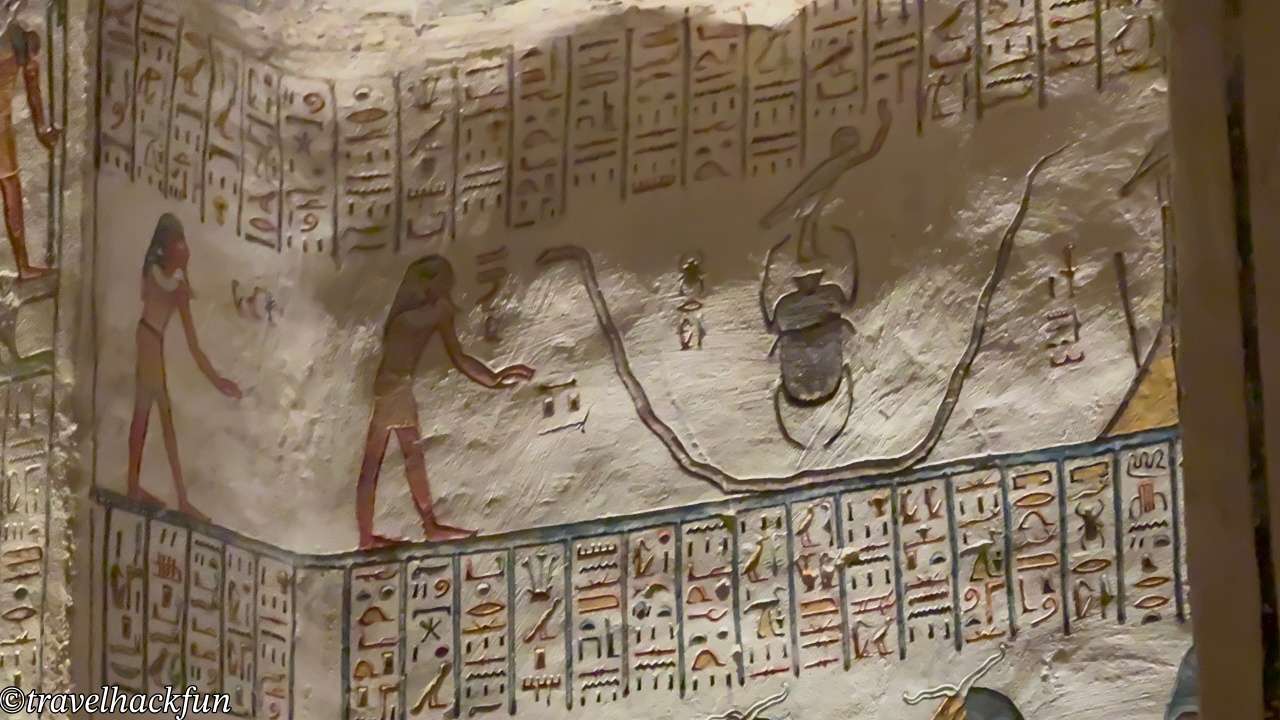
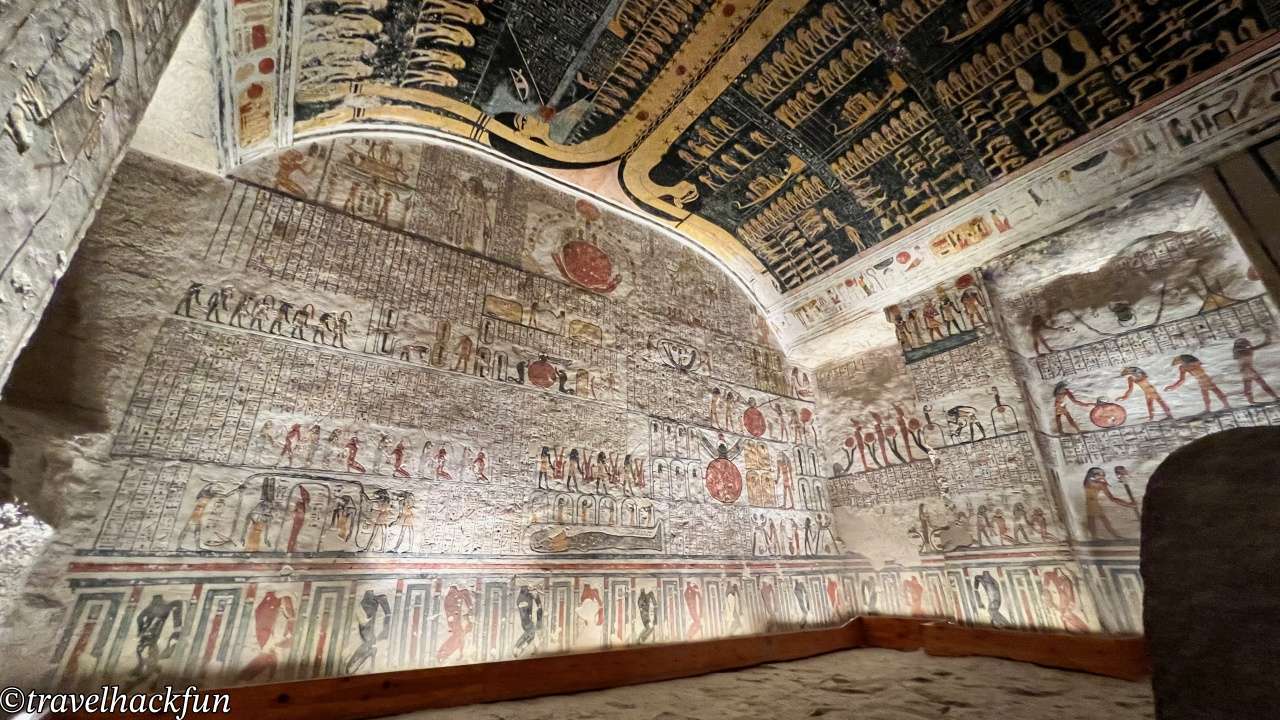
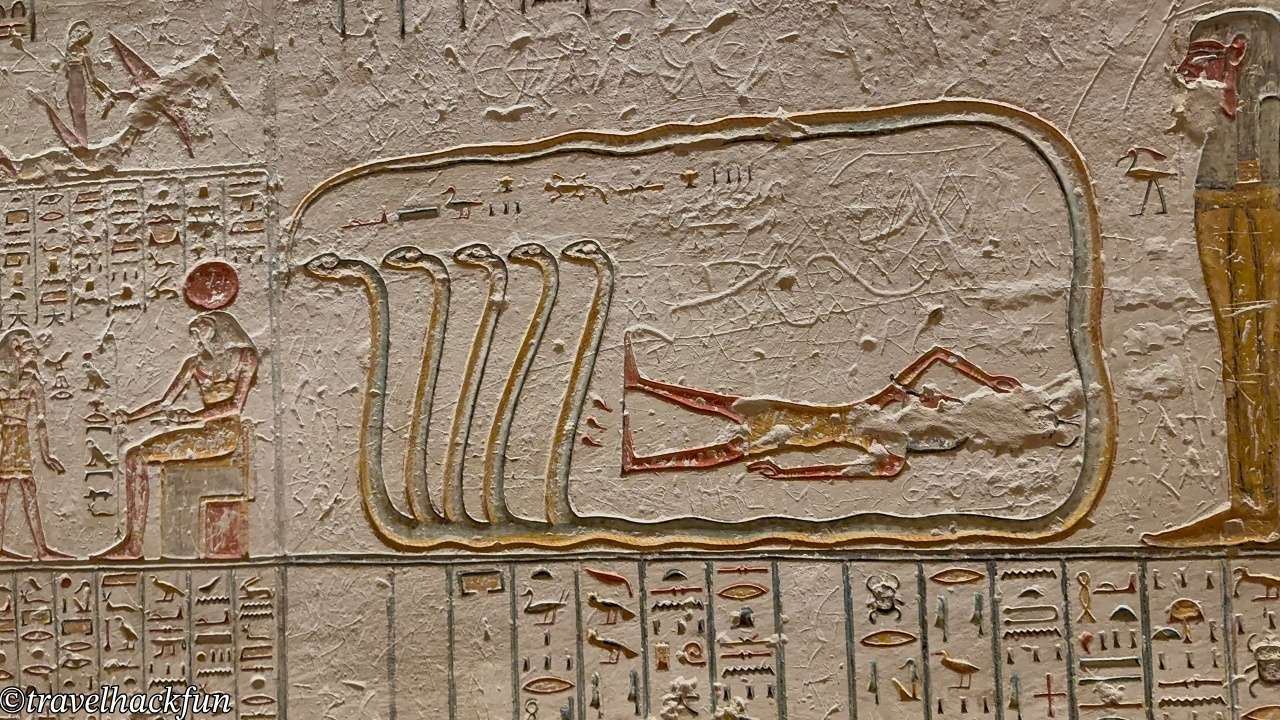
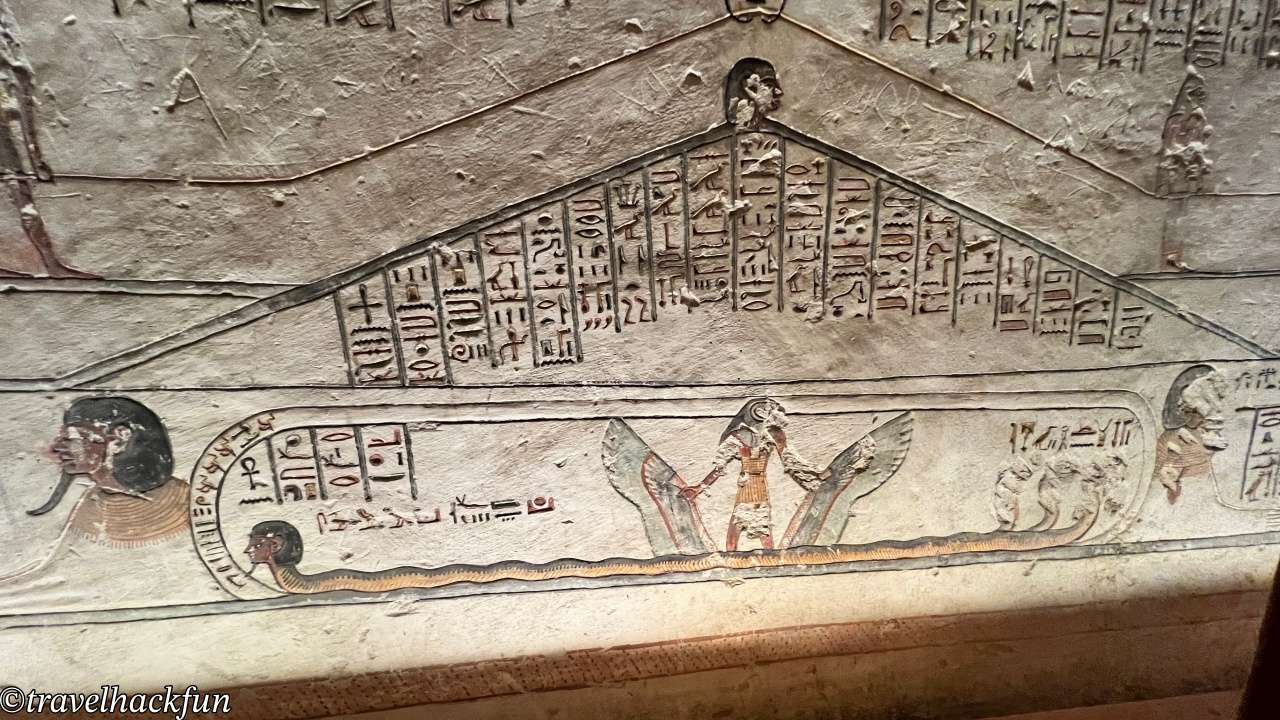

KV62 | Tomb of Tutankhamen
Tutankhamun, the "boy pharaoh," may not have achieved monumental accomplishments in history, but his tomb, unearthed in near-perfect condition in 1922 by British archaeologist Howard Carter, captured the world's imagination. Filled with gold ornaments, furniture, weapons, everyday objects, and more, it astonished the globe and became the quintessential symbol of modern perceptions of ancient Egypt.
Compared to many of the grand and elaborately decorated tombs in the Valley of the Kings, KV62 is actually quite small. If you are expecting a magnificent and spectacular tomb, you might feel a bit underwhelmed. Aside from the antechamber, which once housed beautifully crafted chairs, chariots, and gold-adorned chests, most of the key artifacts have now been relocated to museums. Visiting Tutankhamun's tomb requires a separate ticket, and the price is relatively high. If you have a particular interest in the boy king, it might be worth purchasing the ticket; however, if your time or budget is limited, you could prioritize visiting other tombs with remarkable murals and save your exploration of Tutankhamun’s treasures for the Egyptian Museum instead.

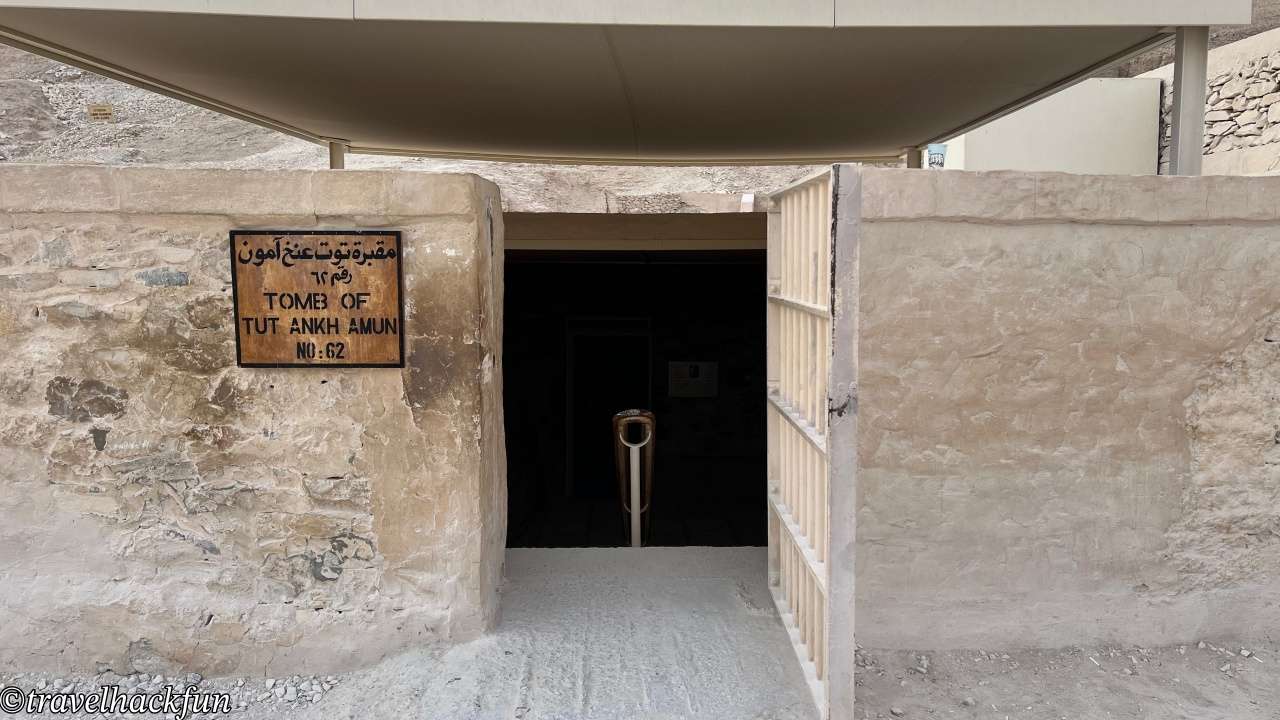
☕ Enjoying my travel notes?
You can Buy me a coffee to support what I do 🙌